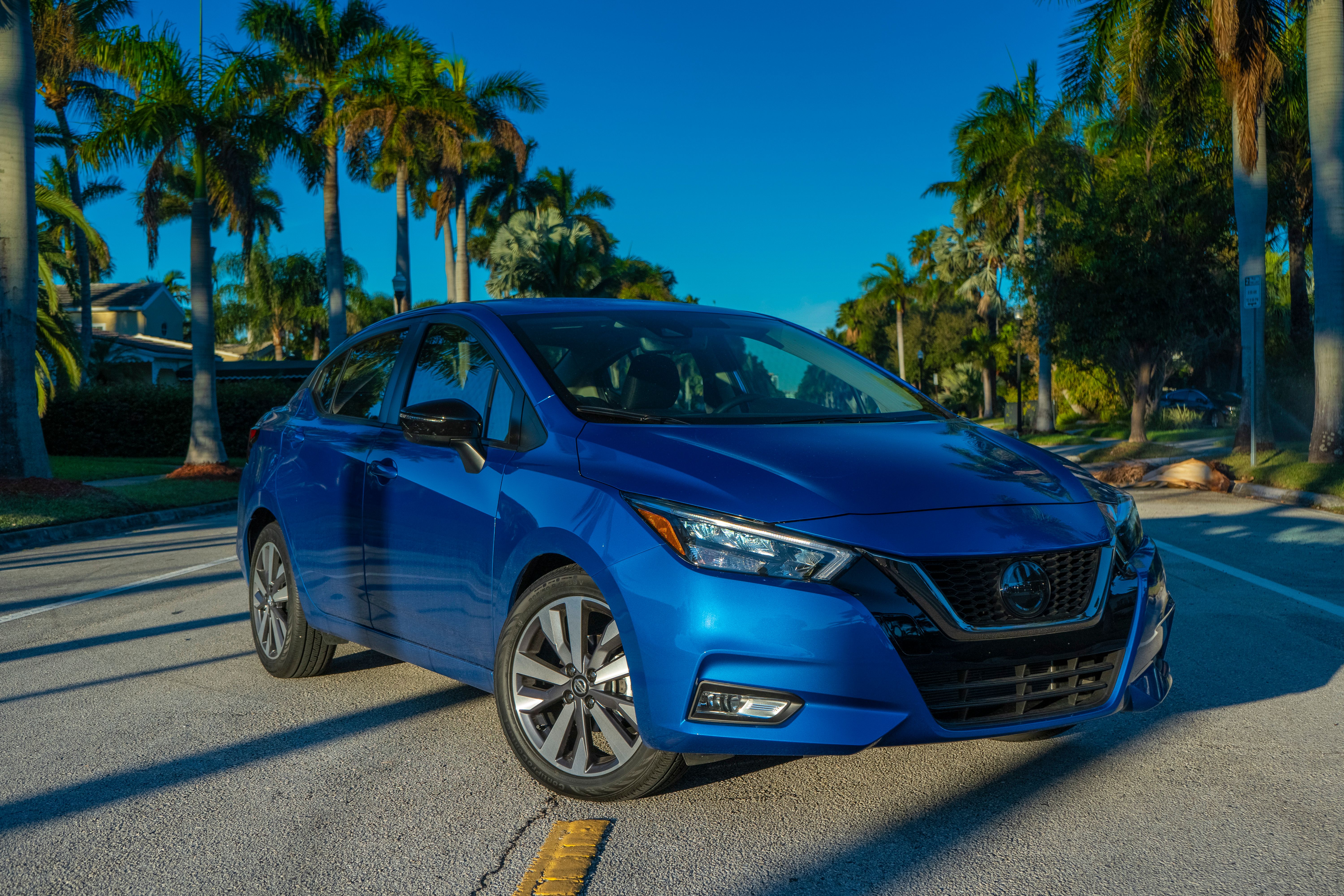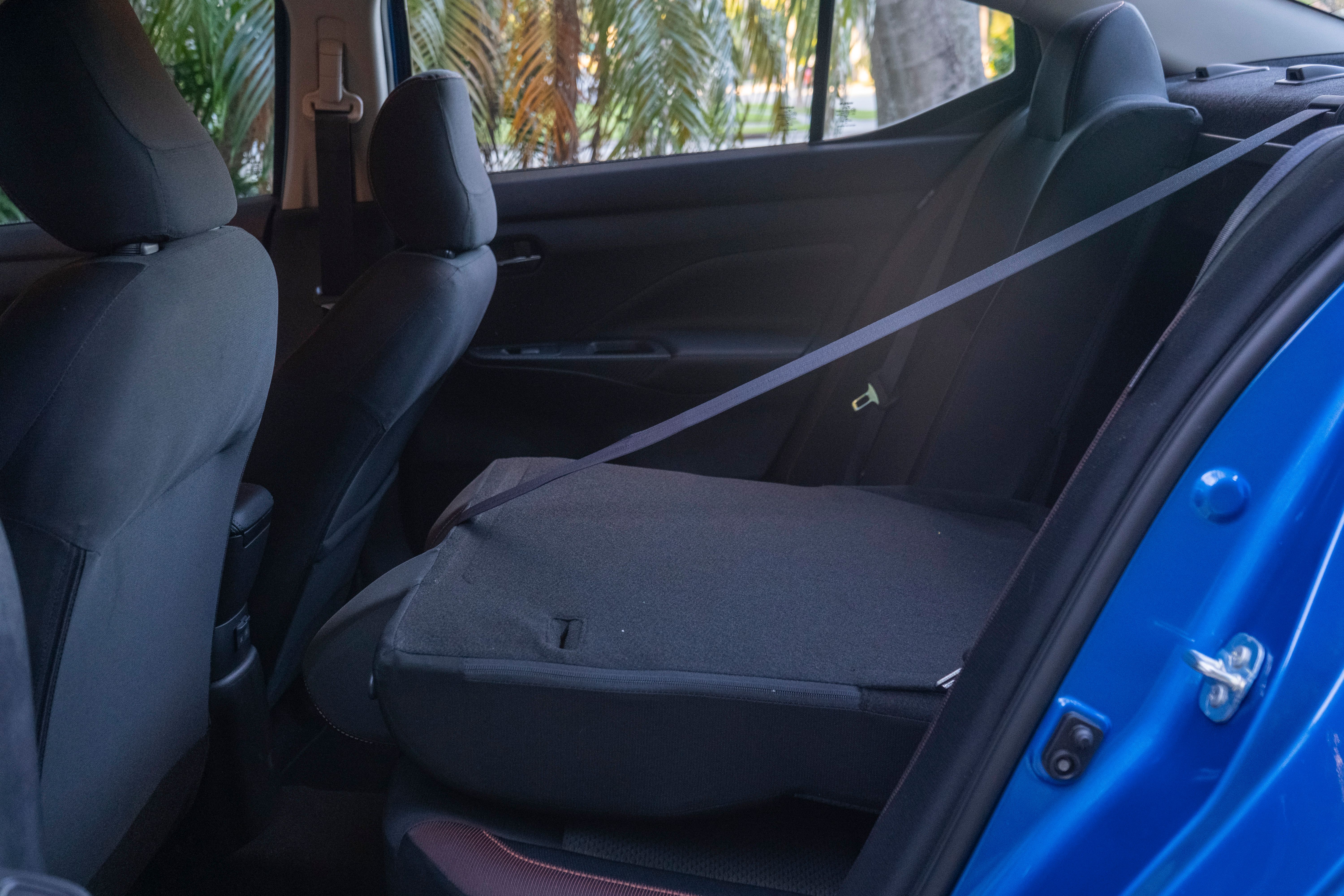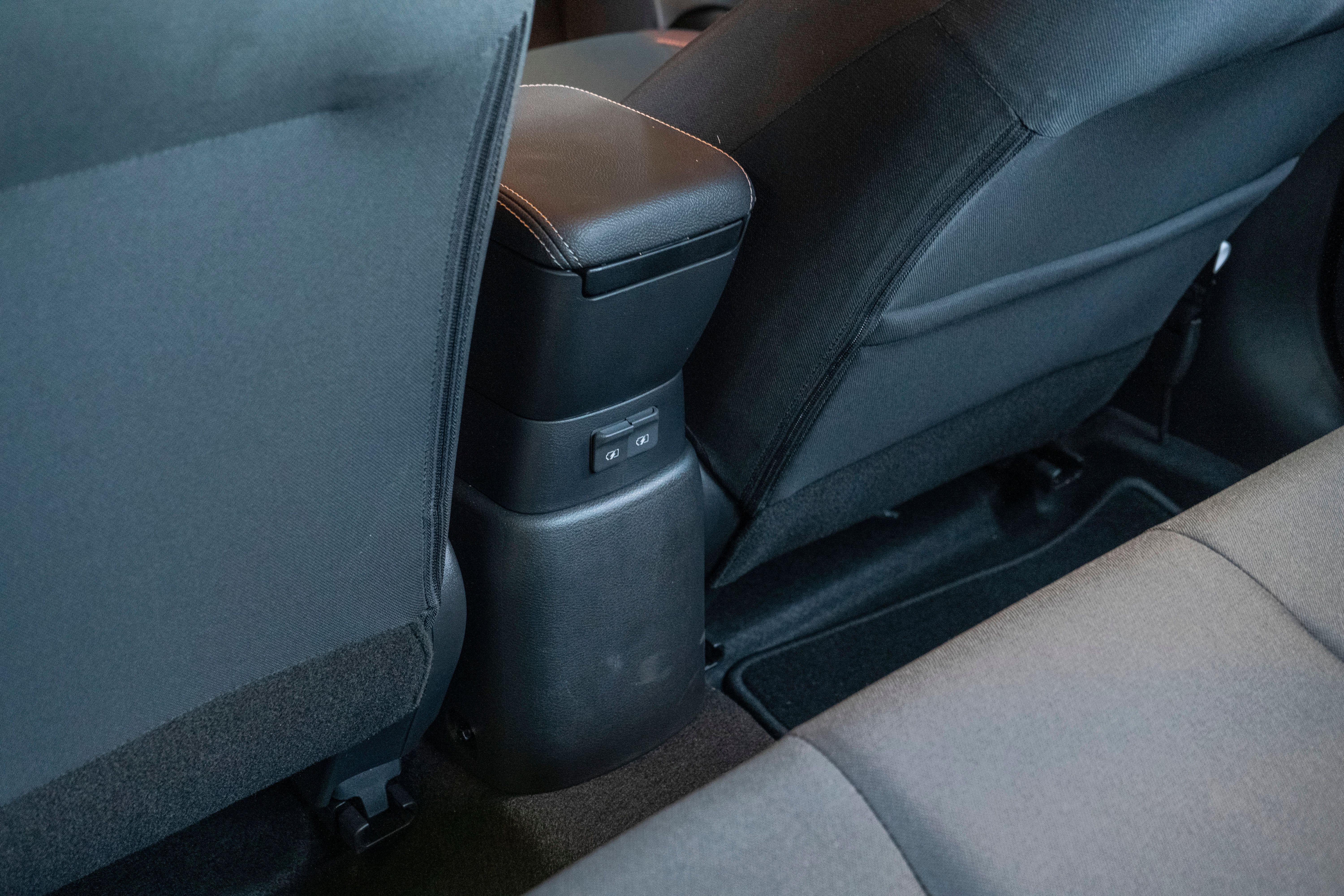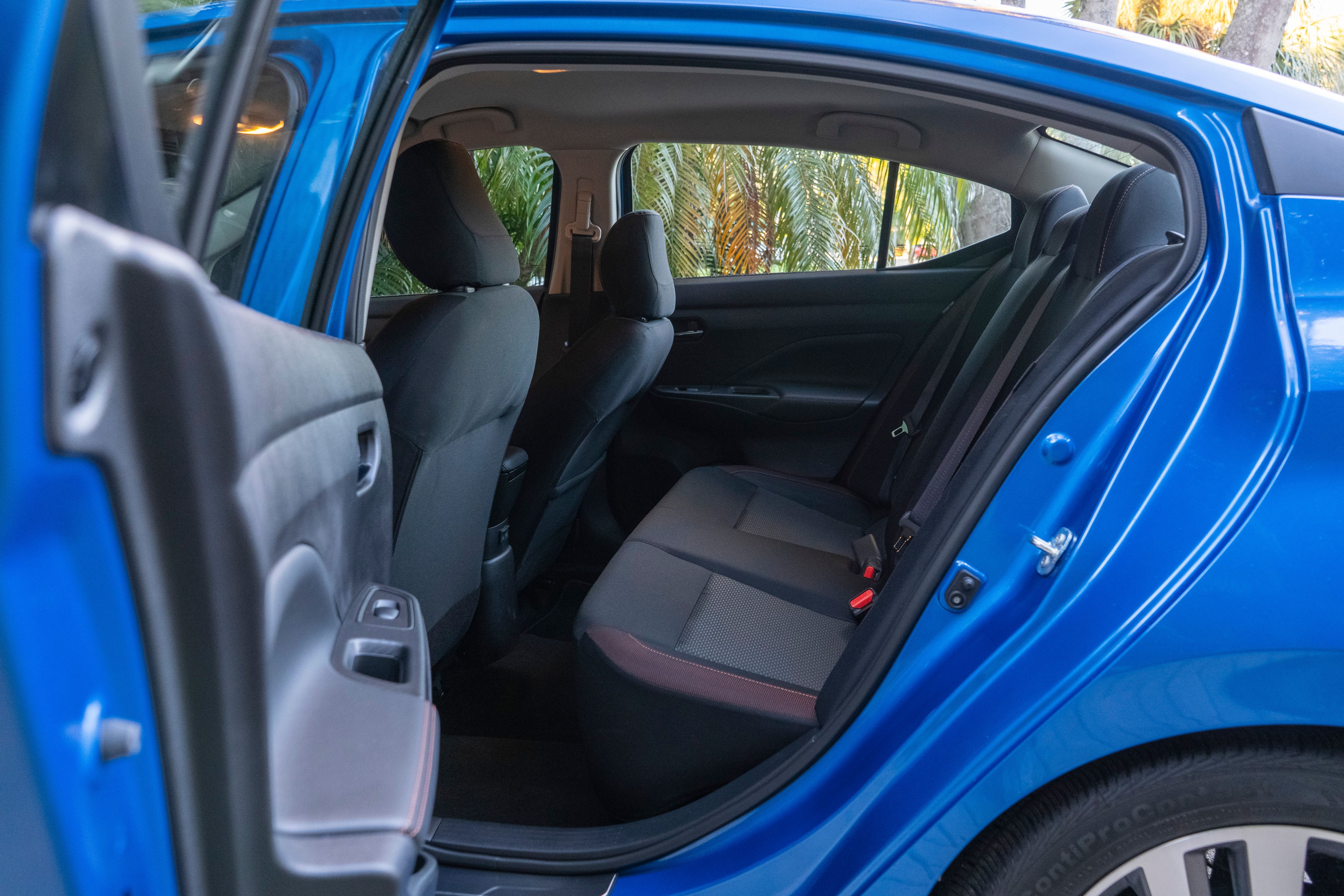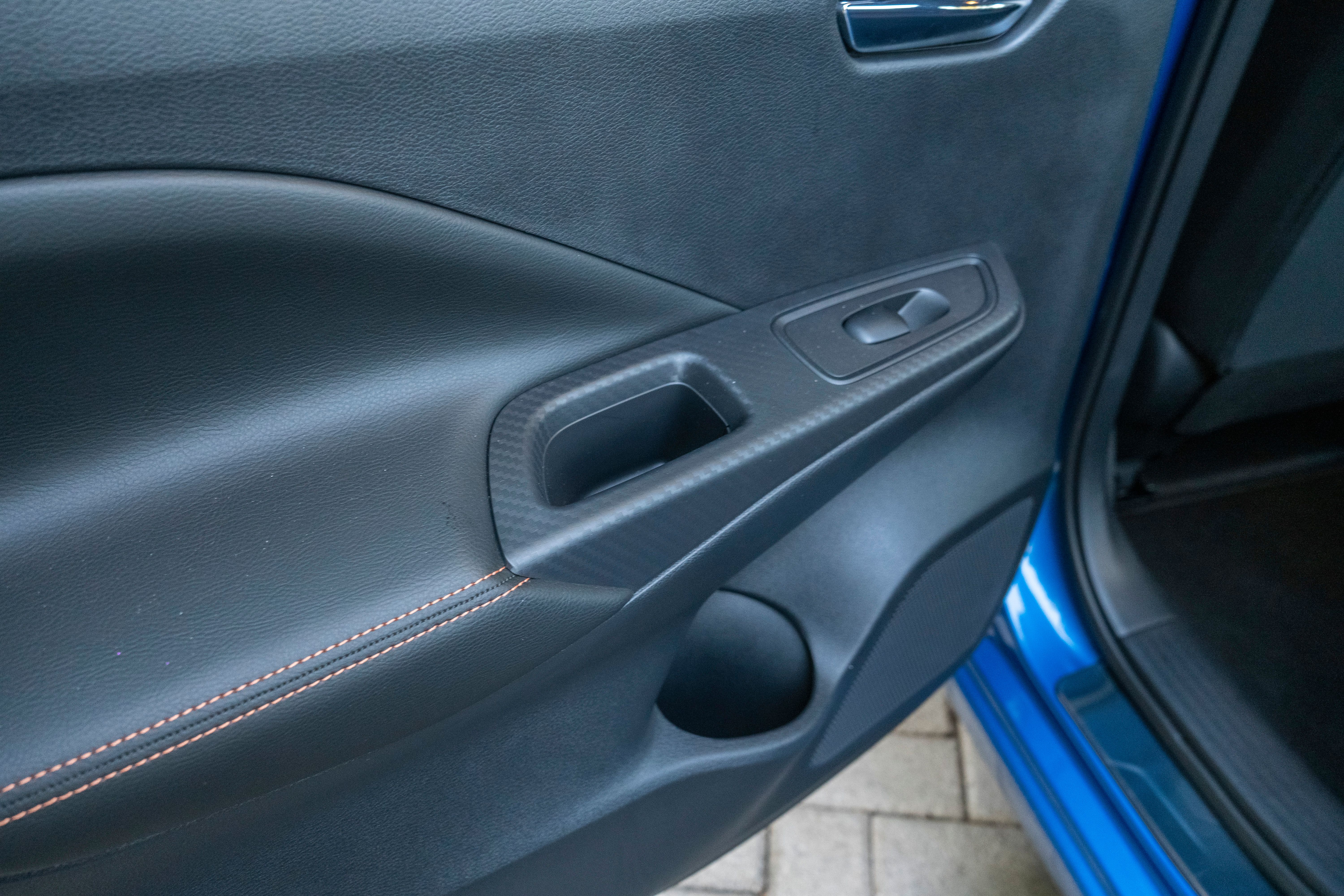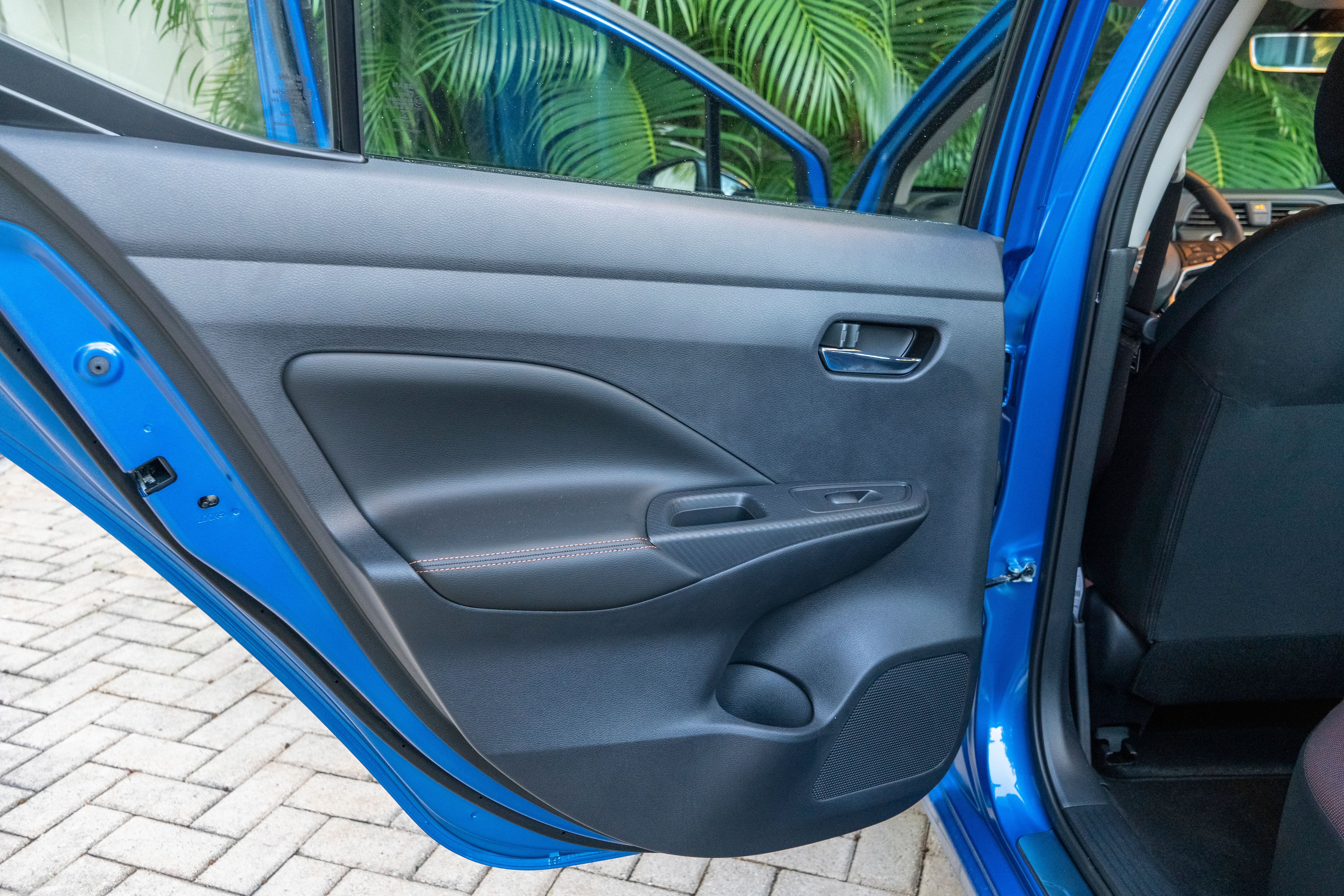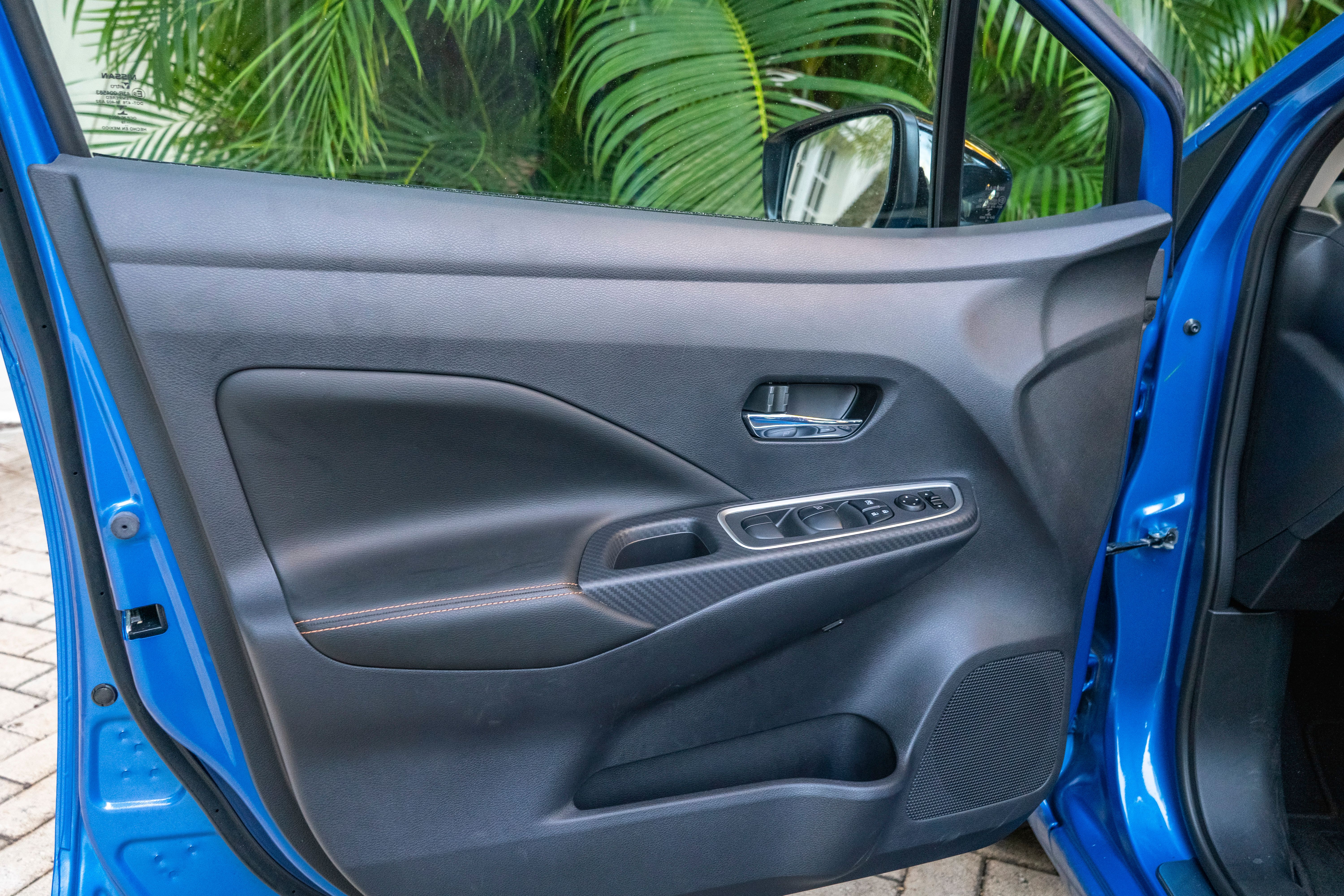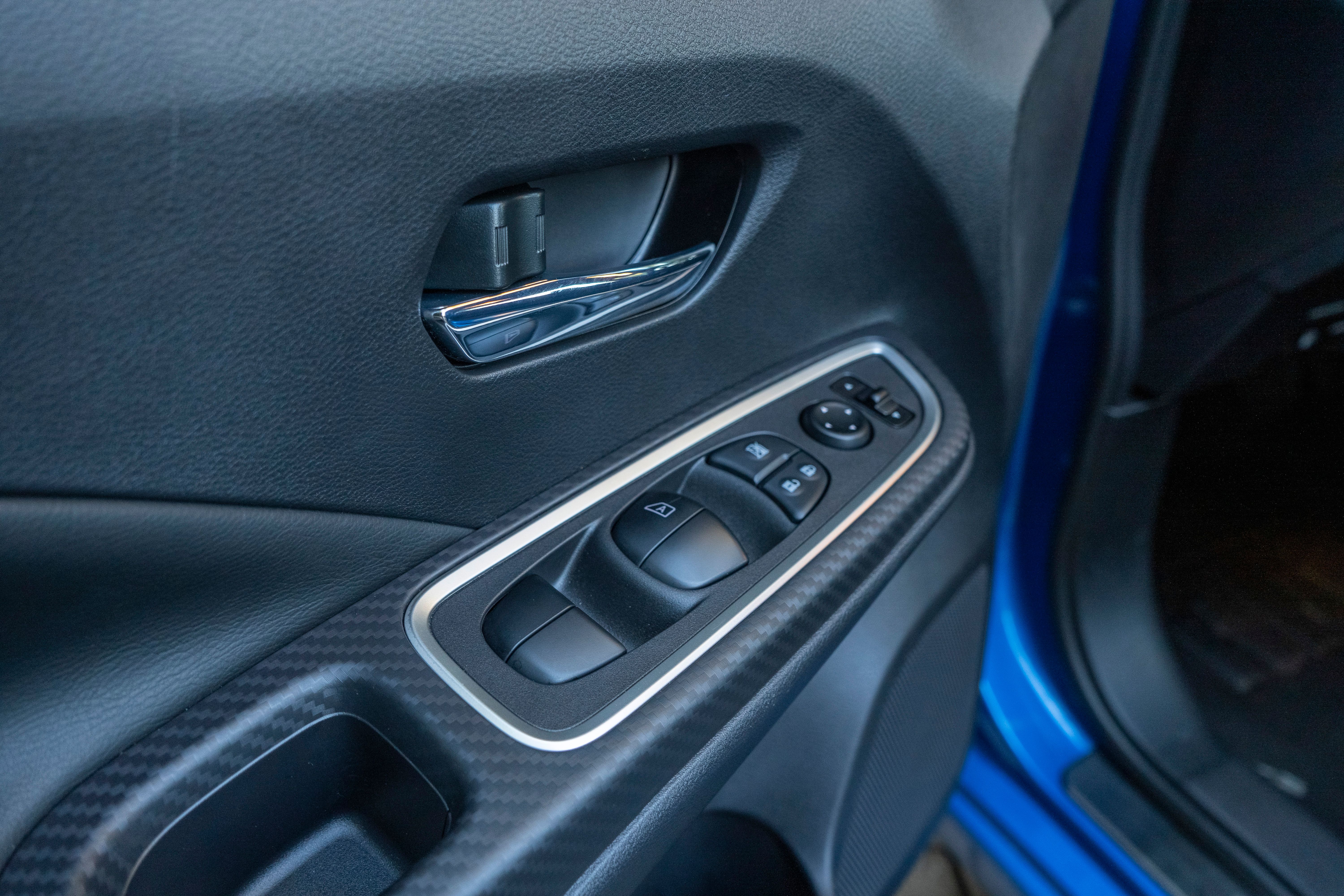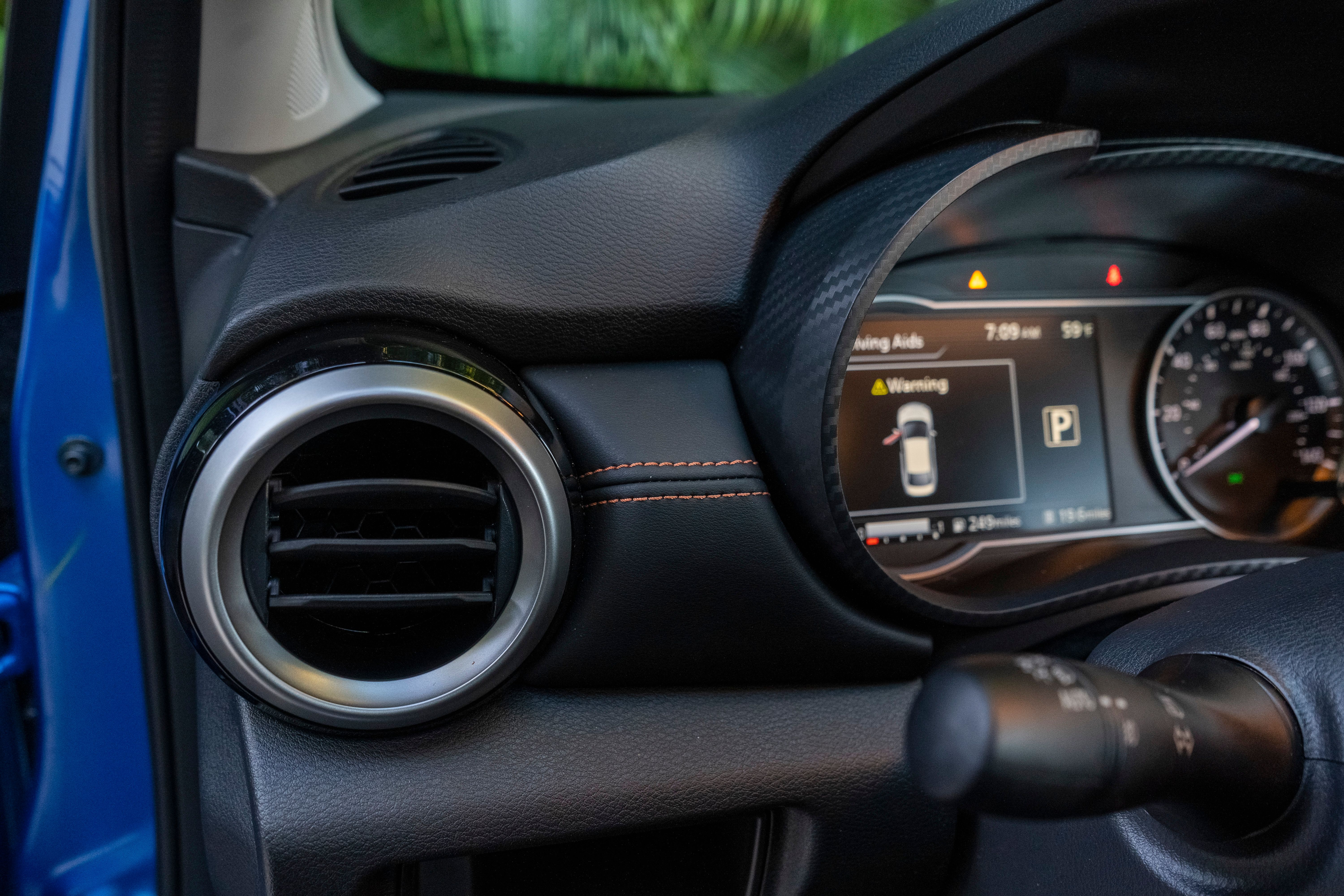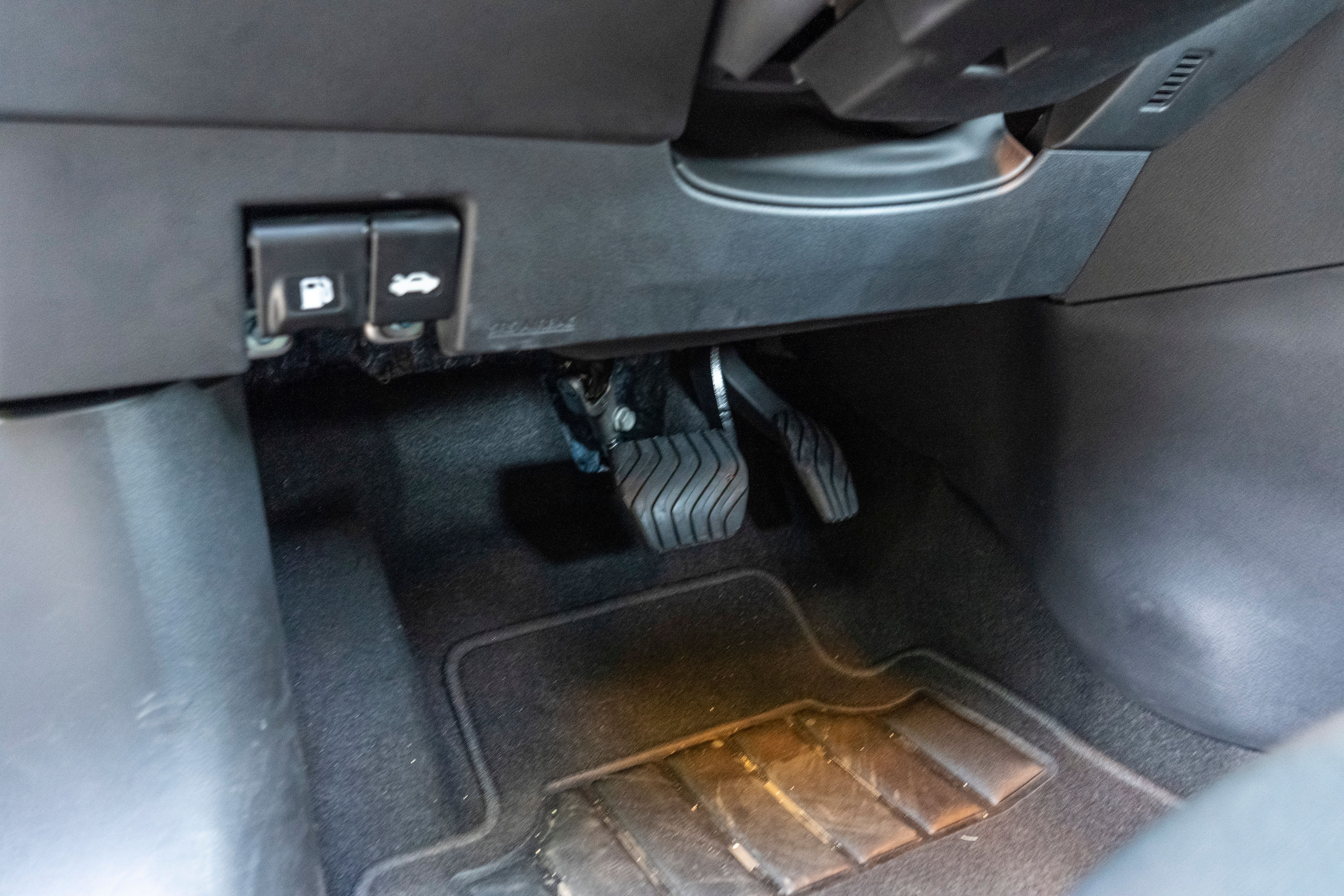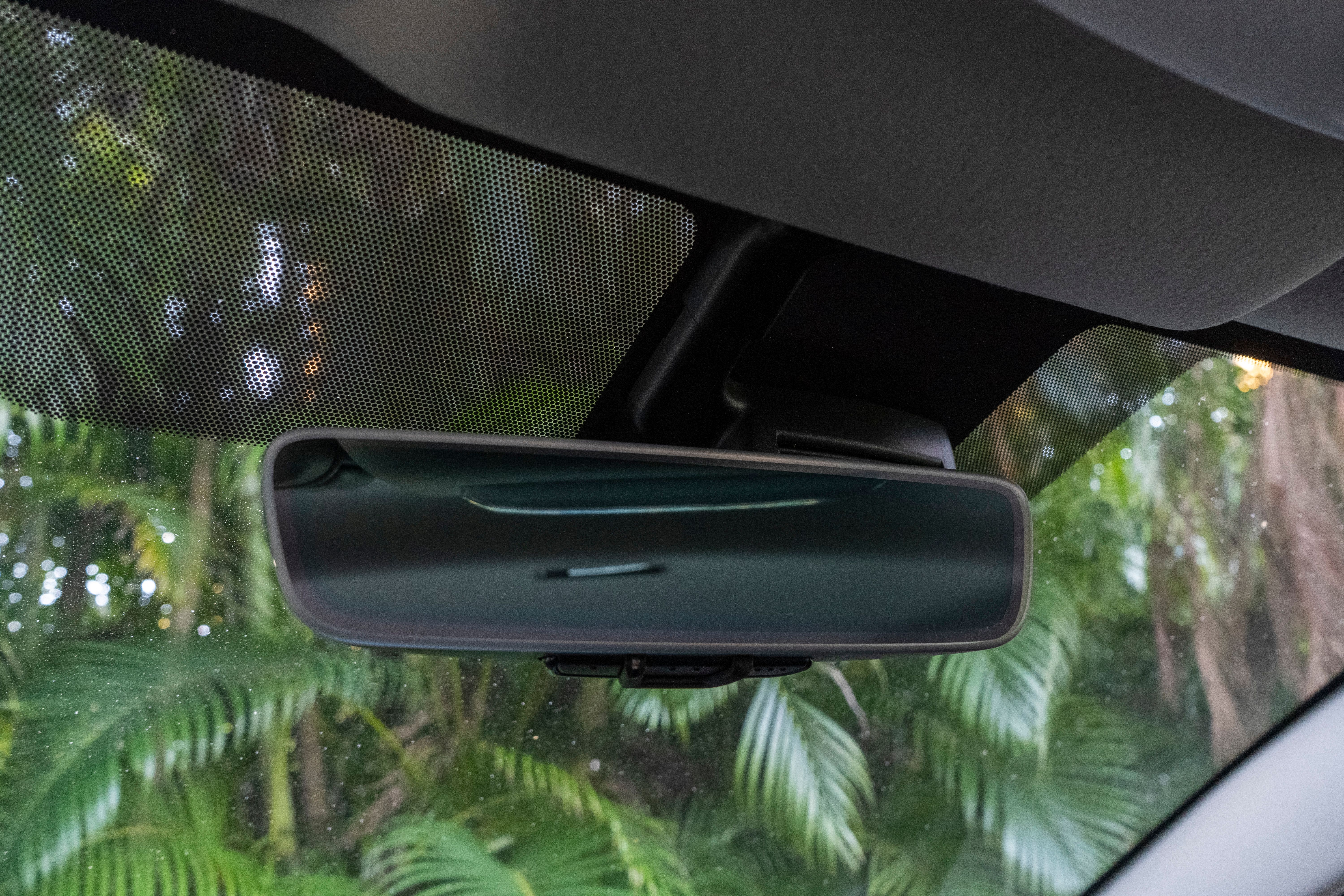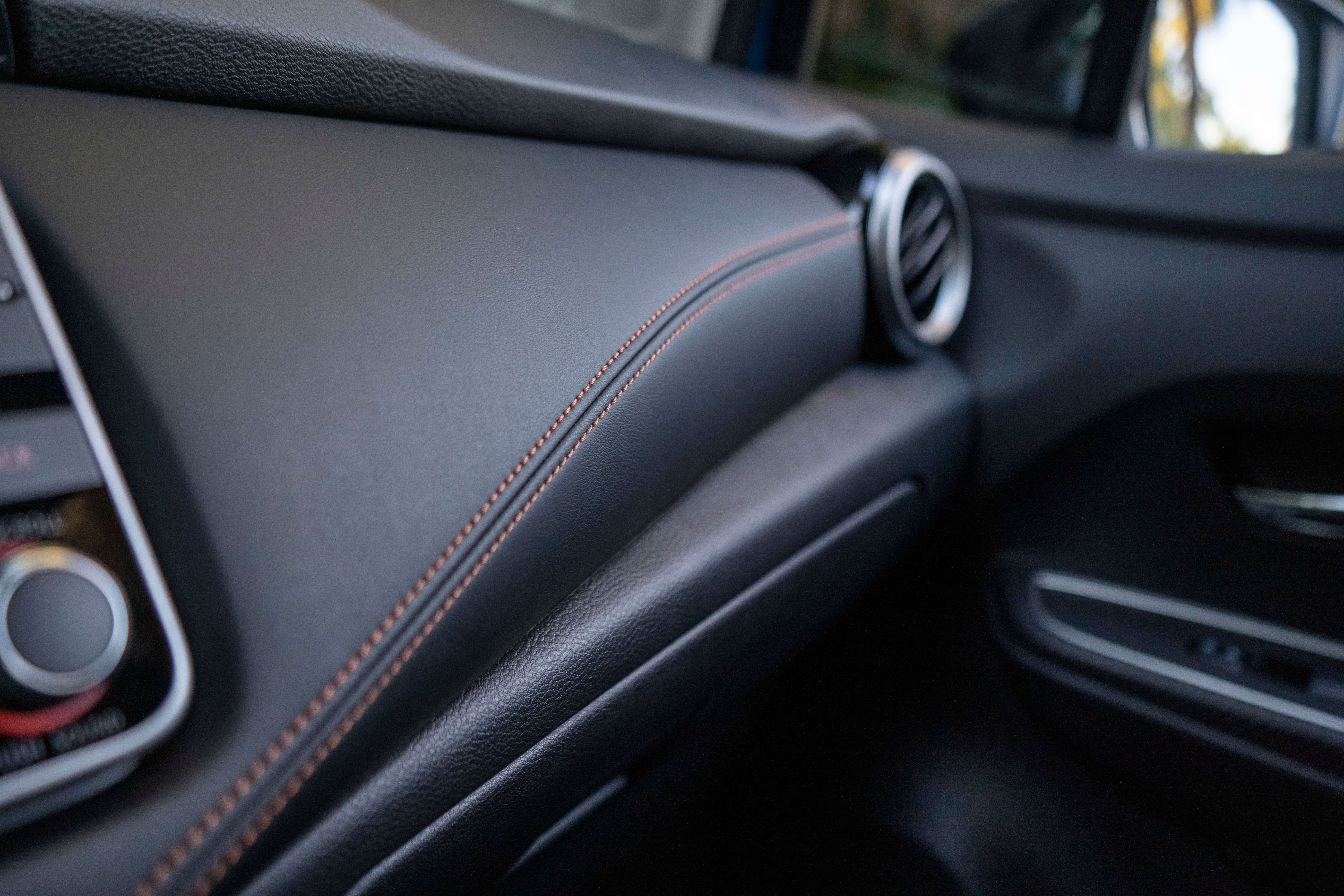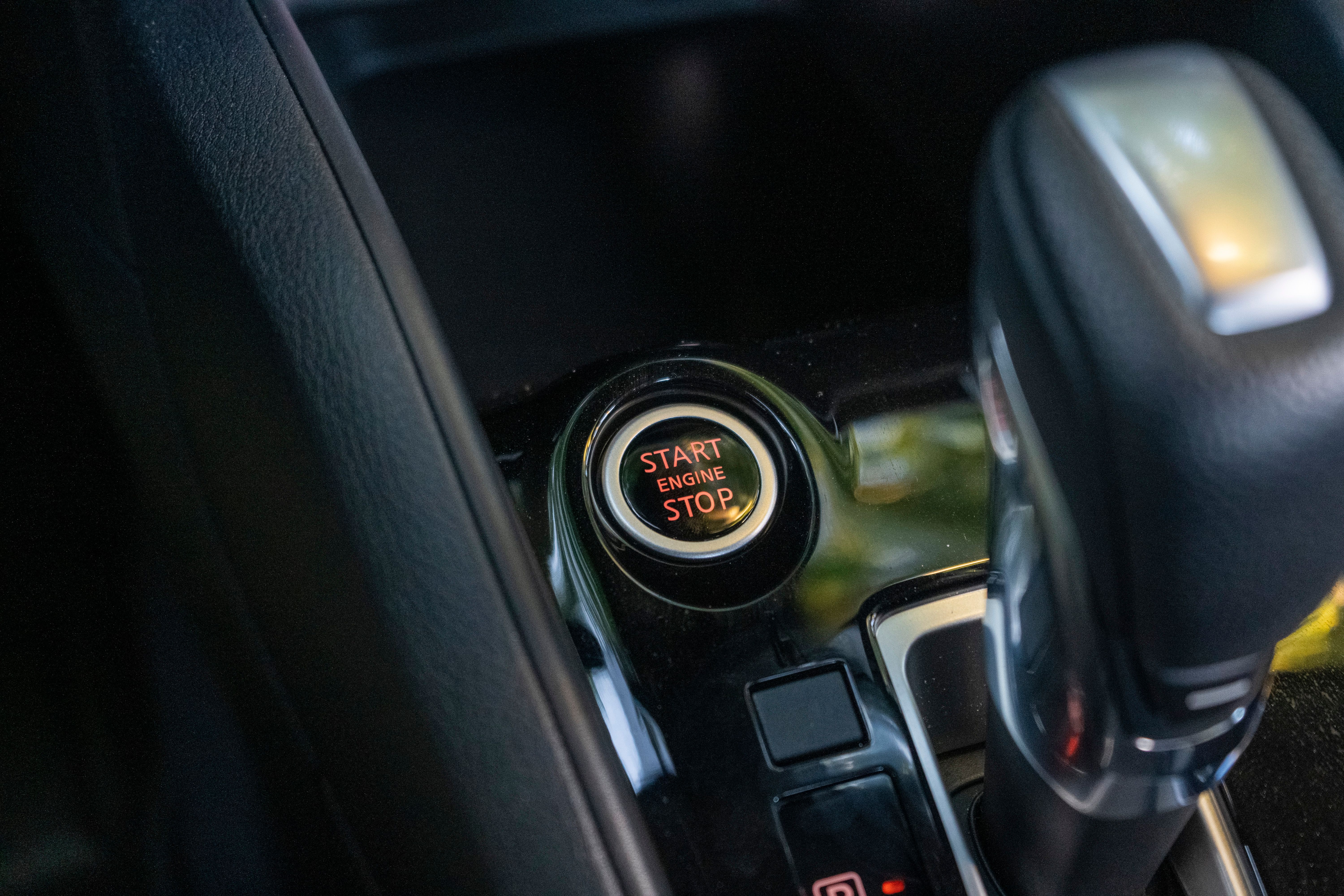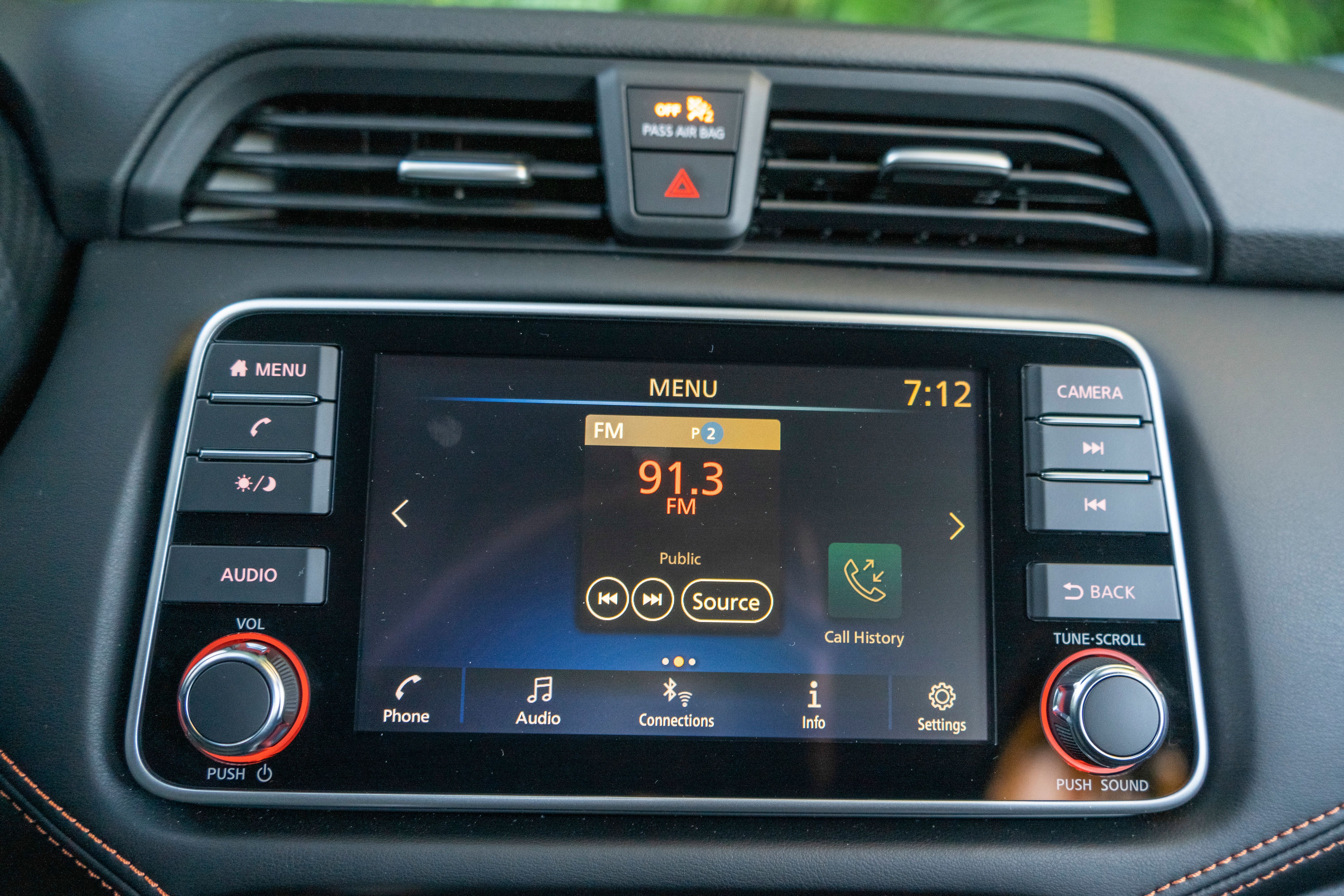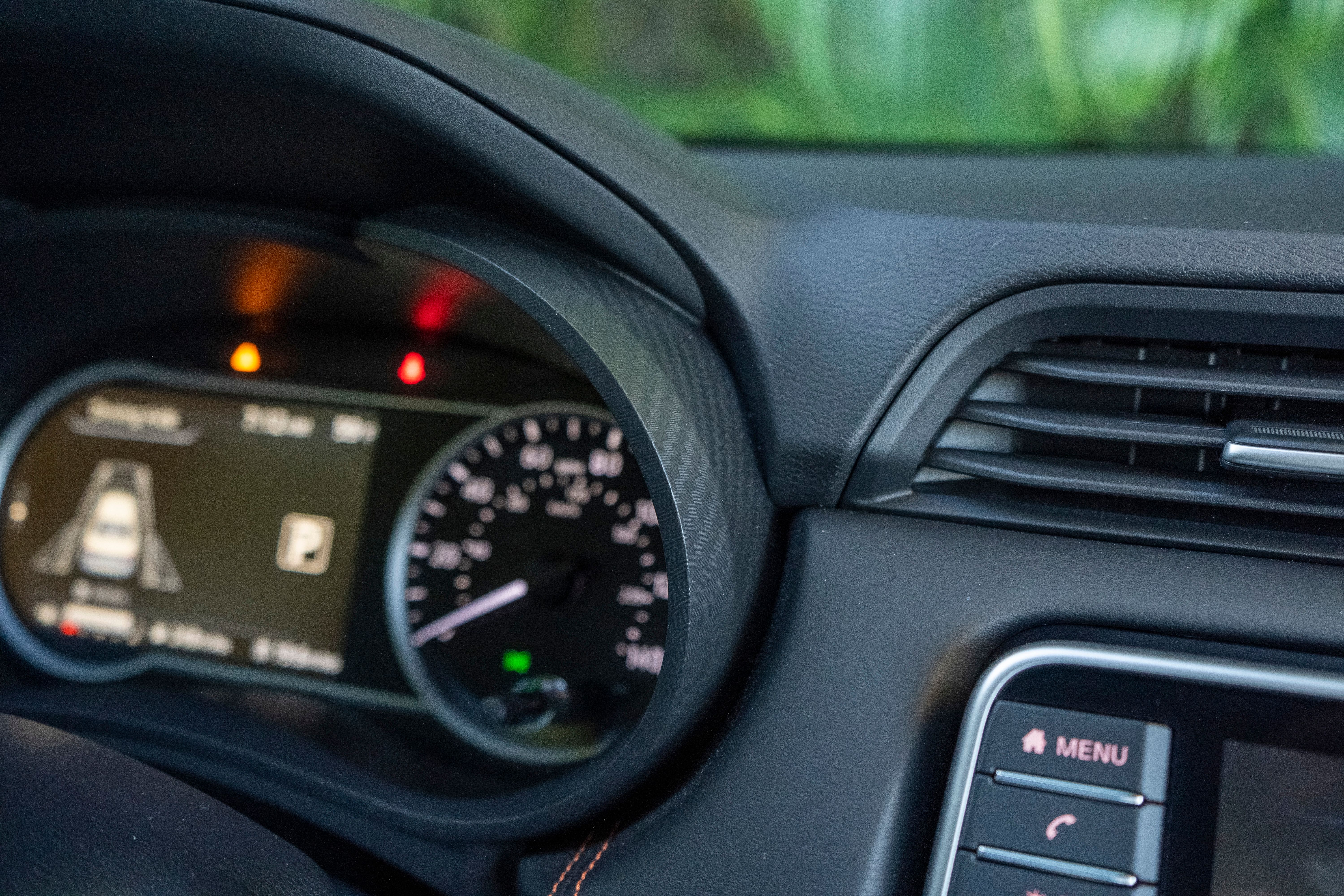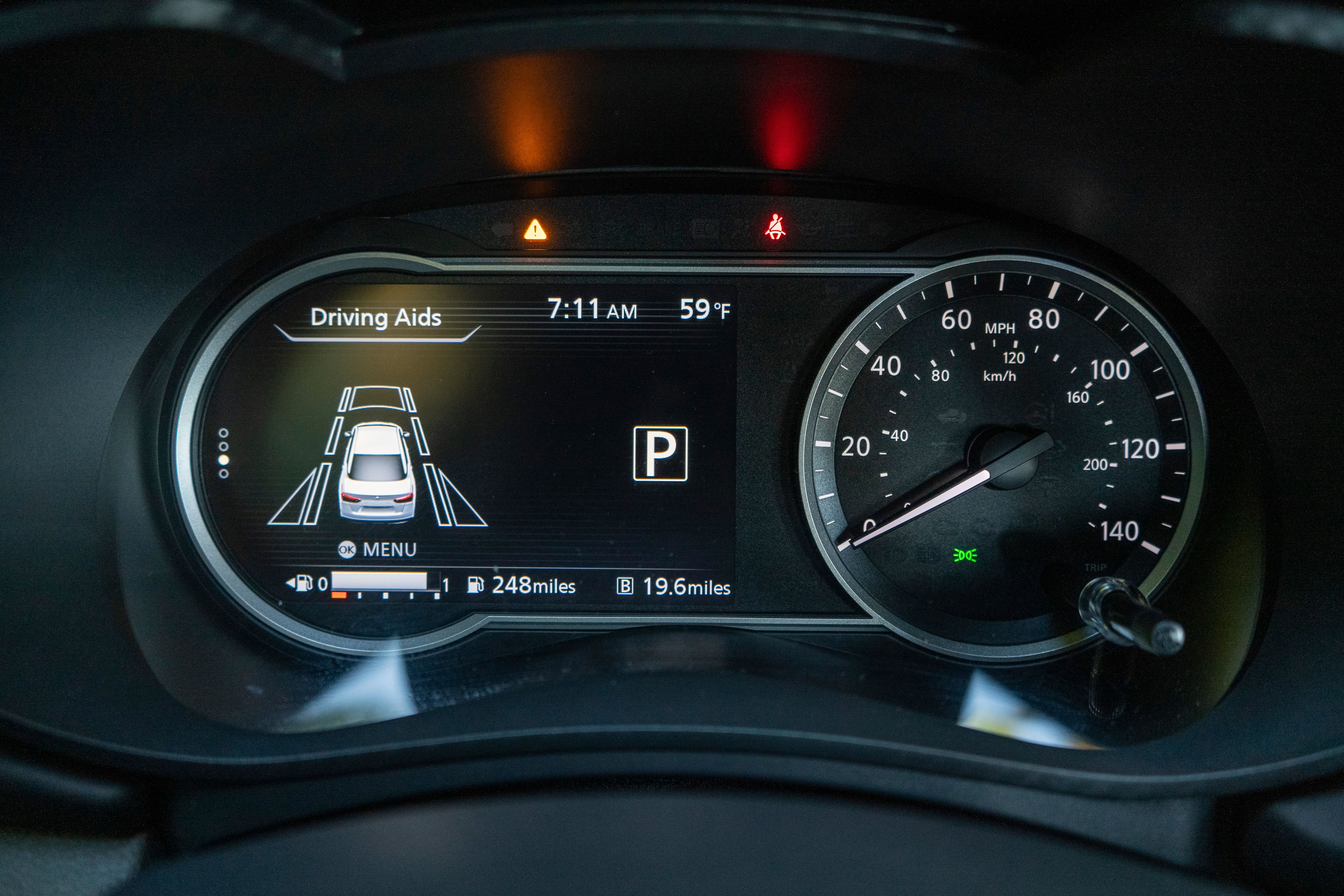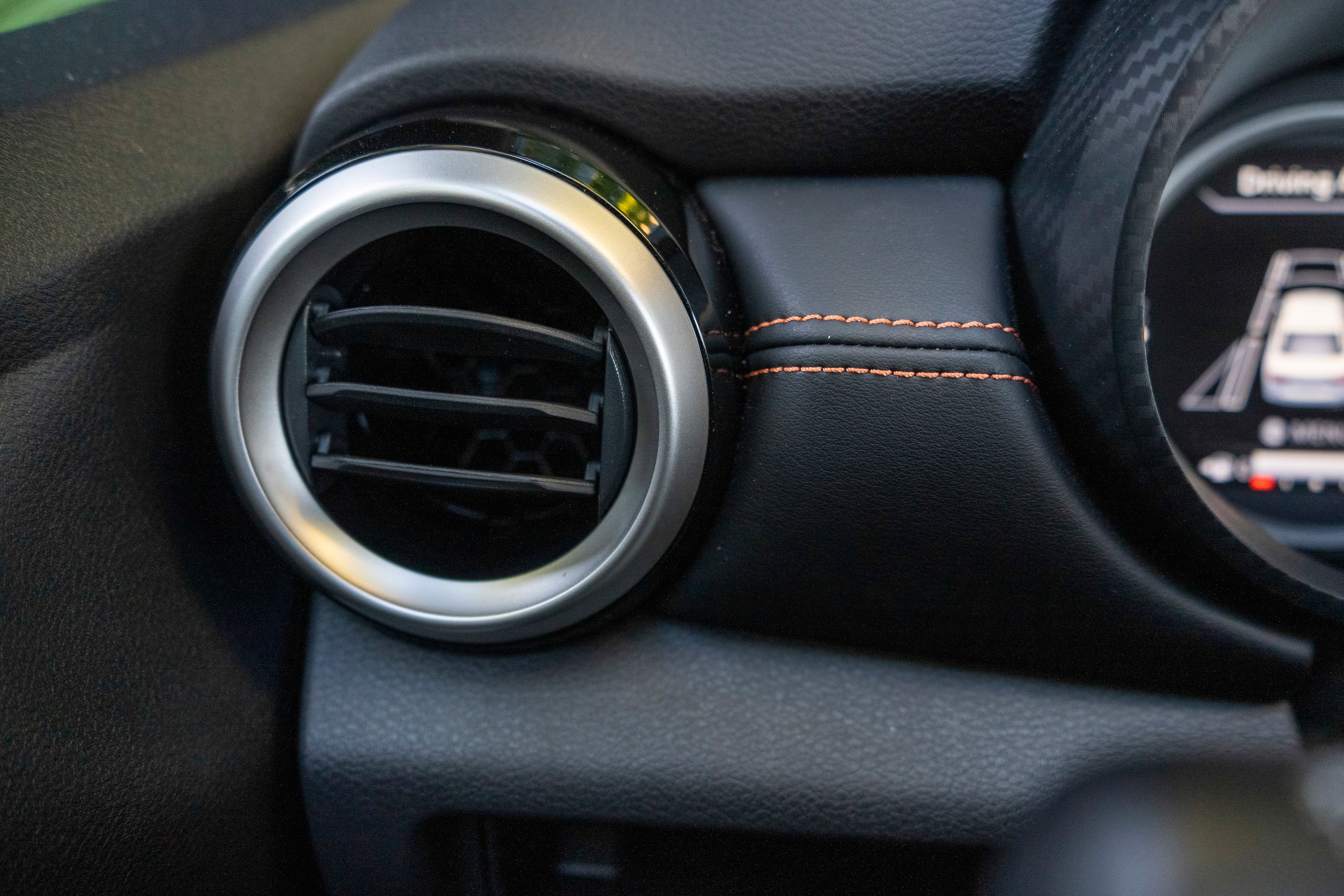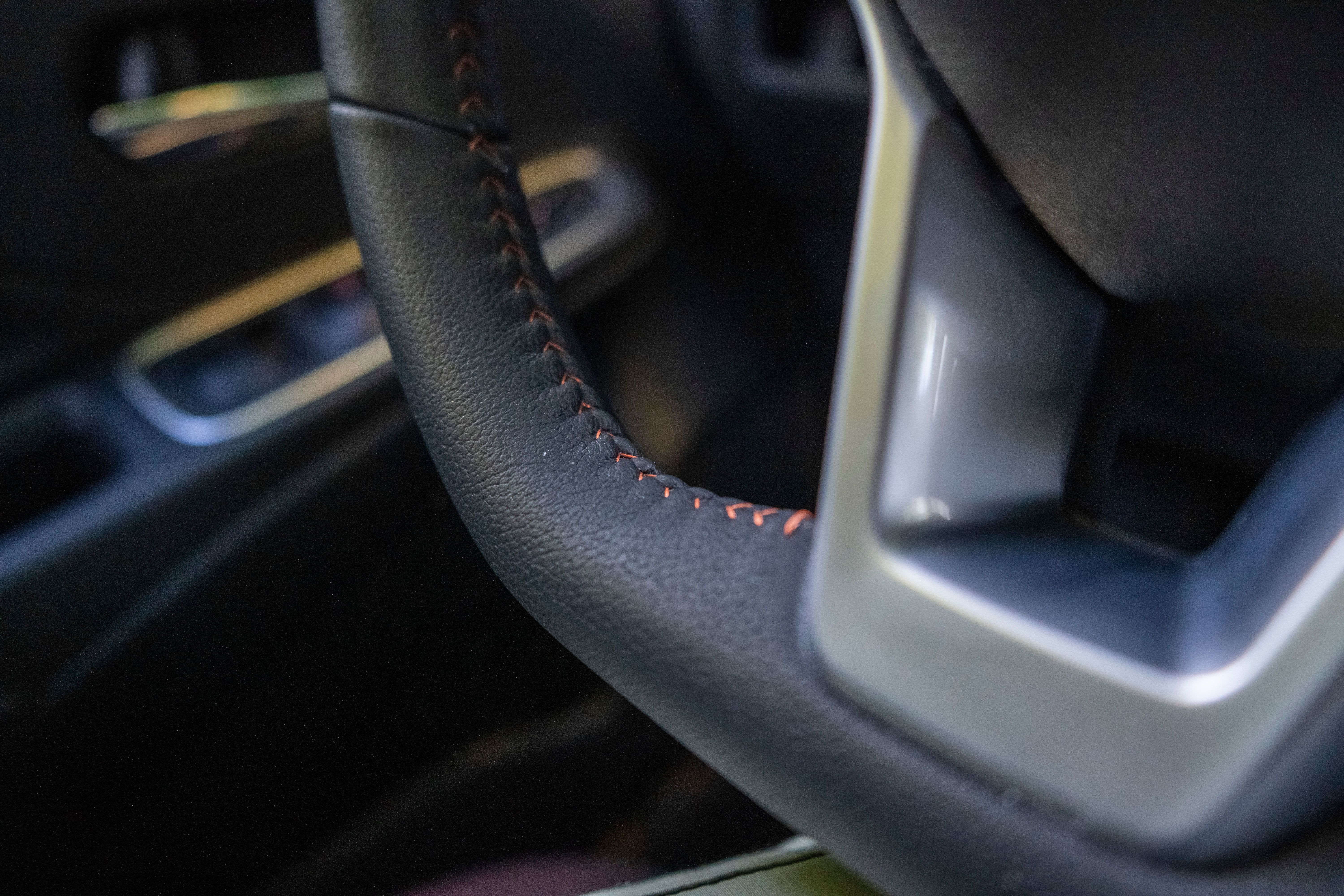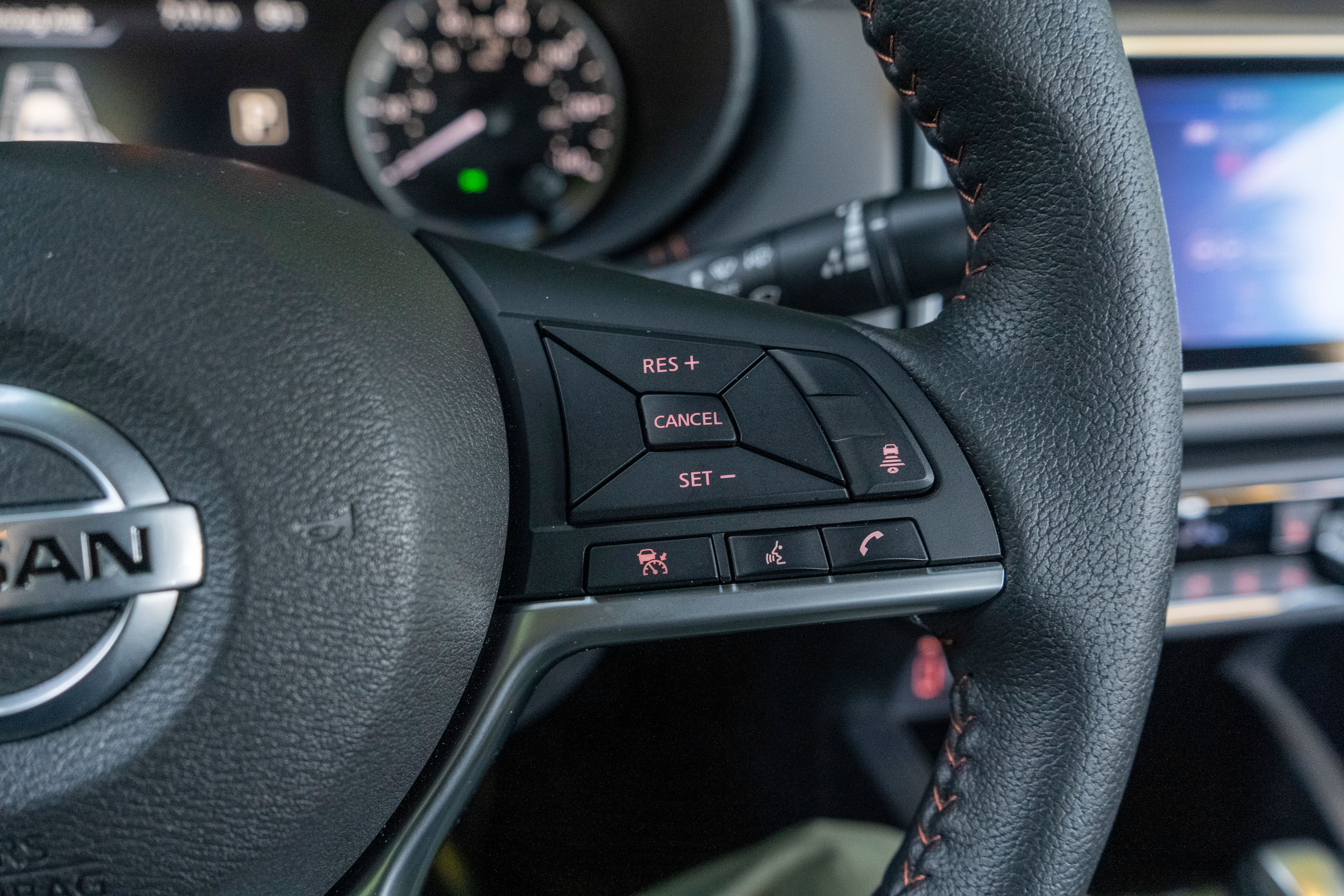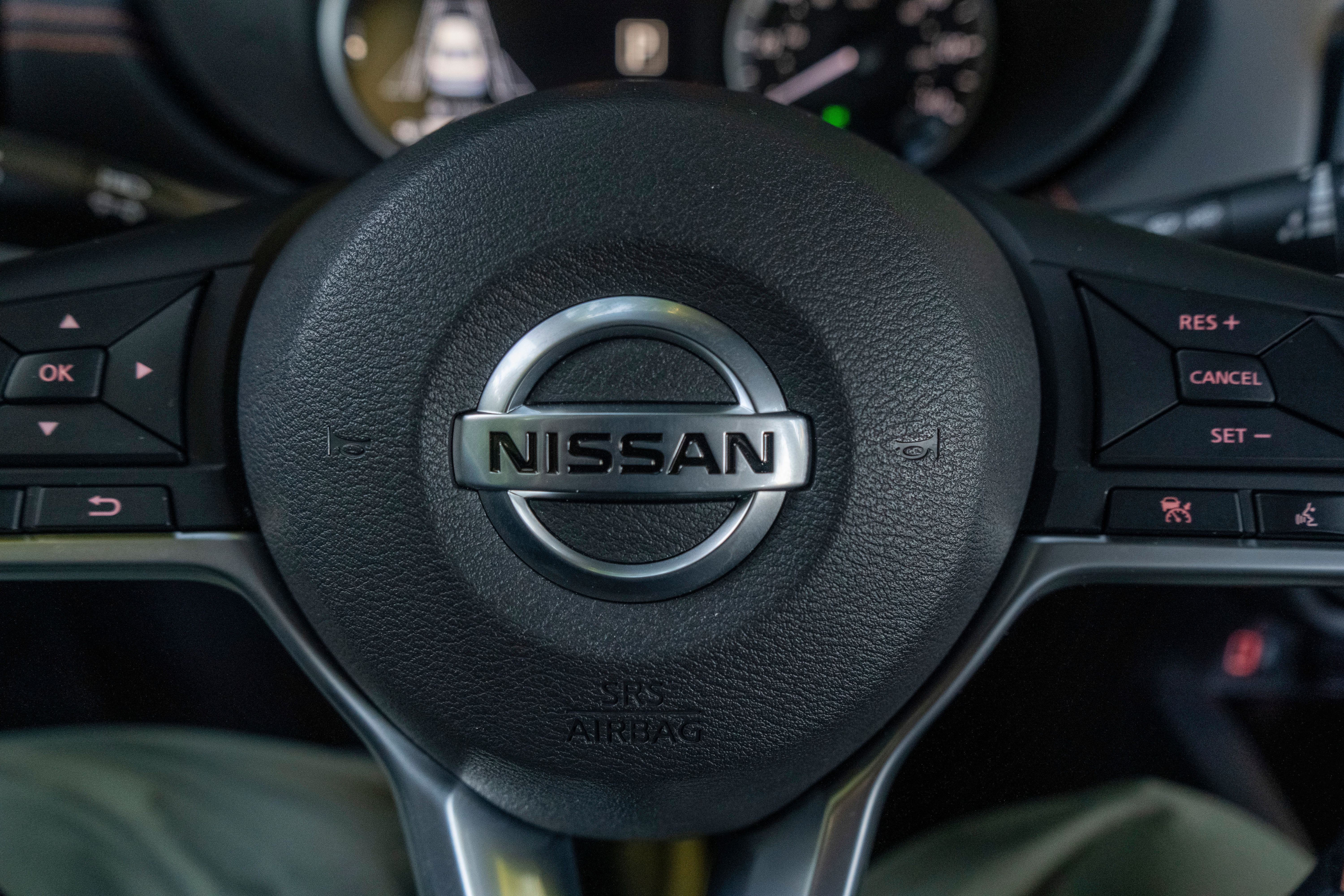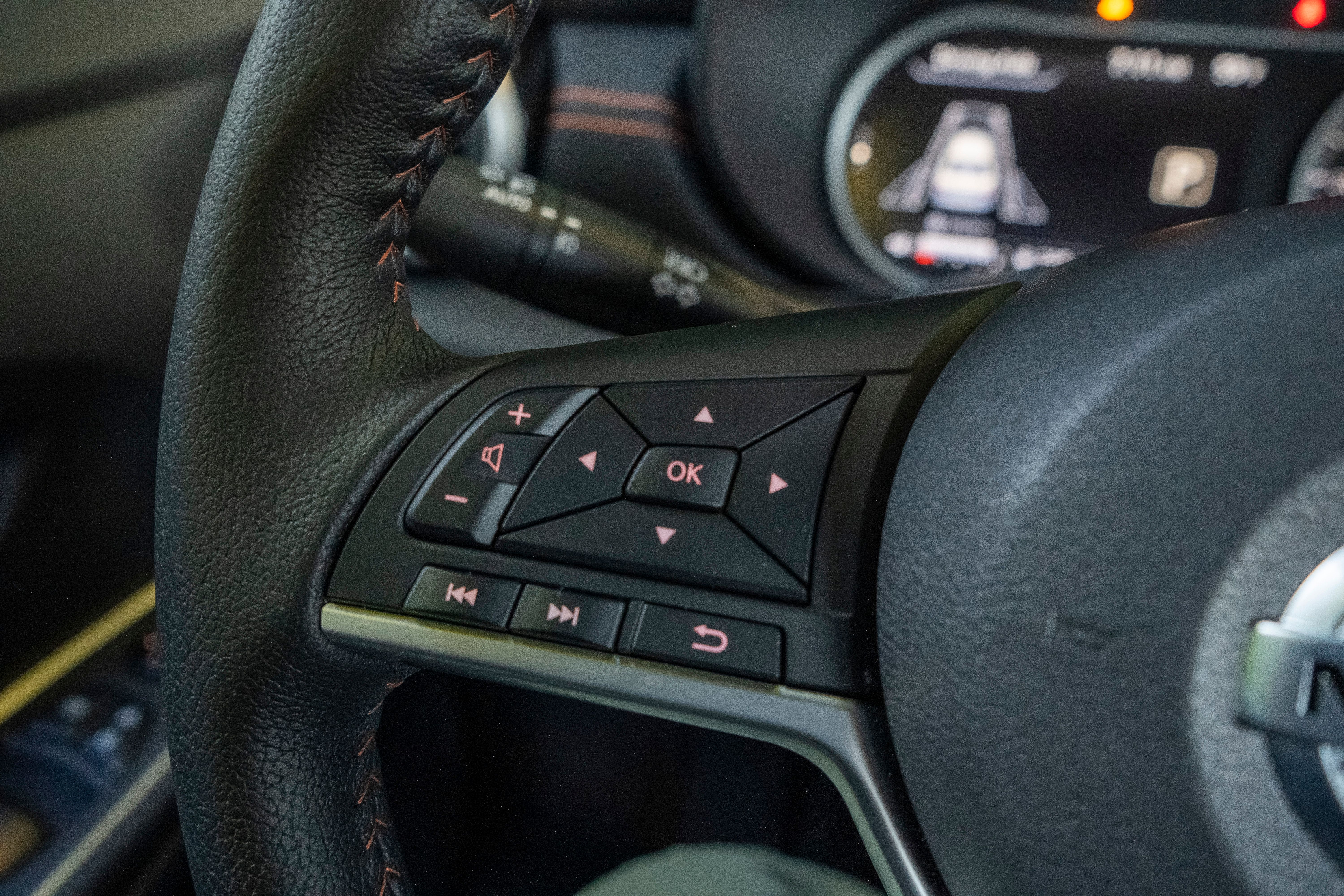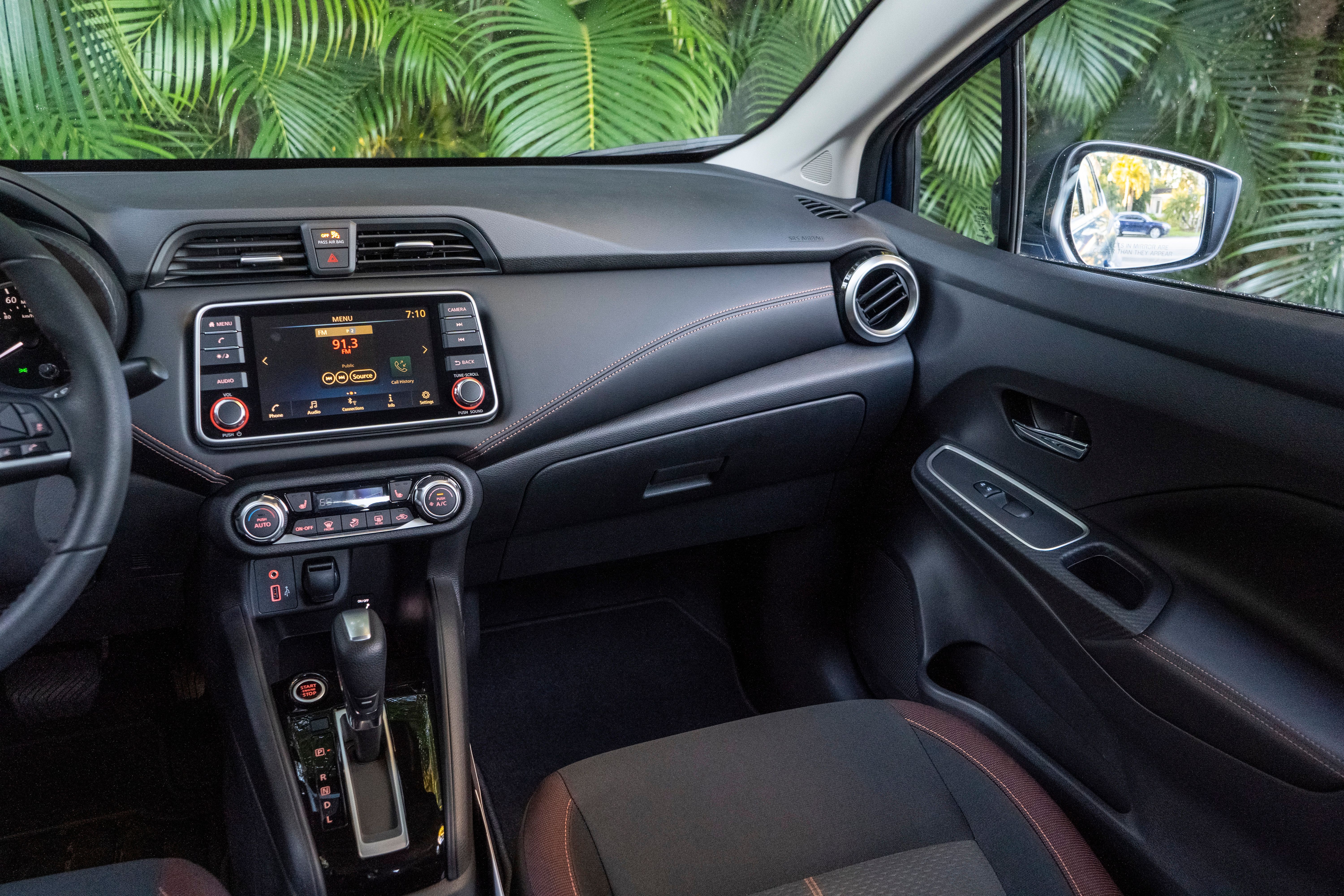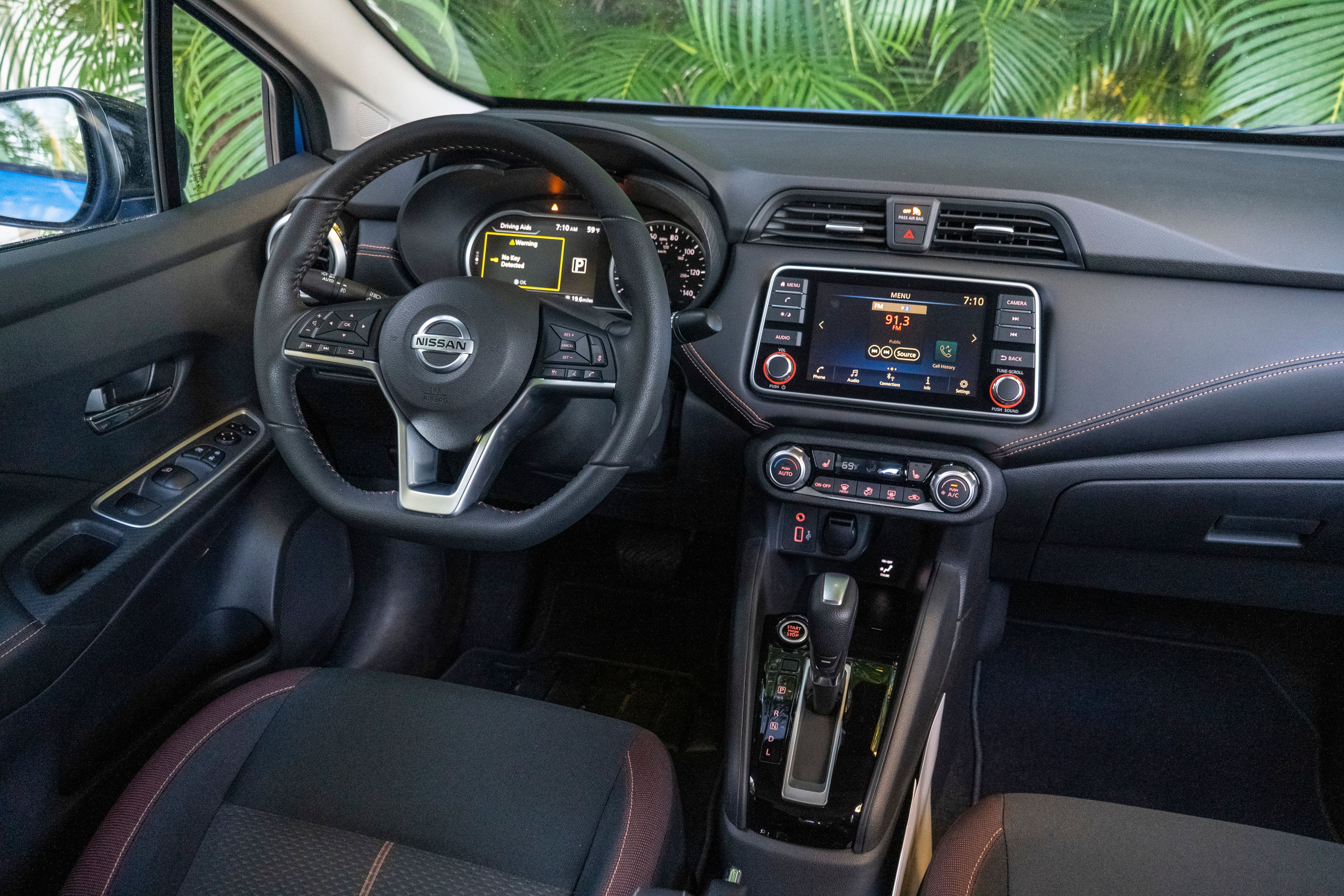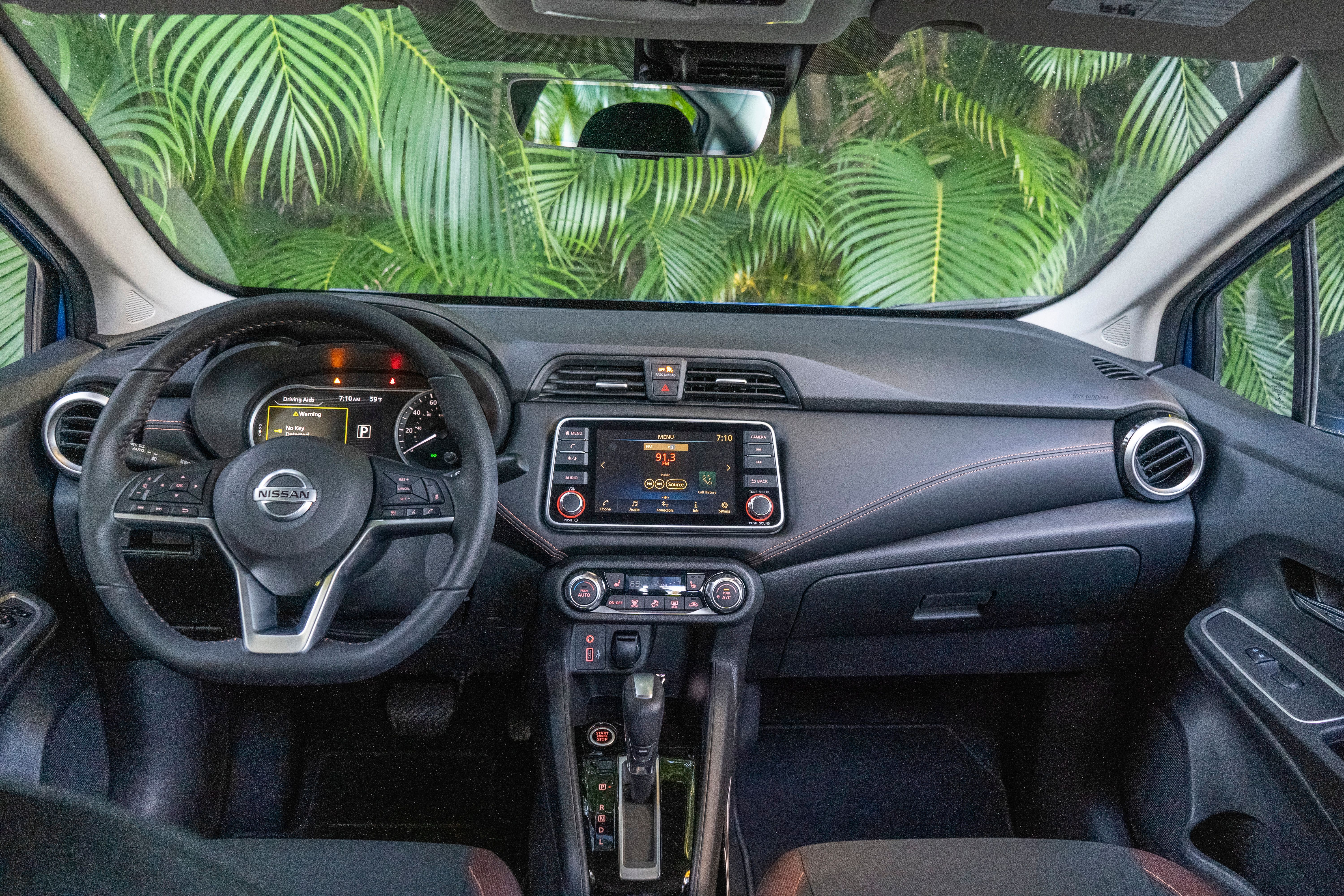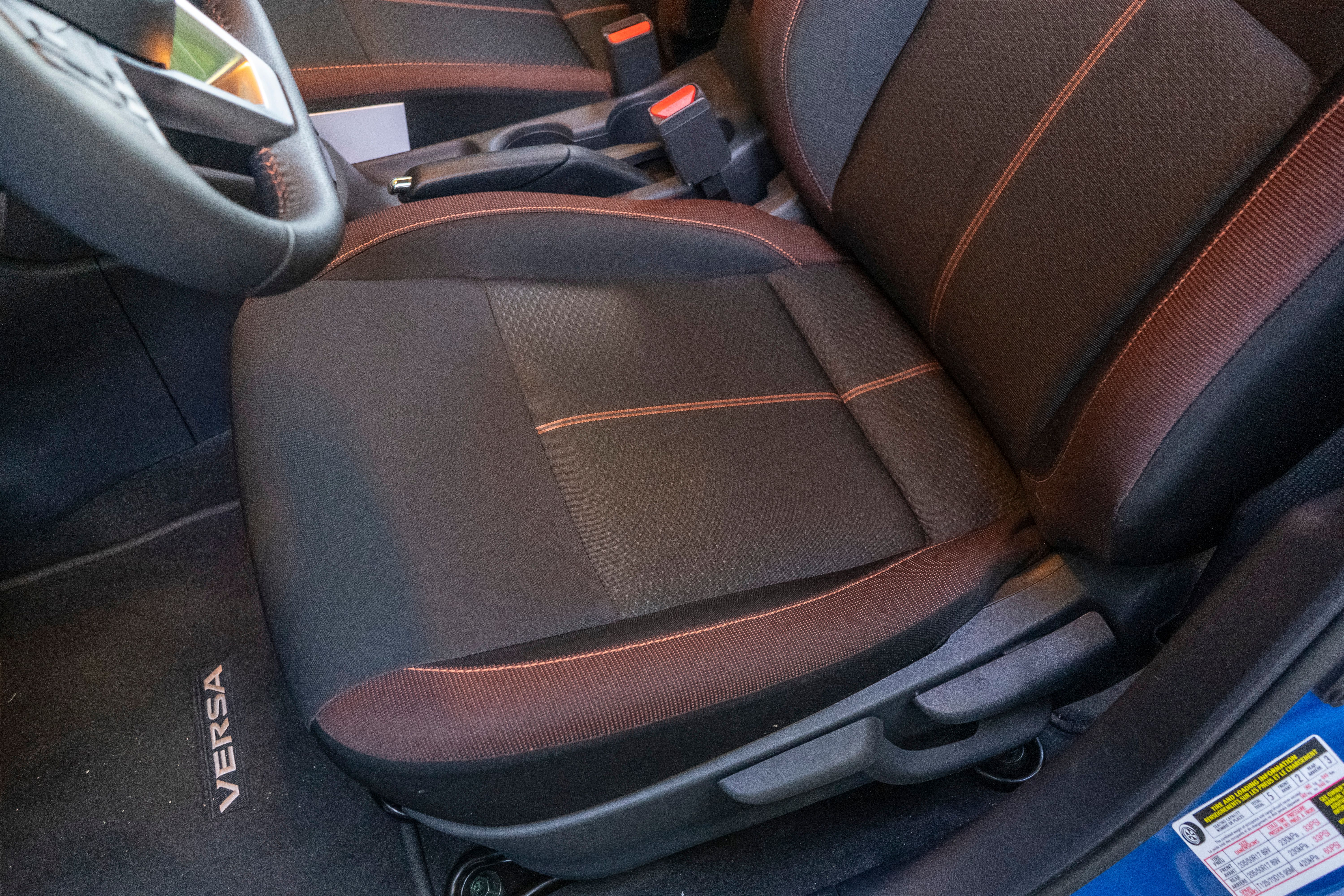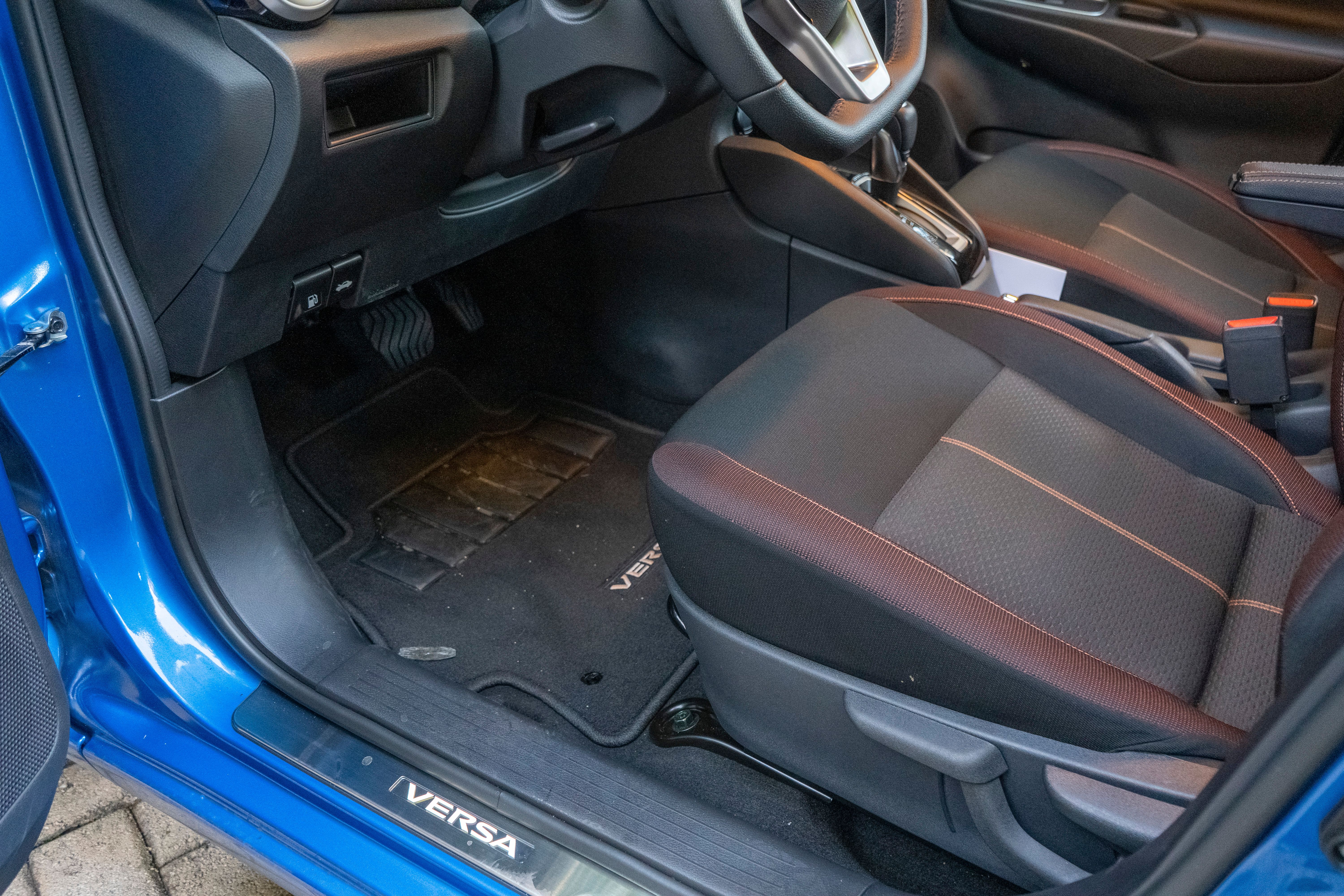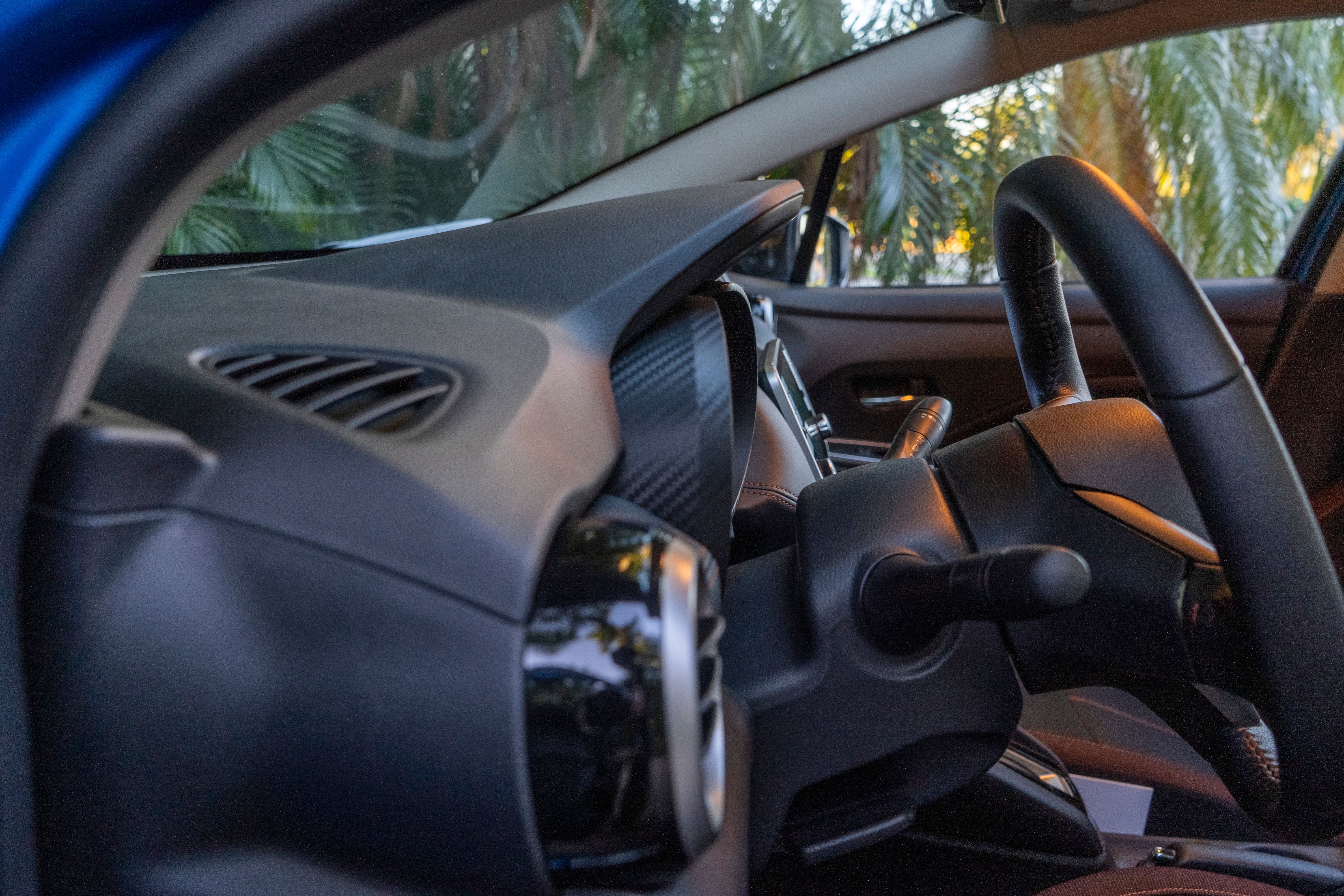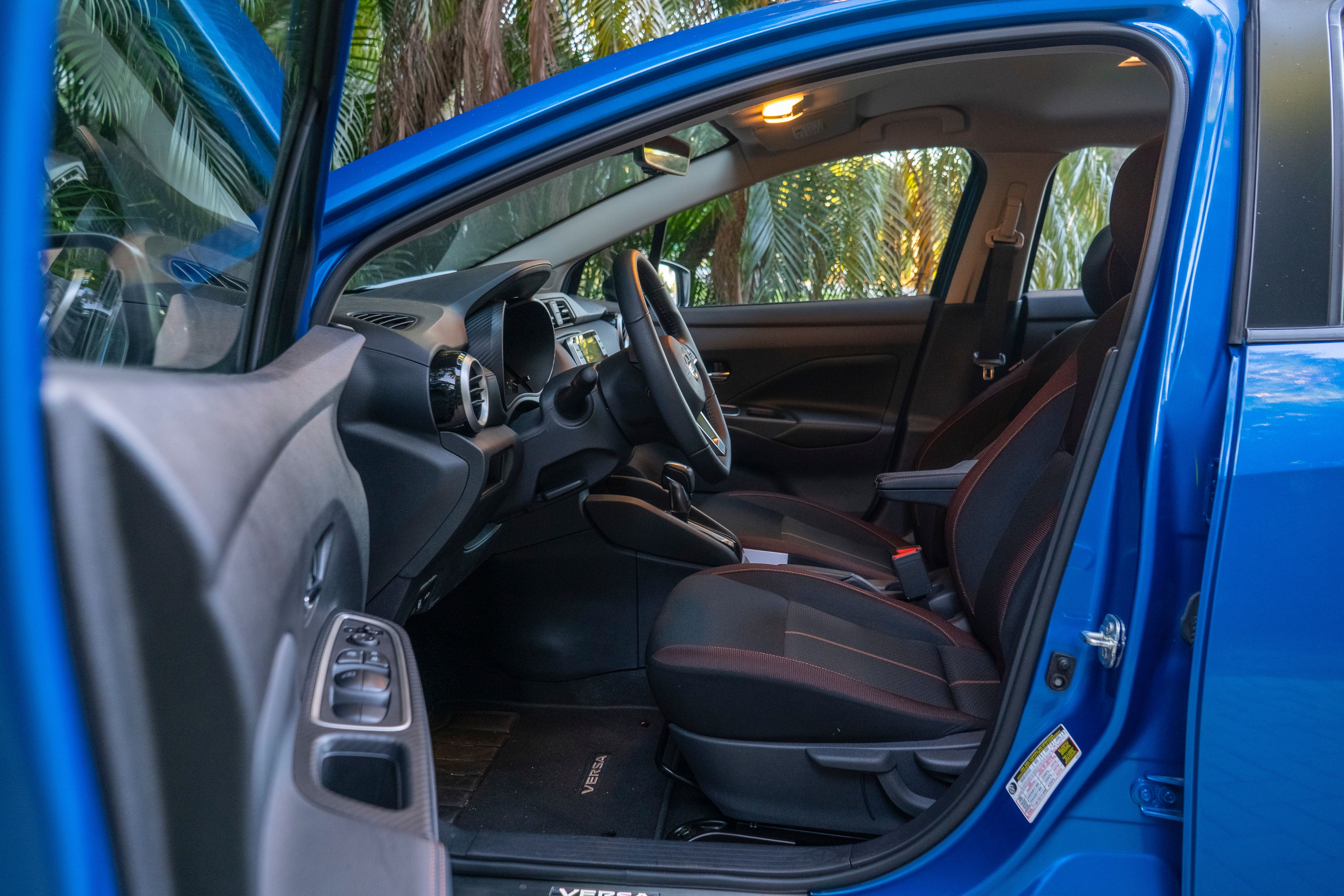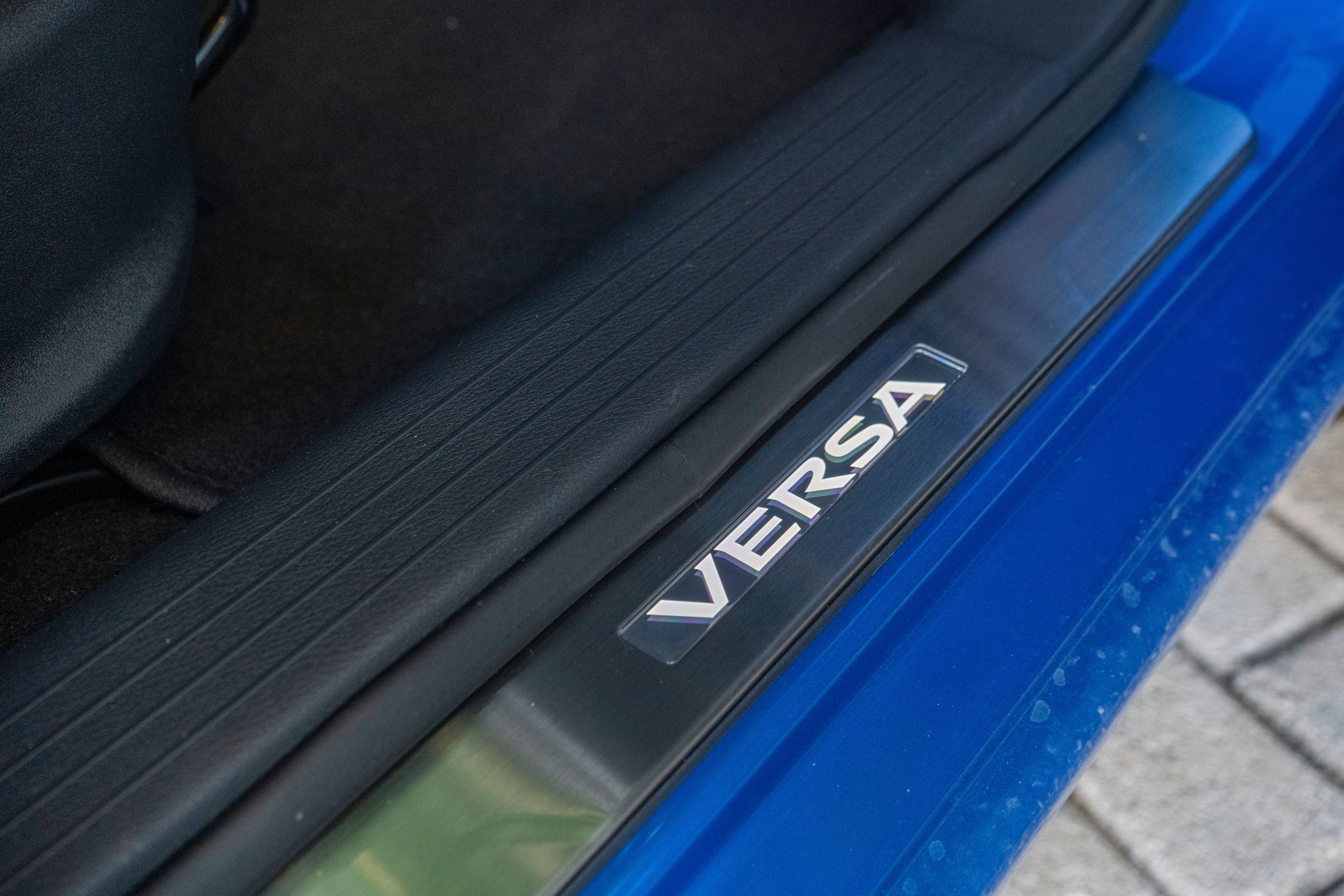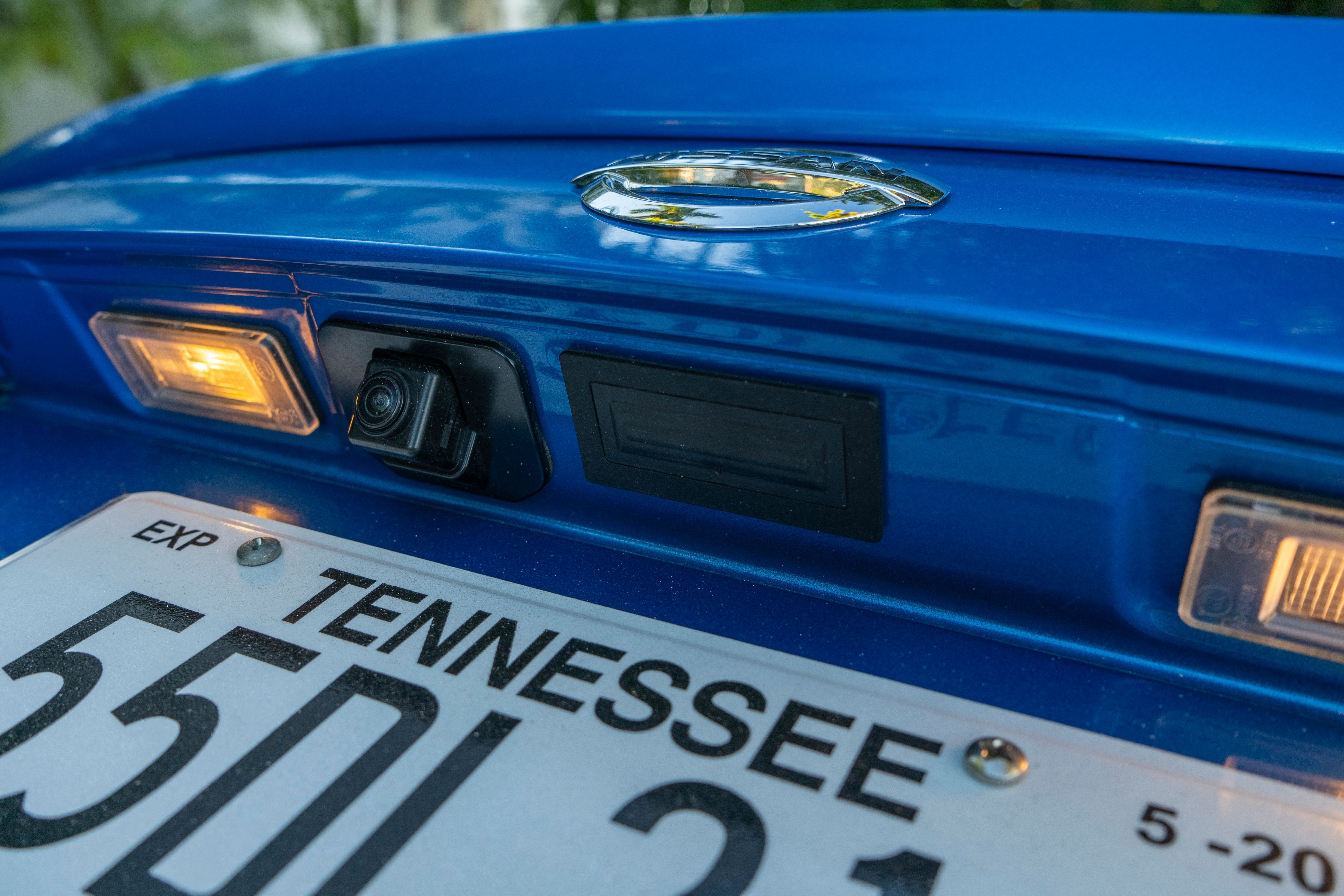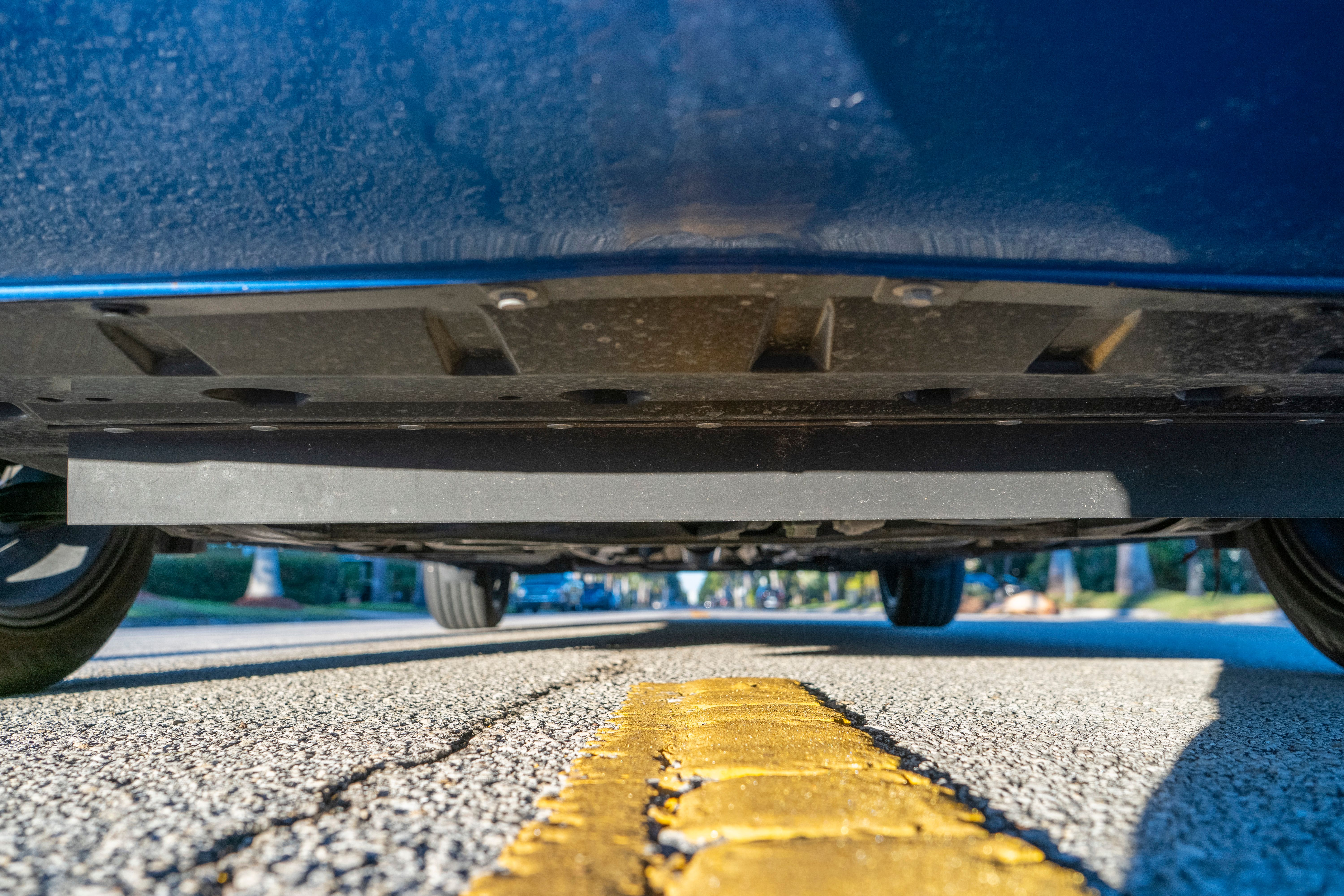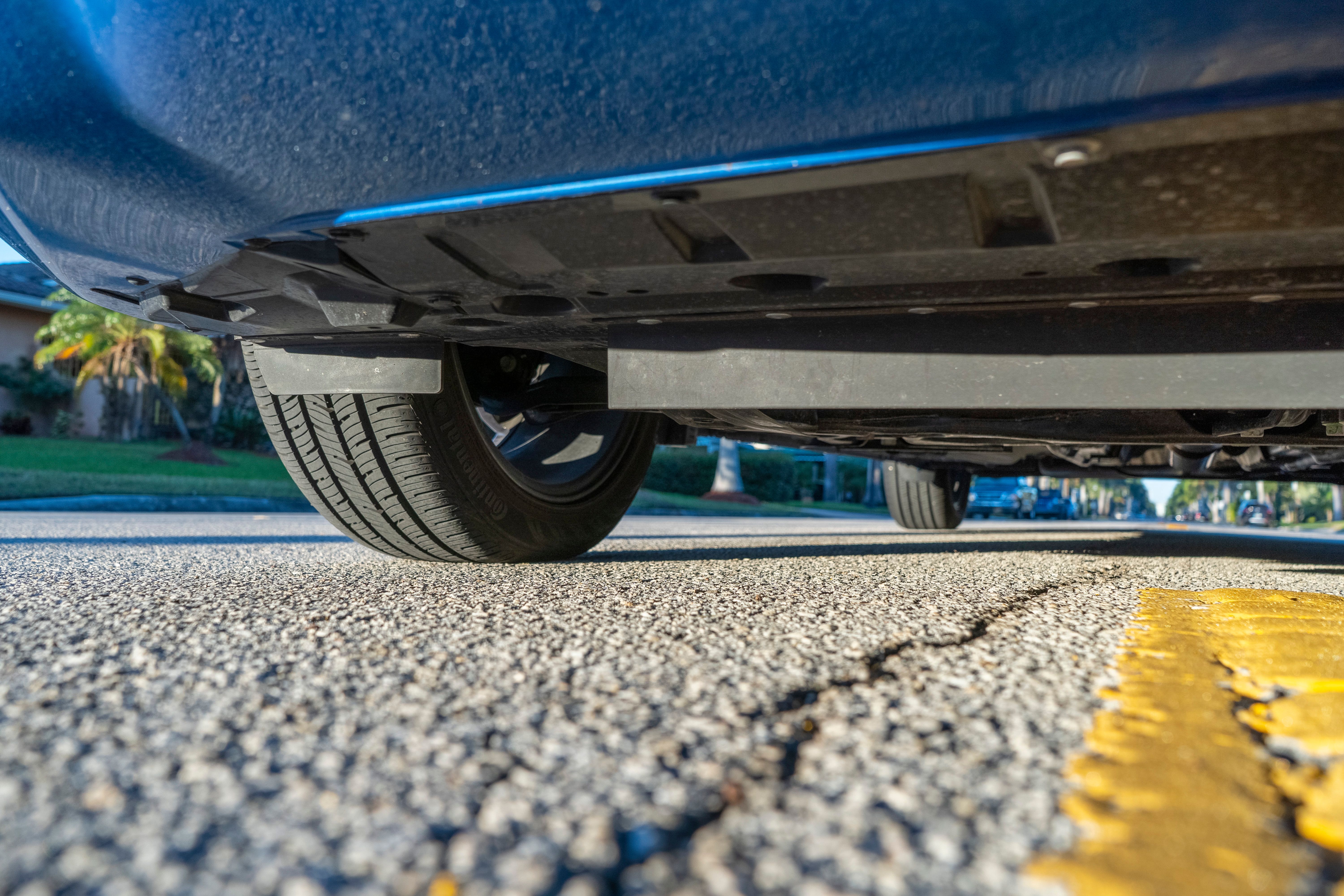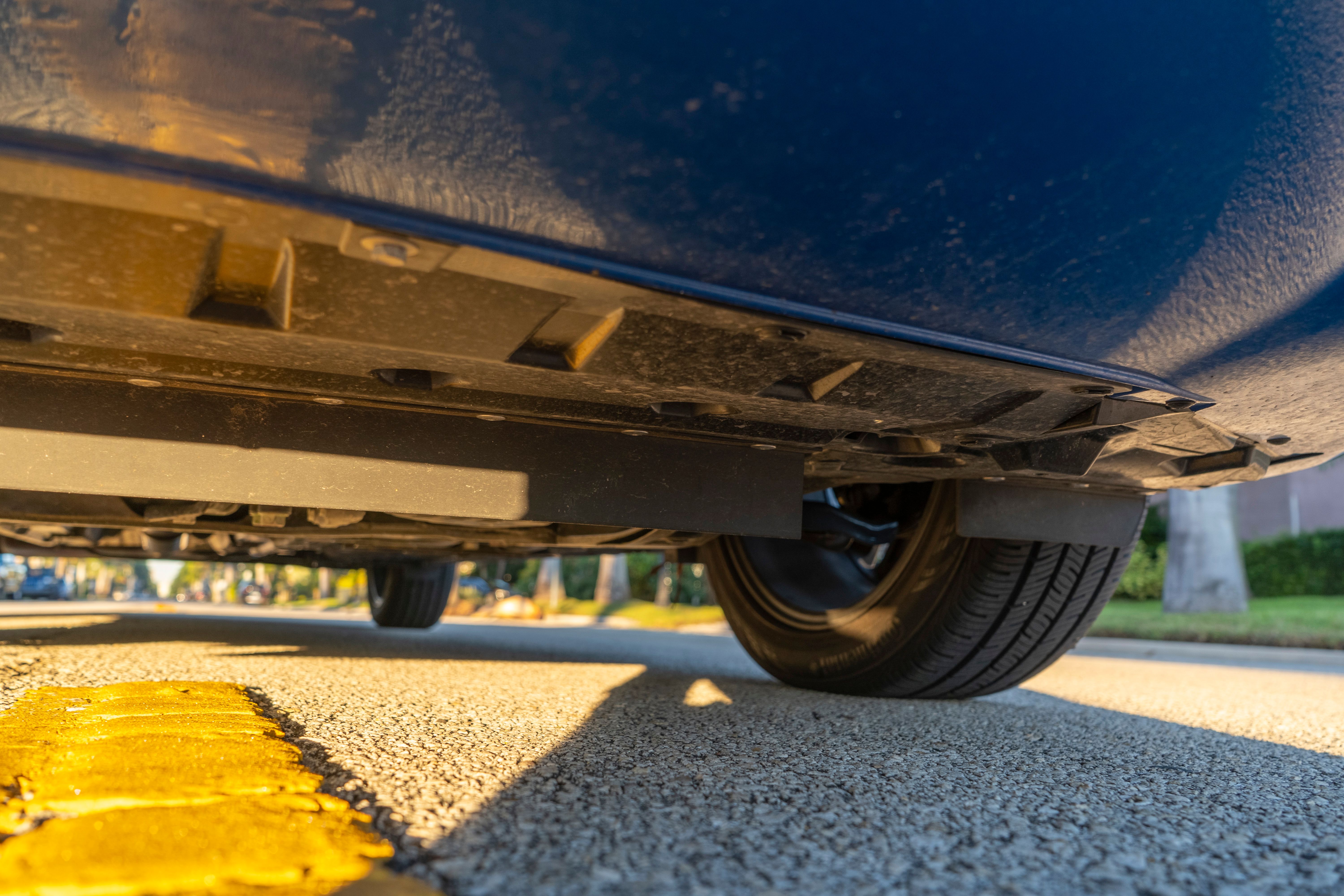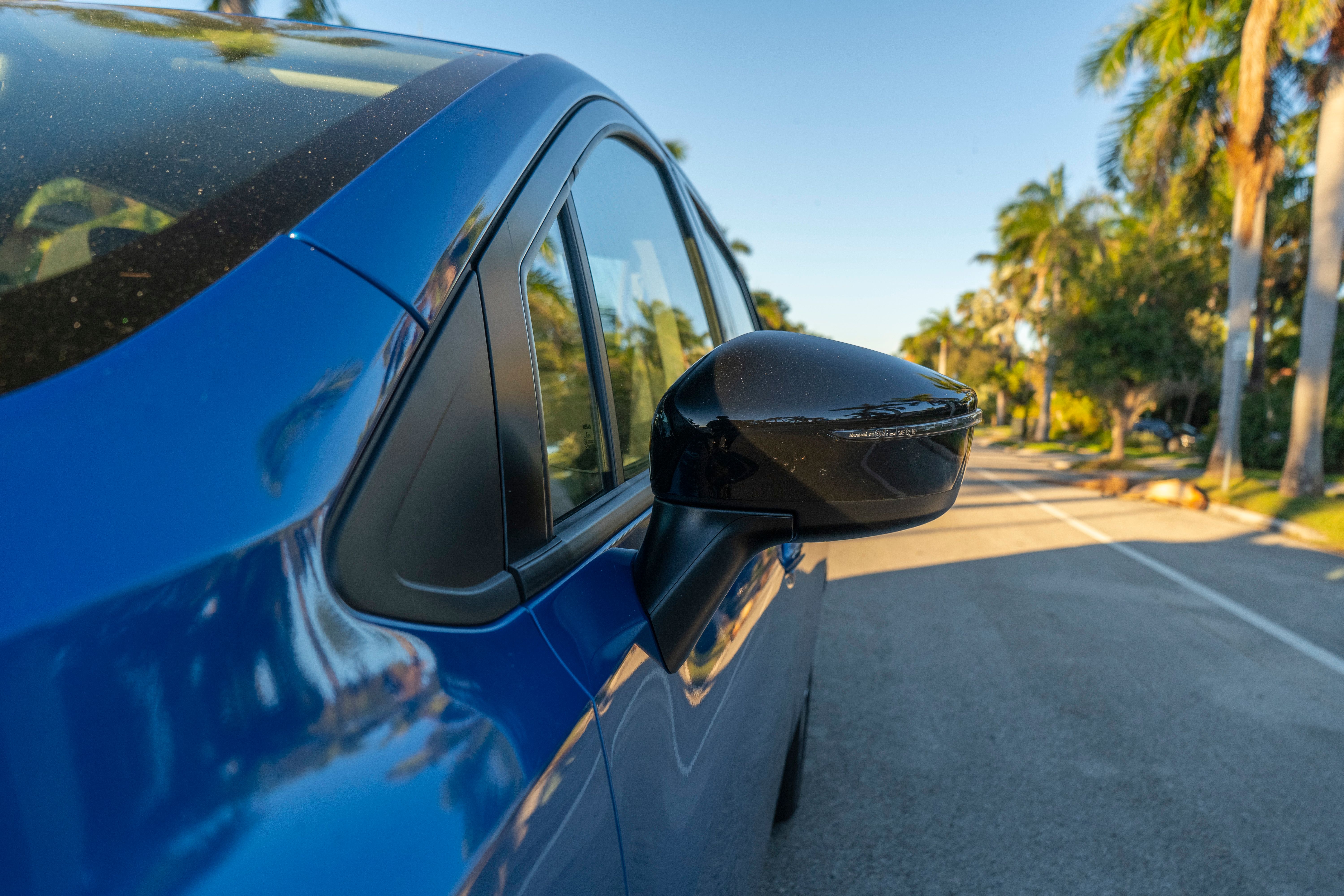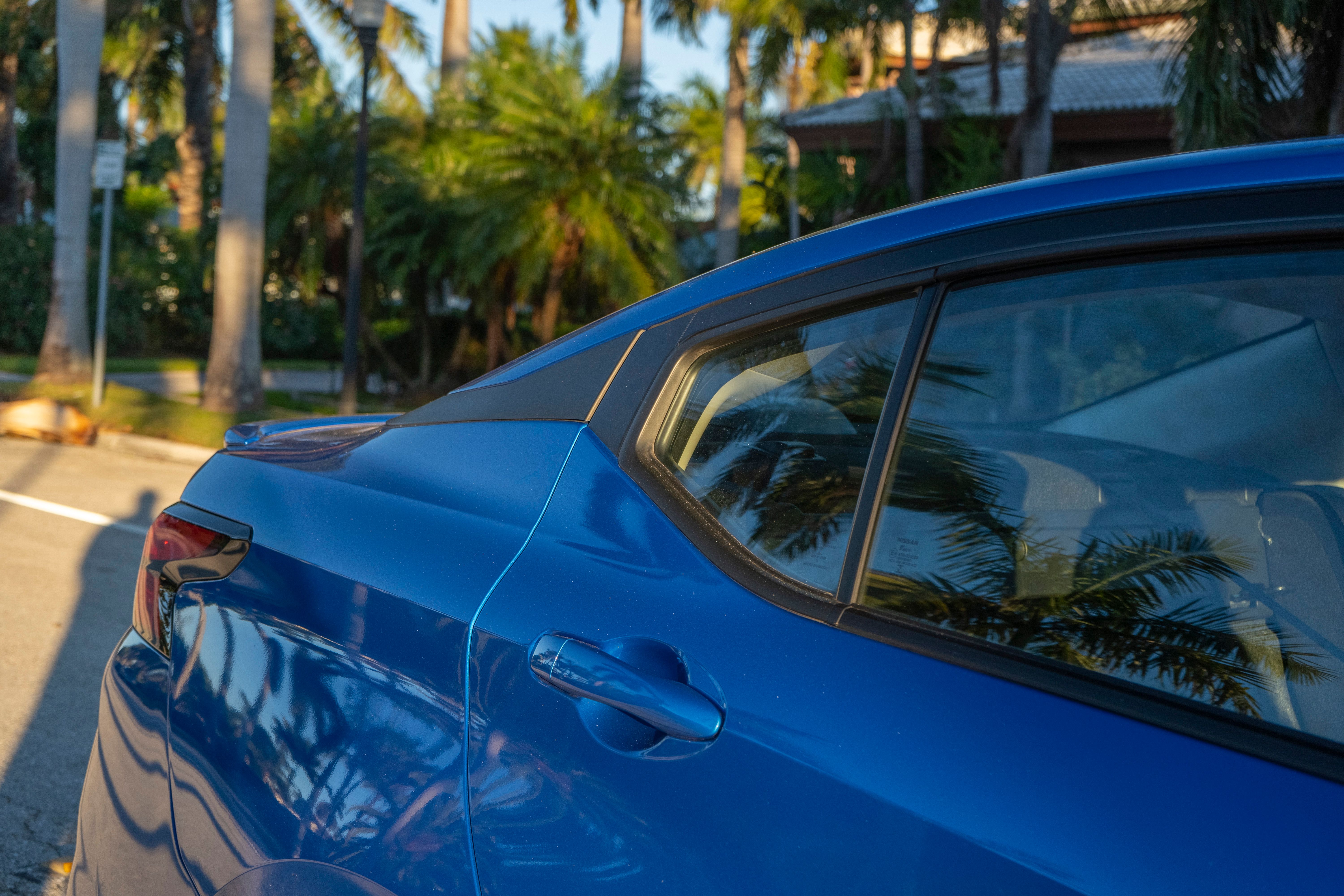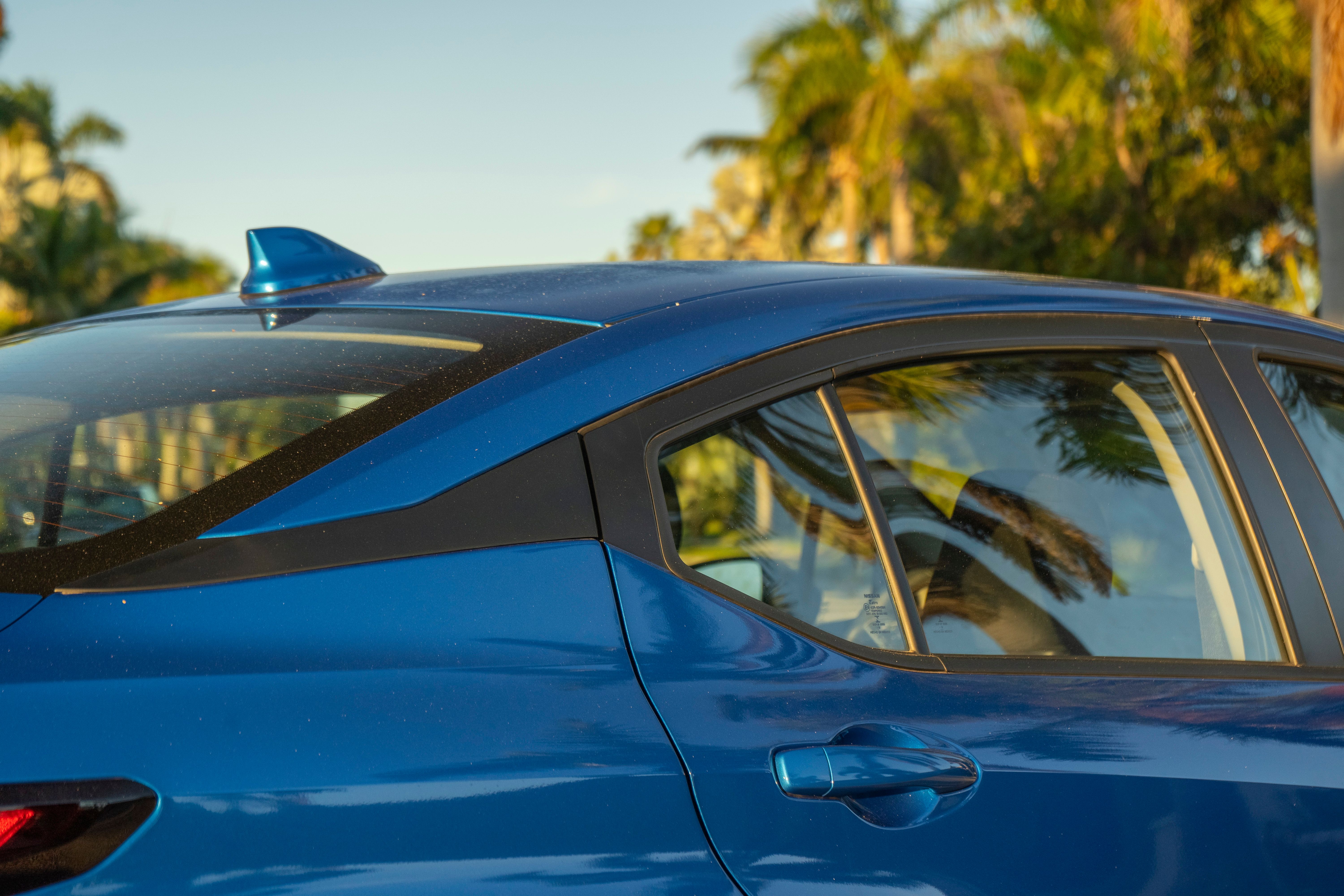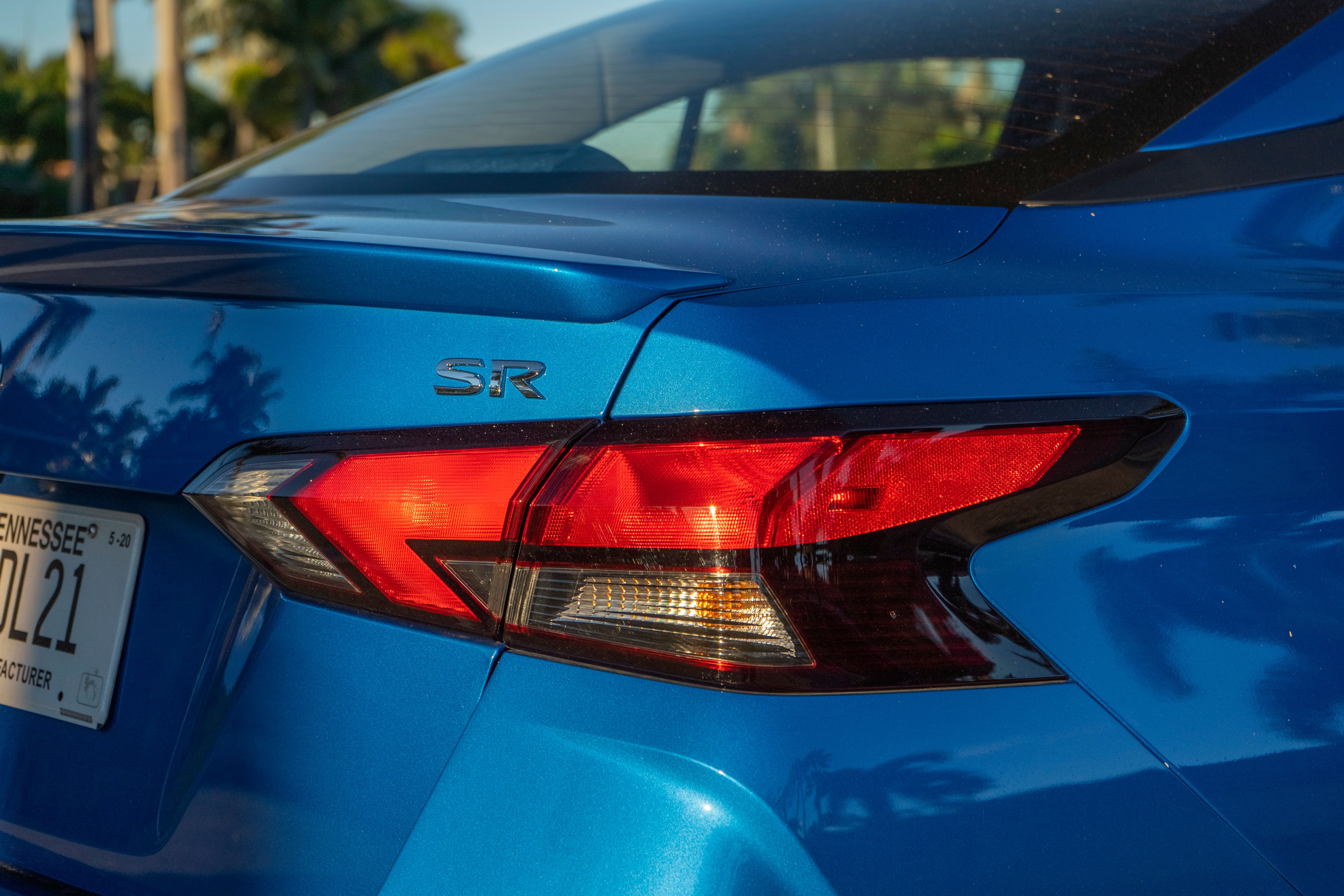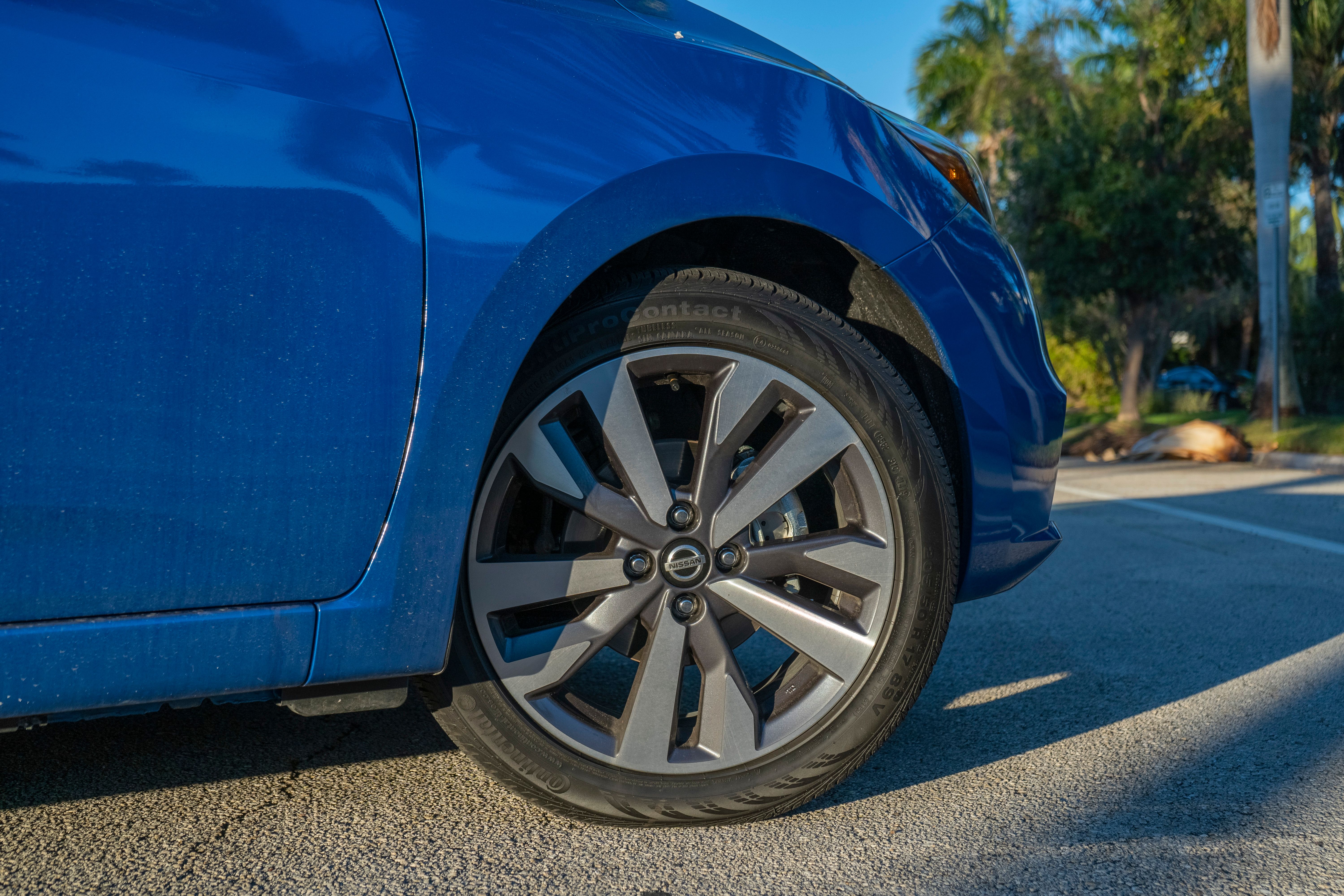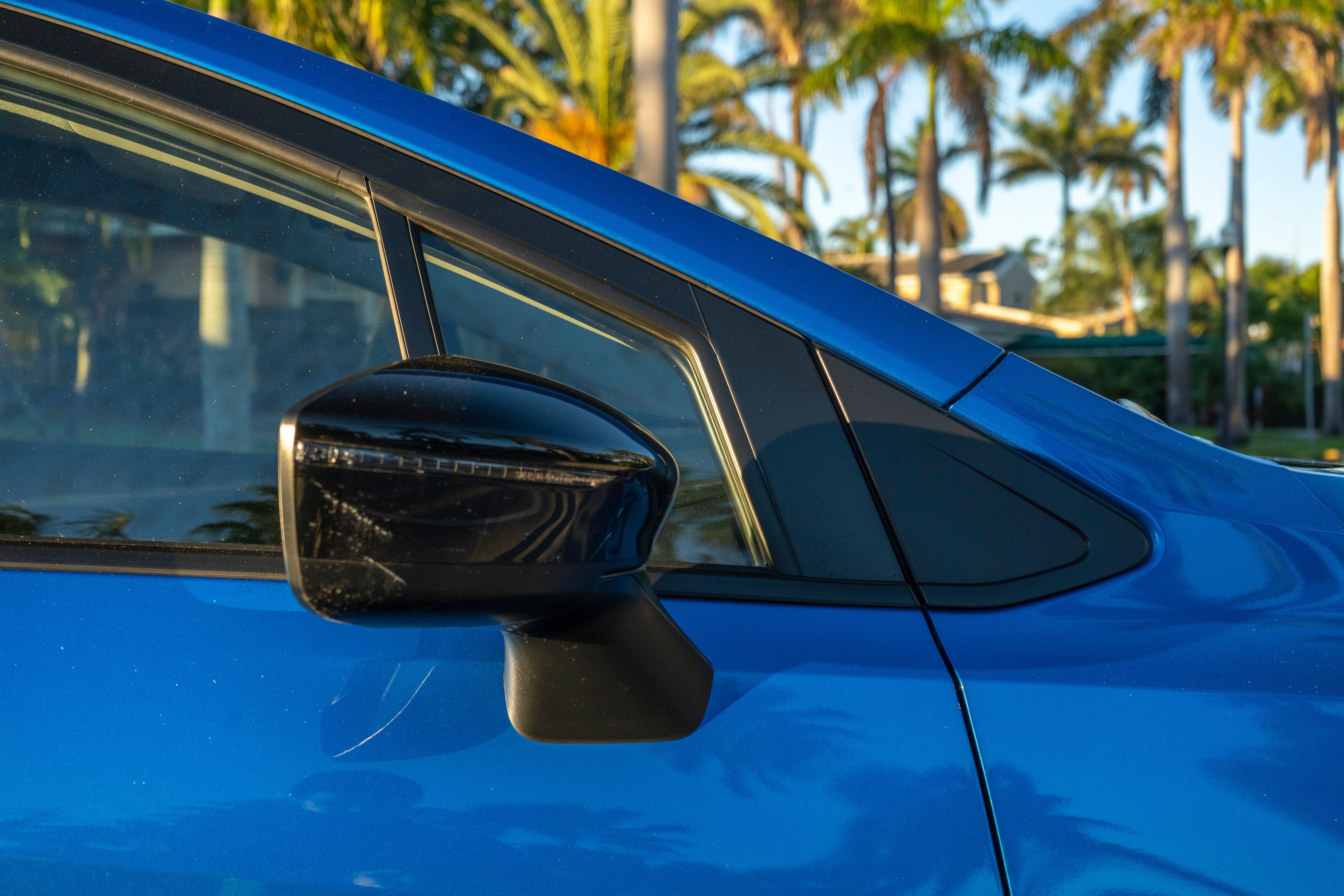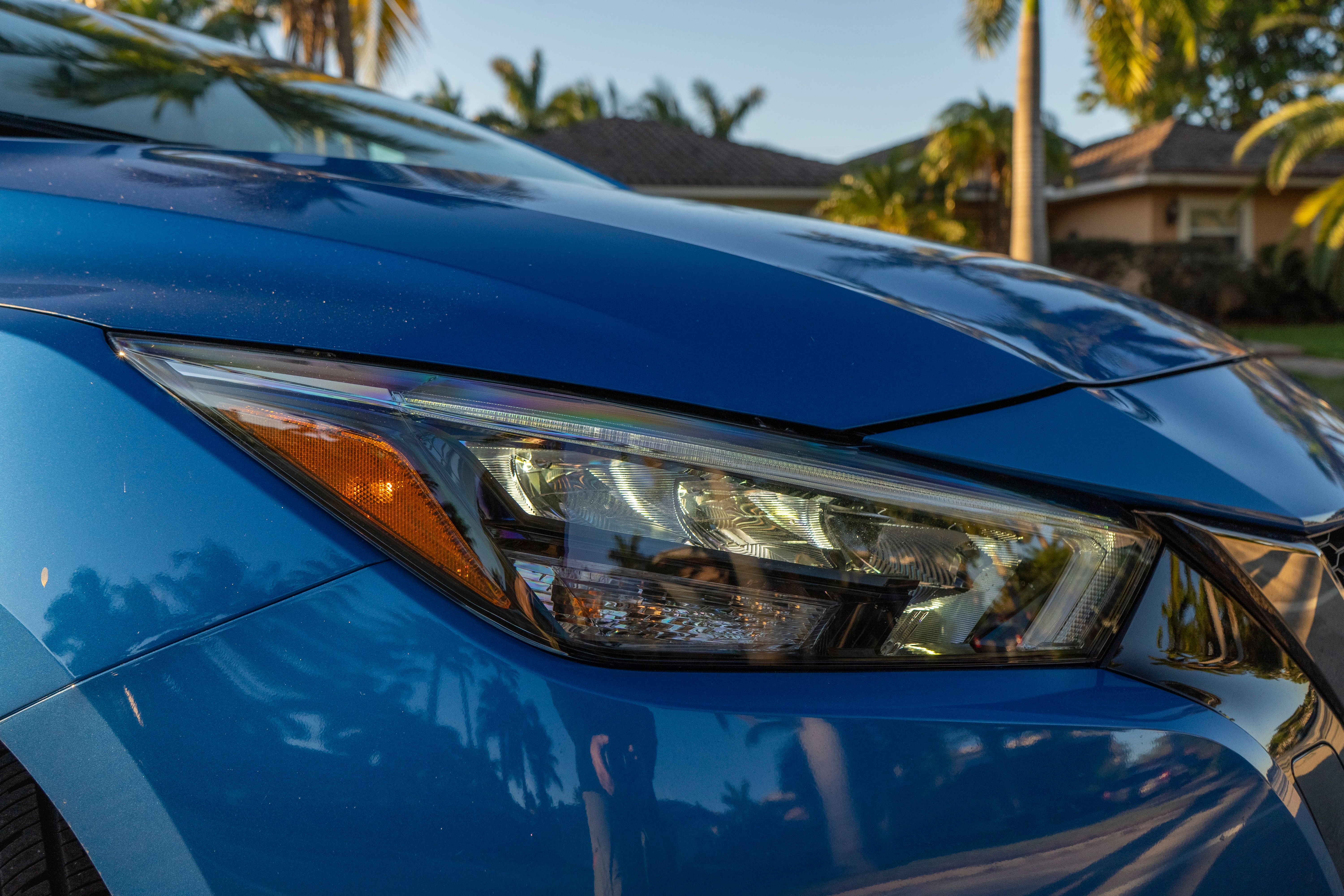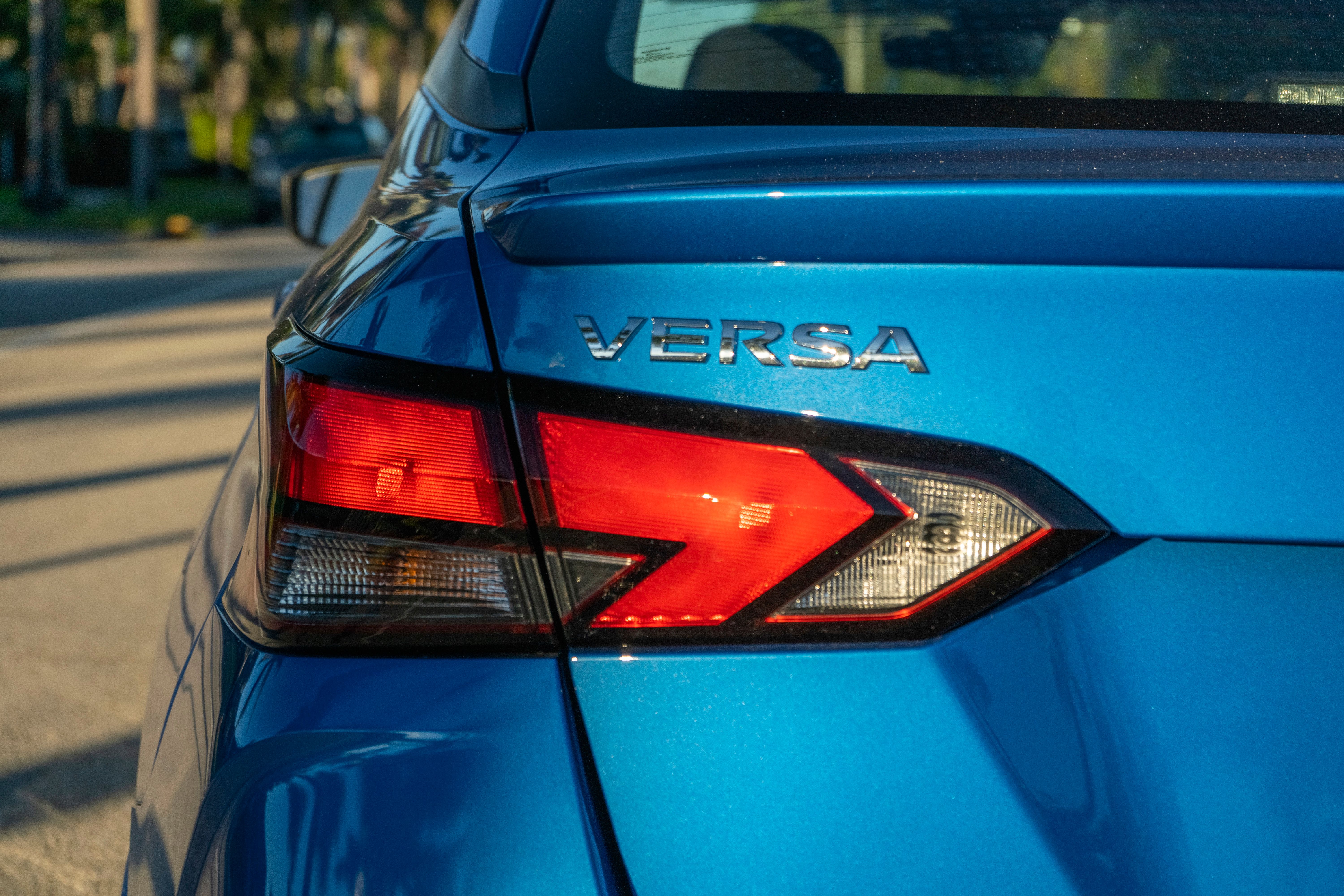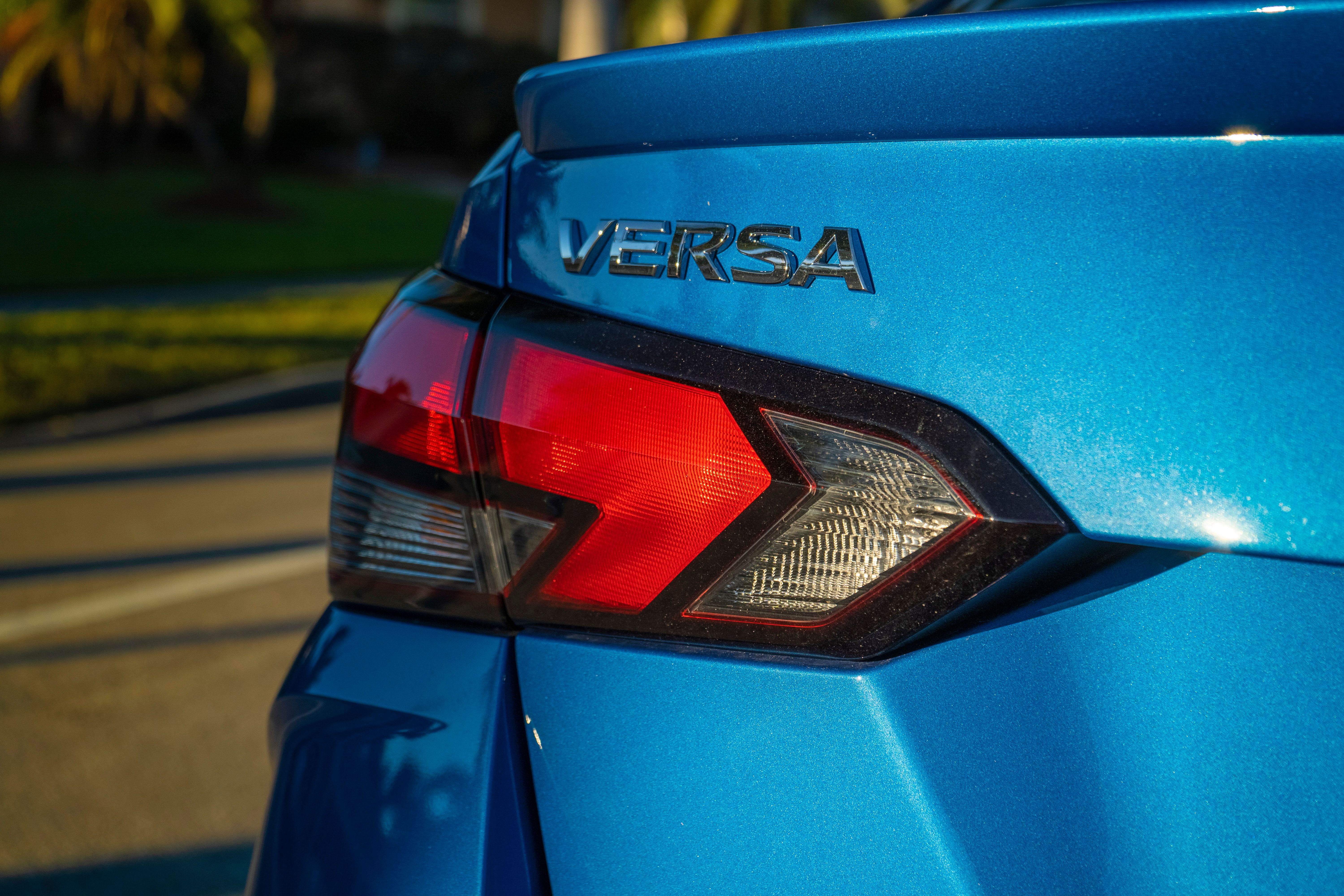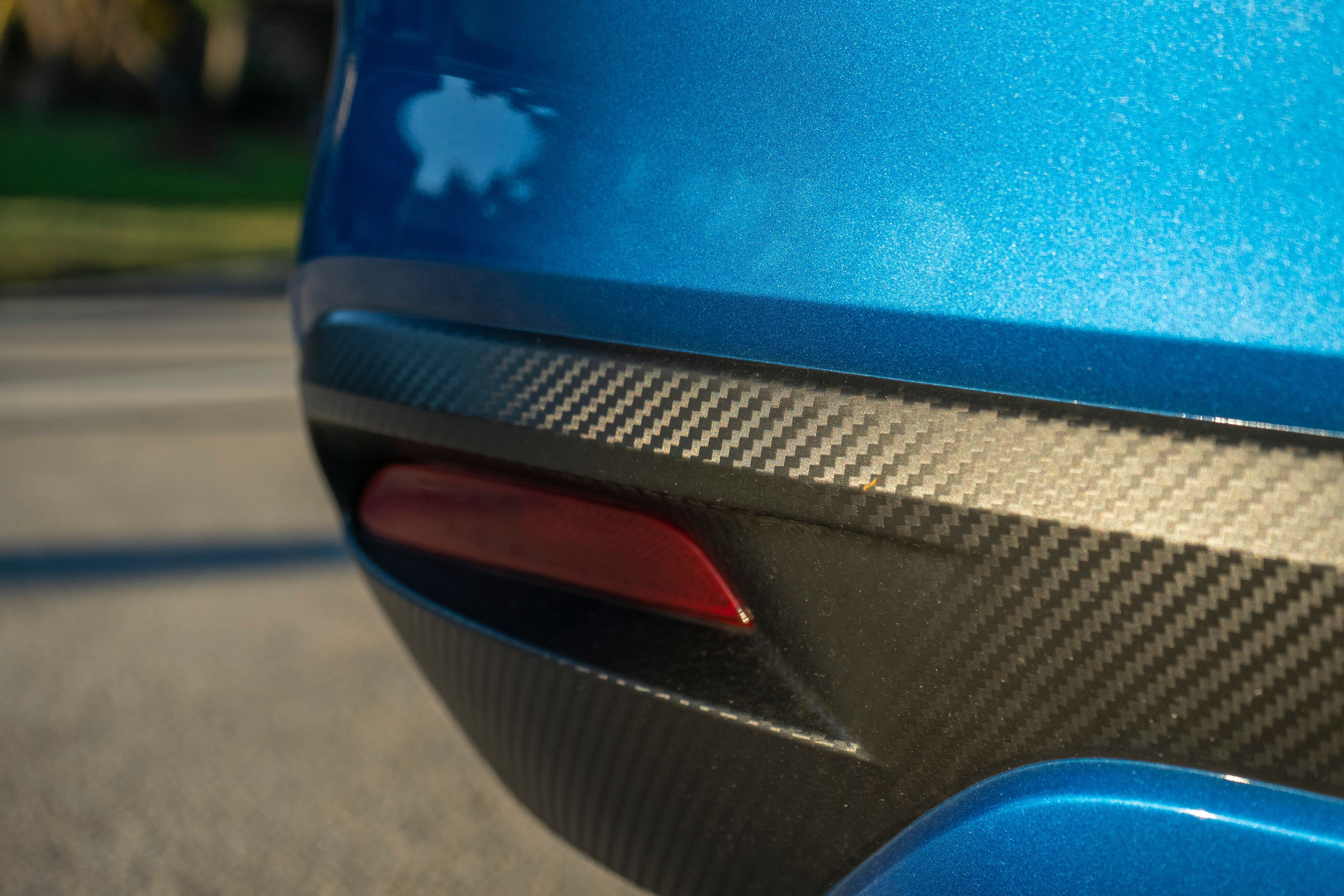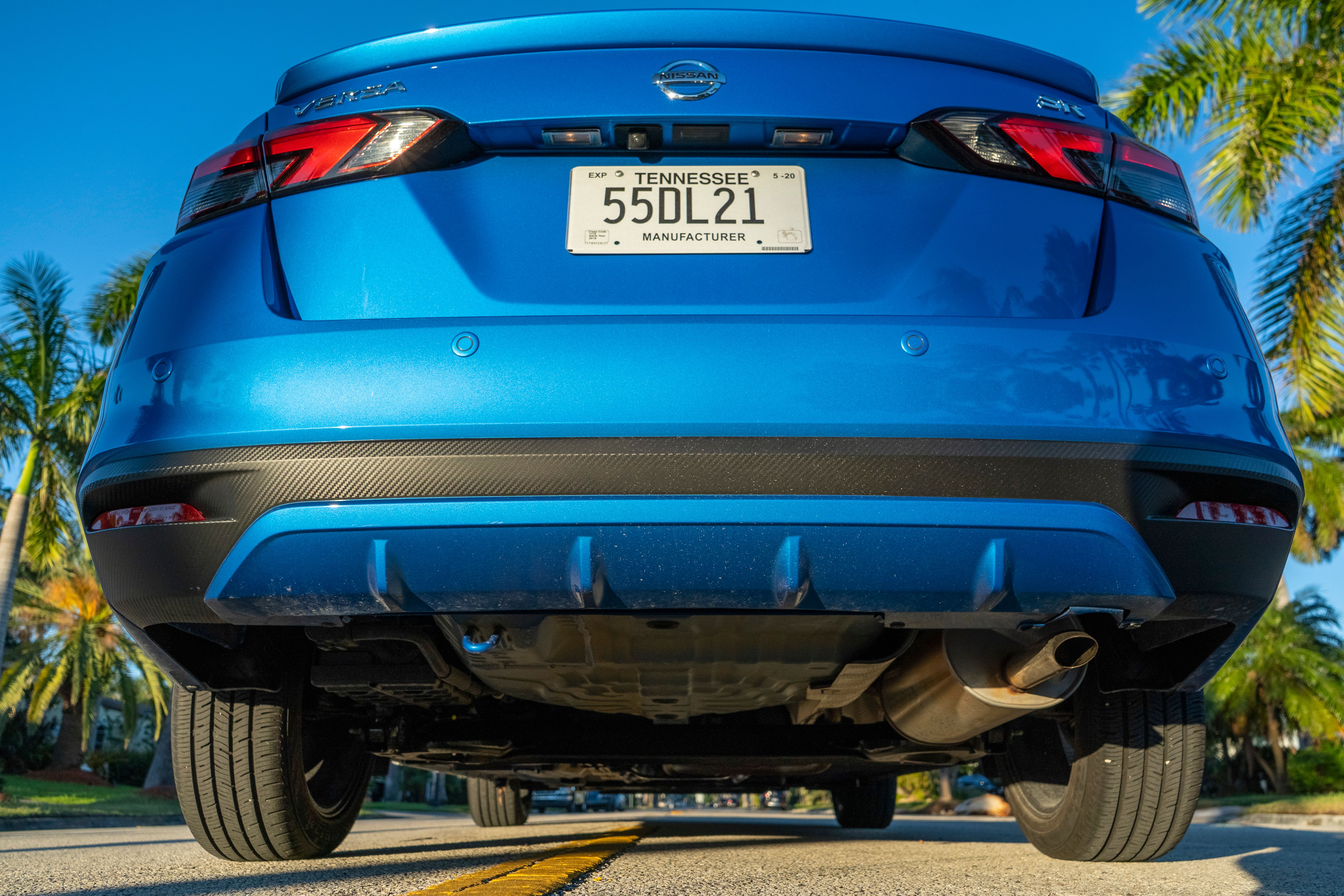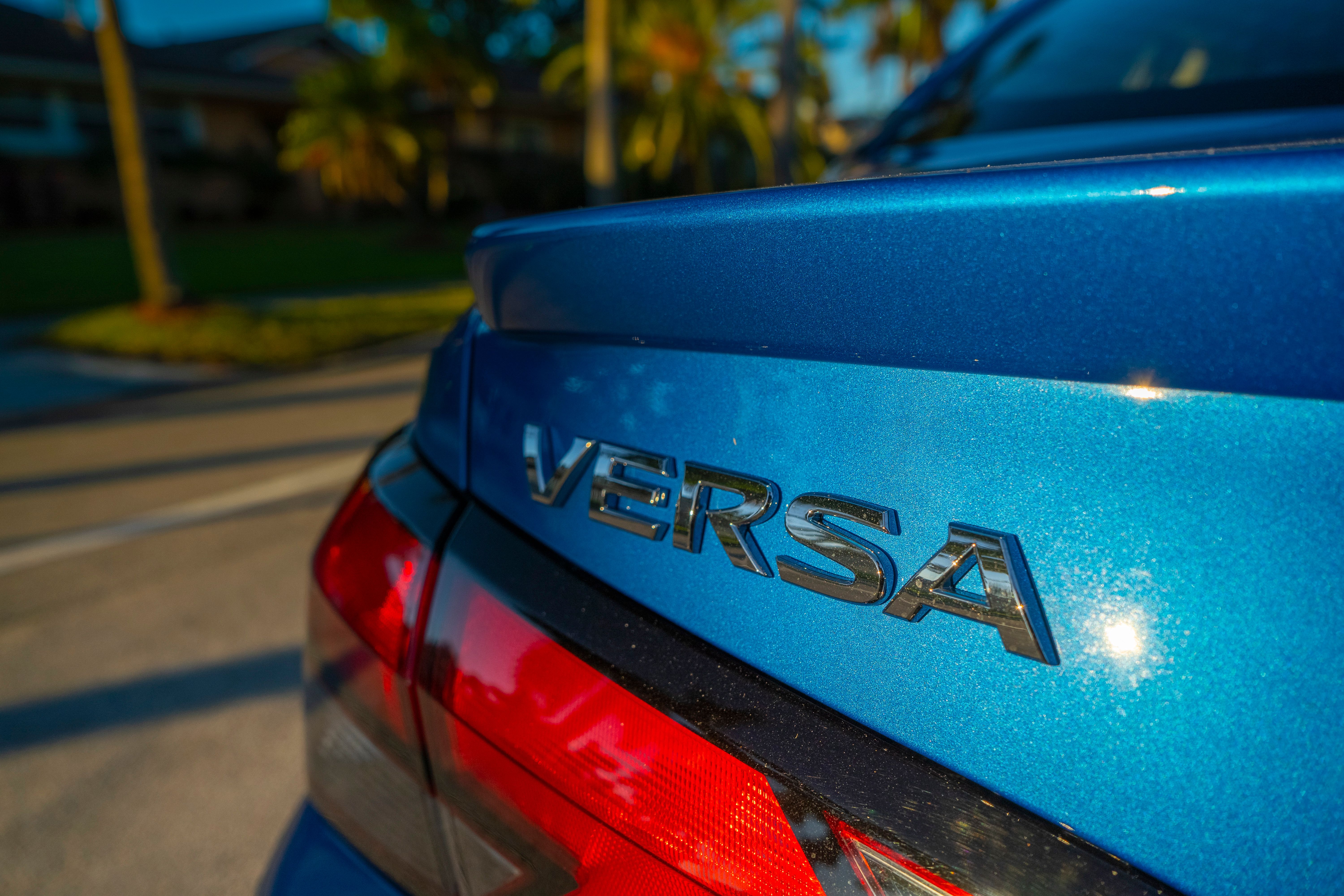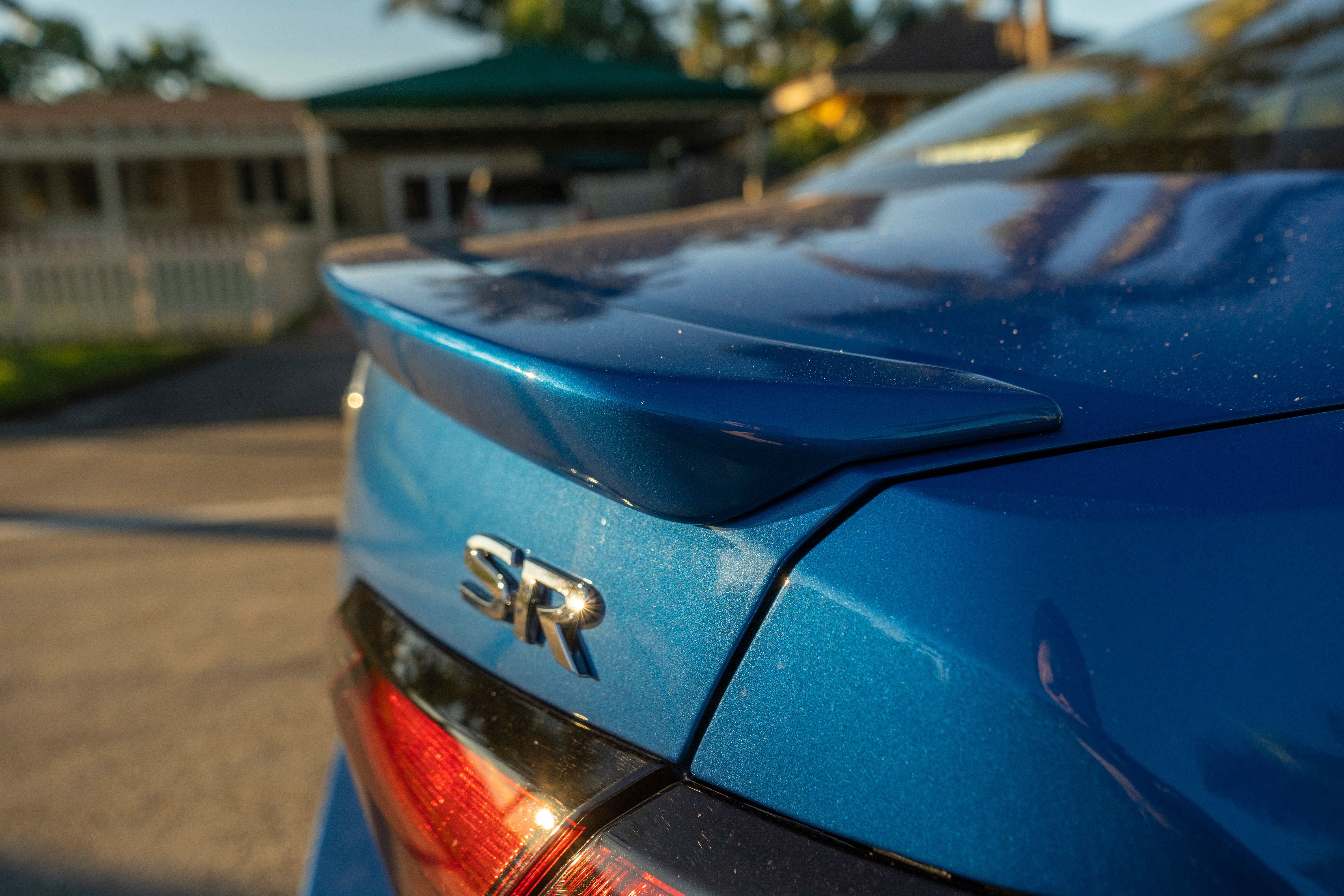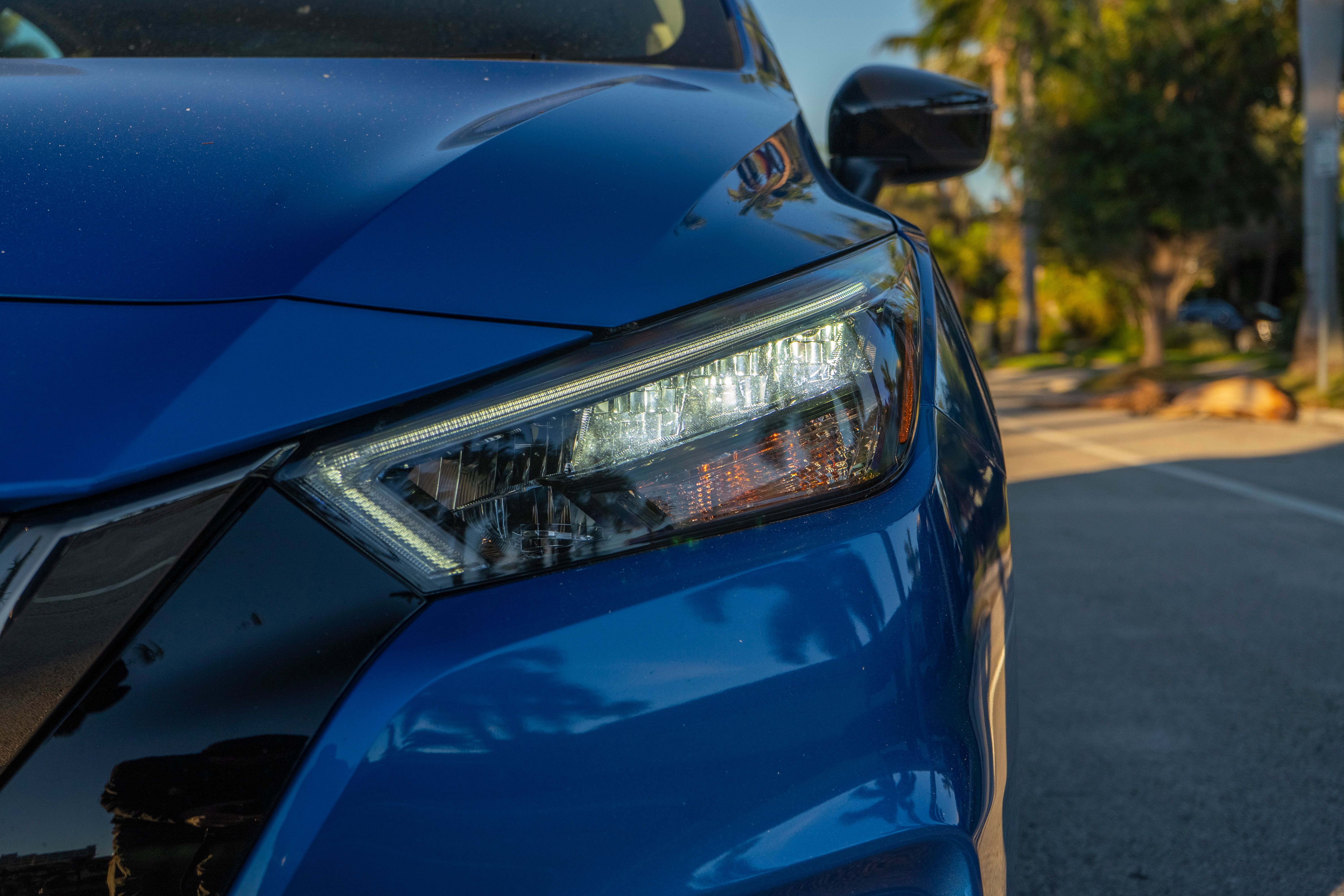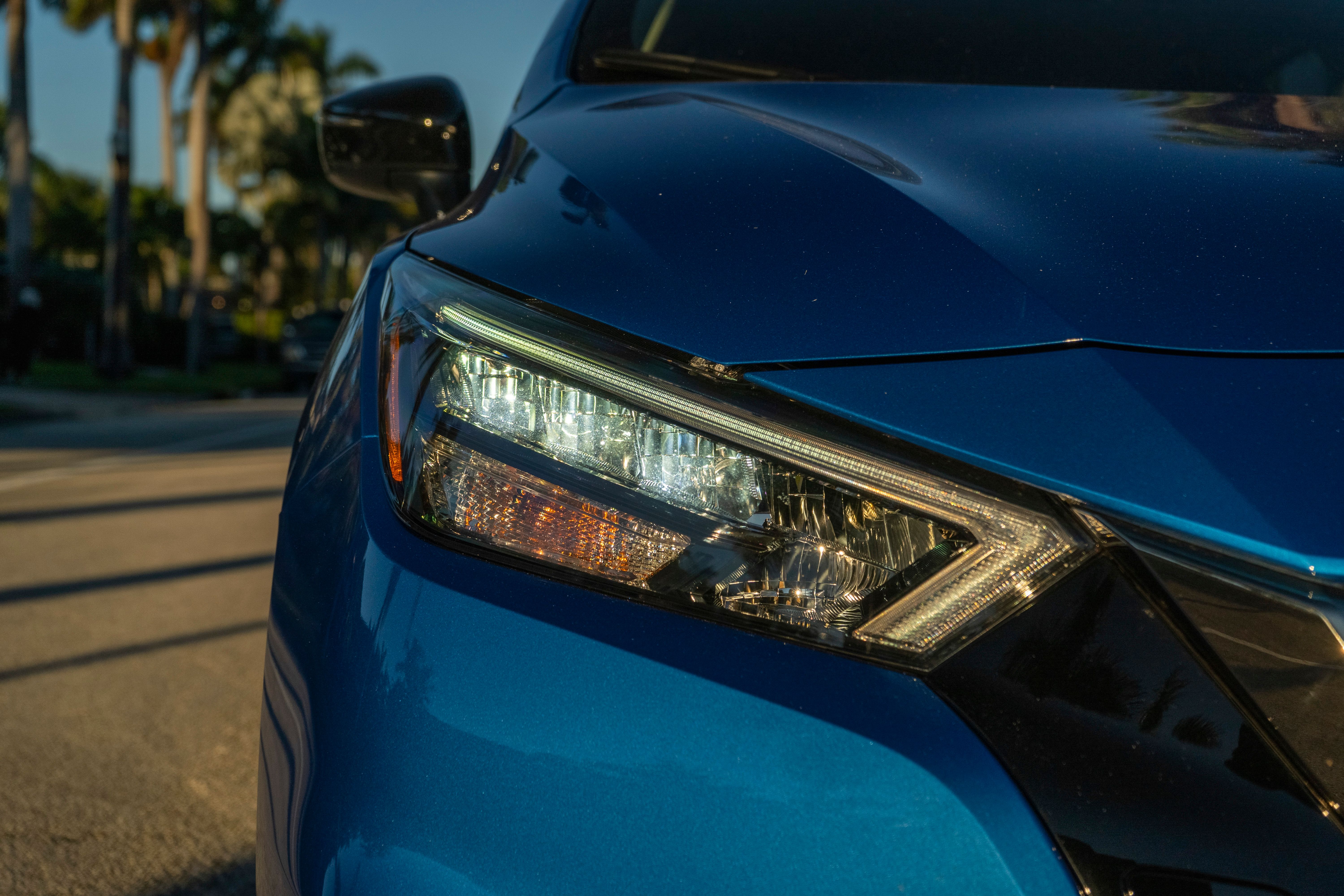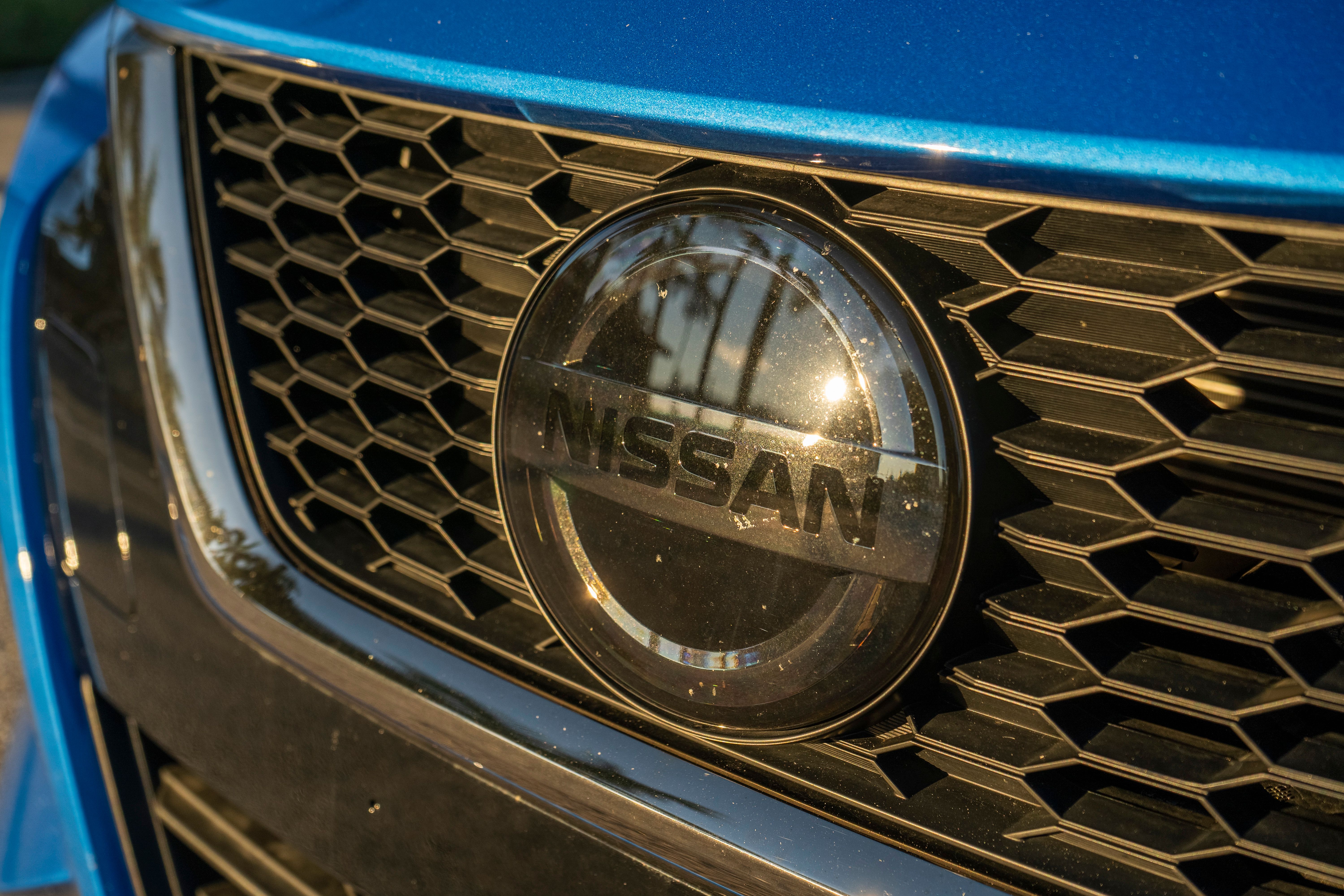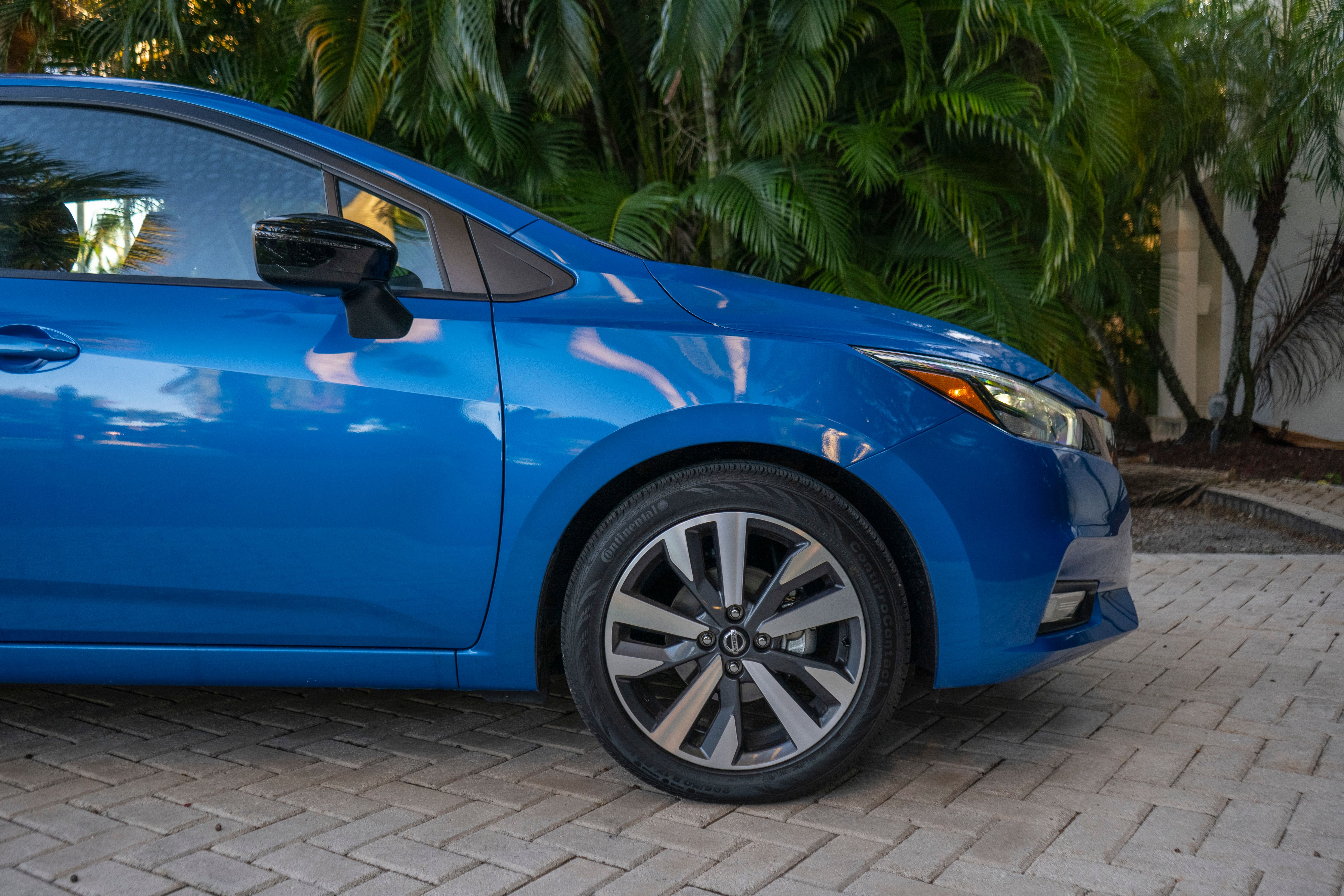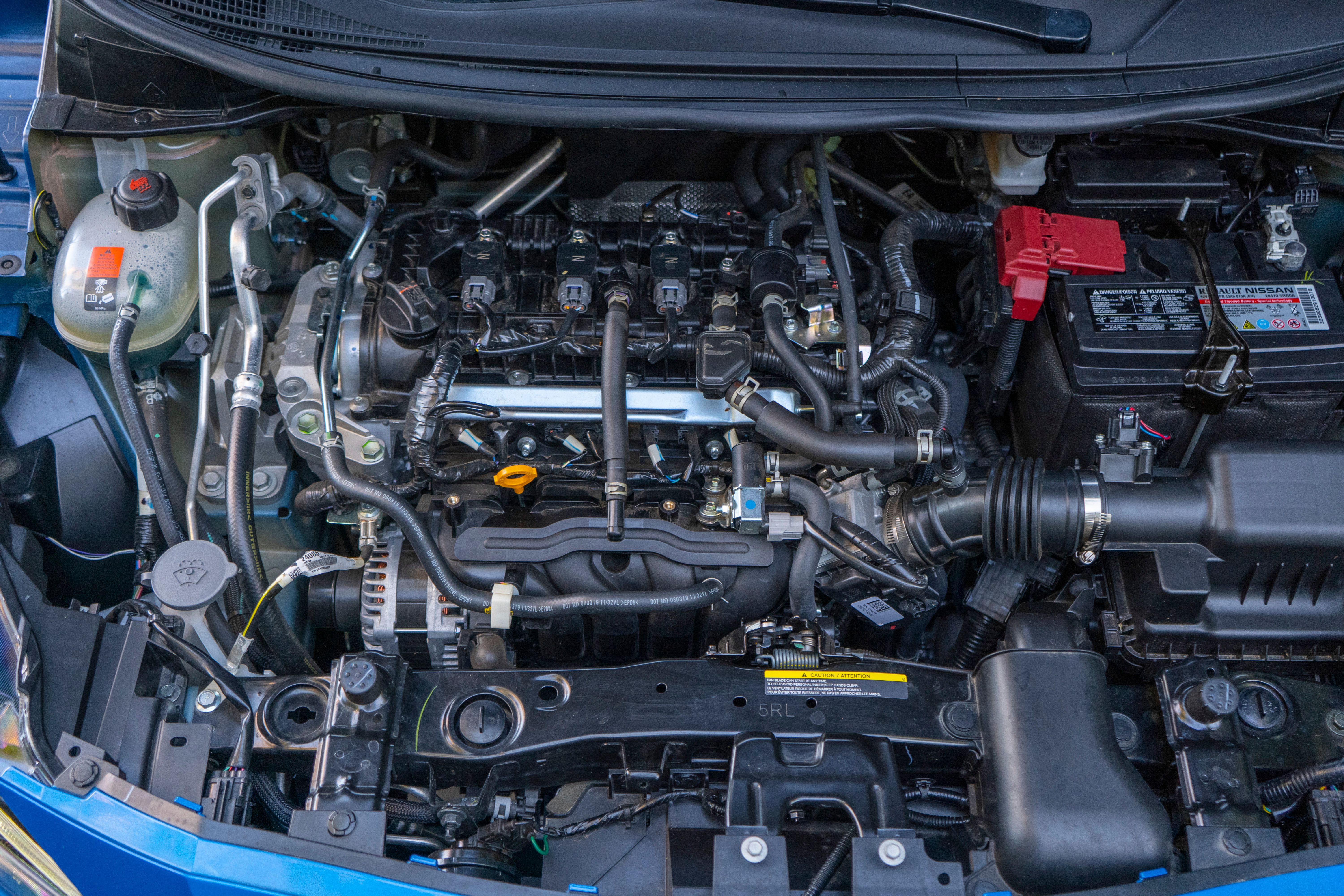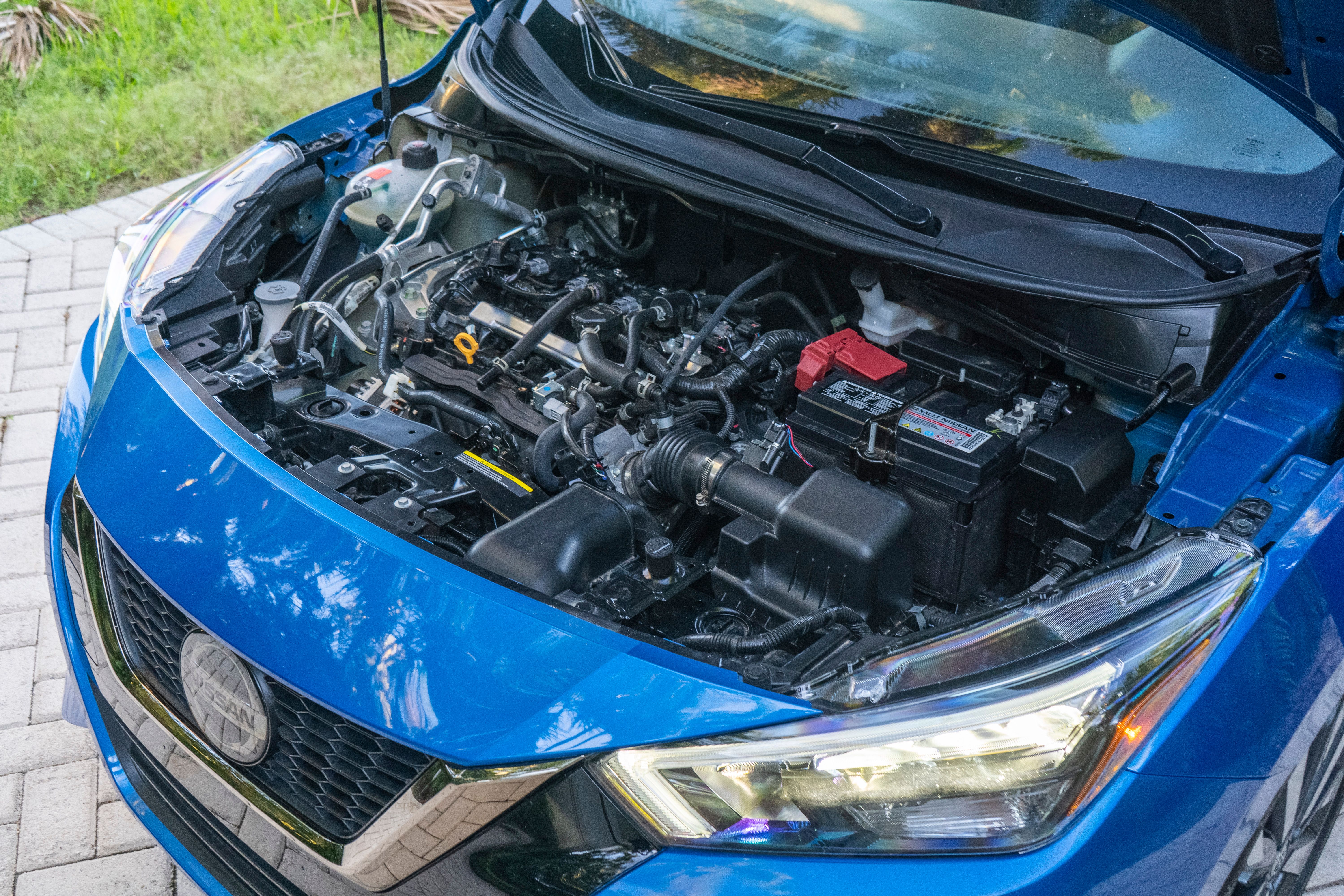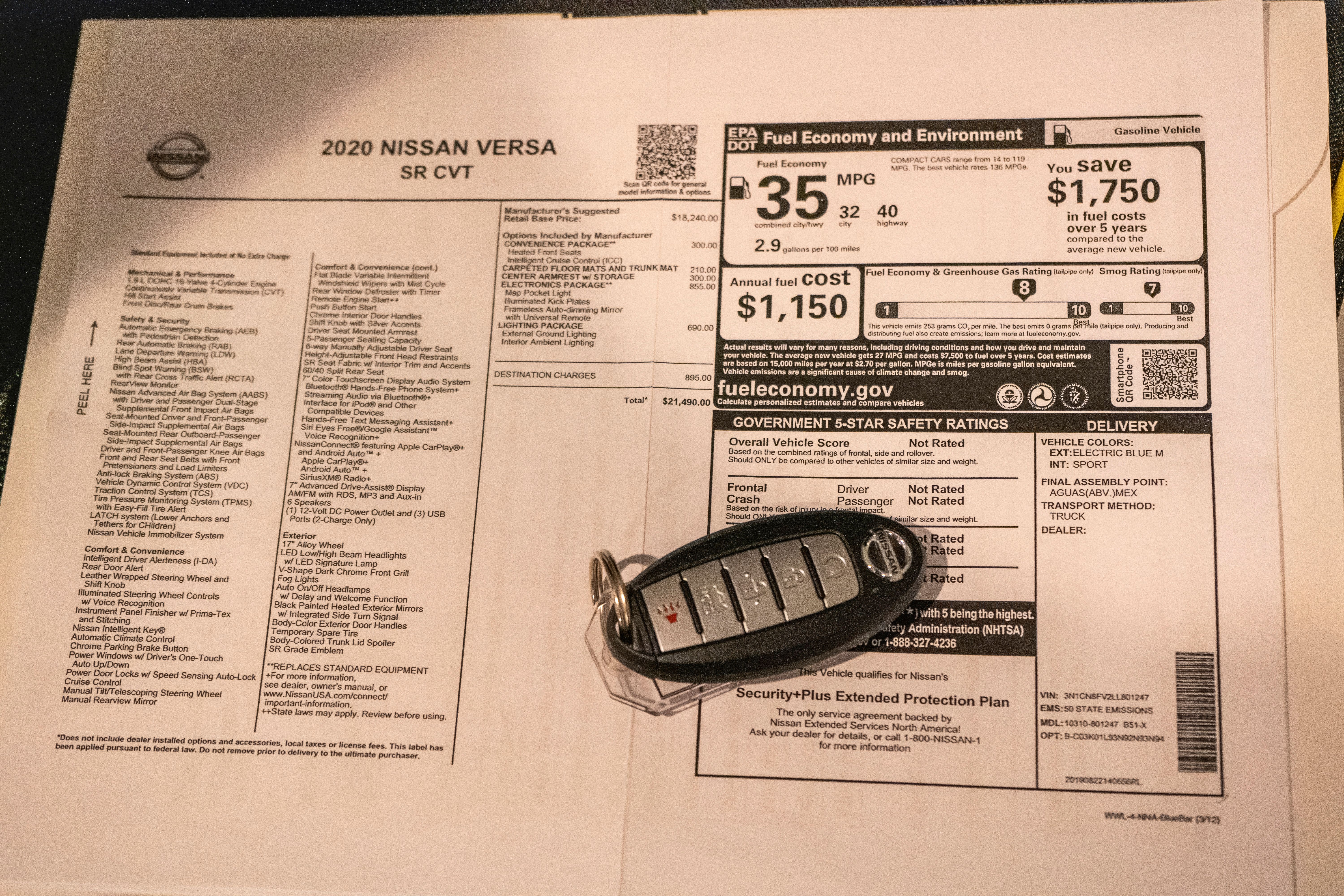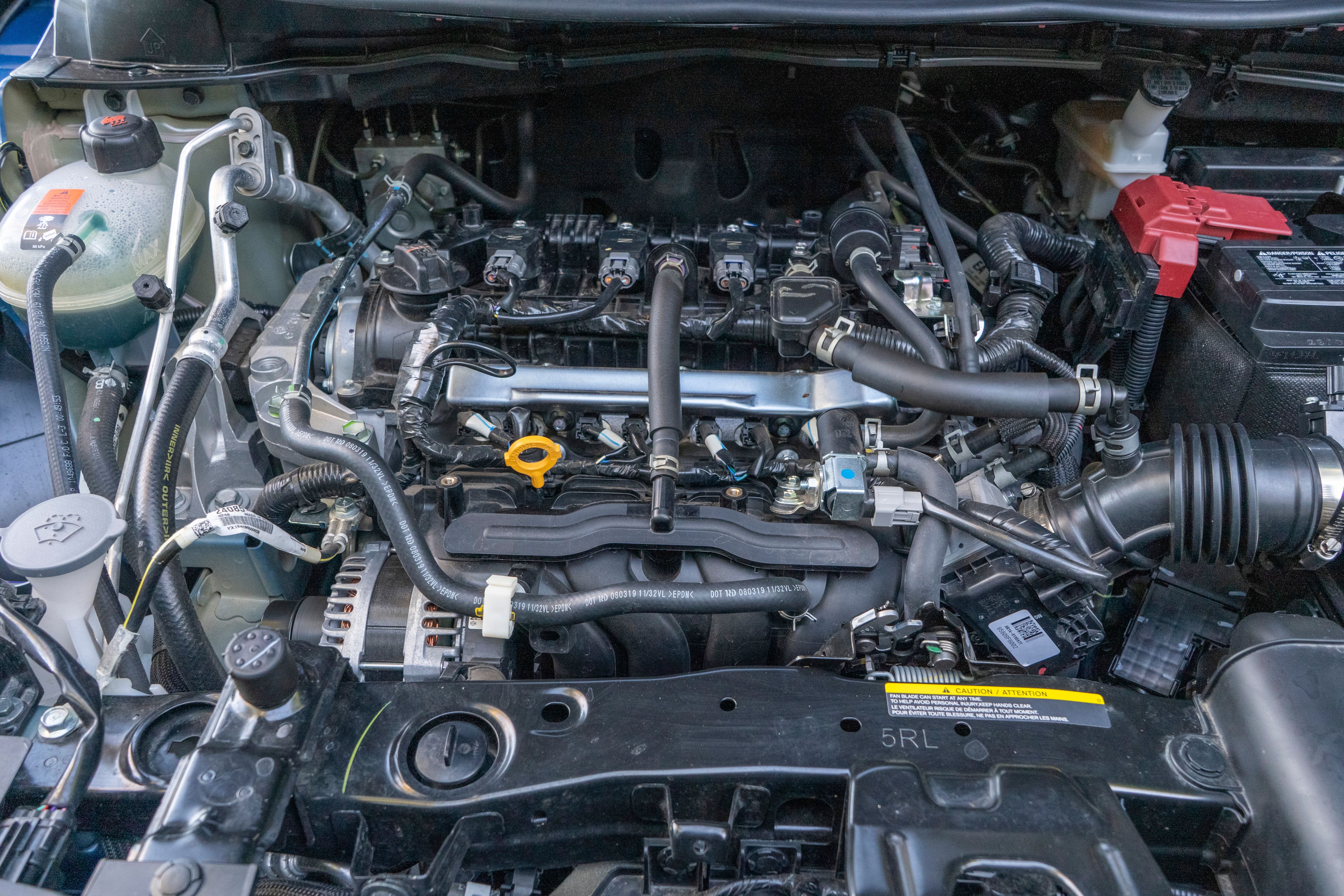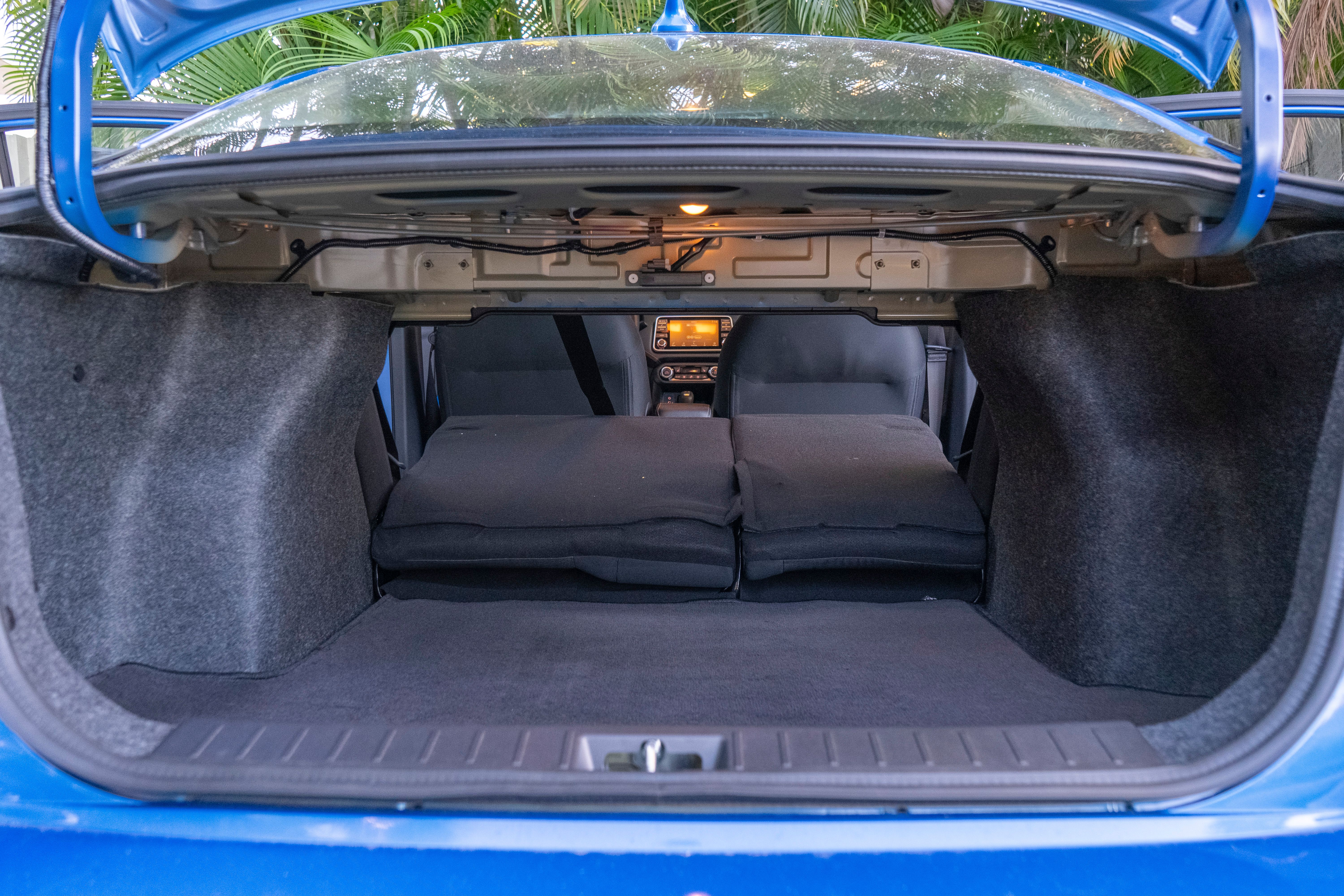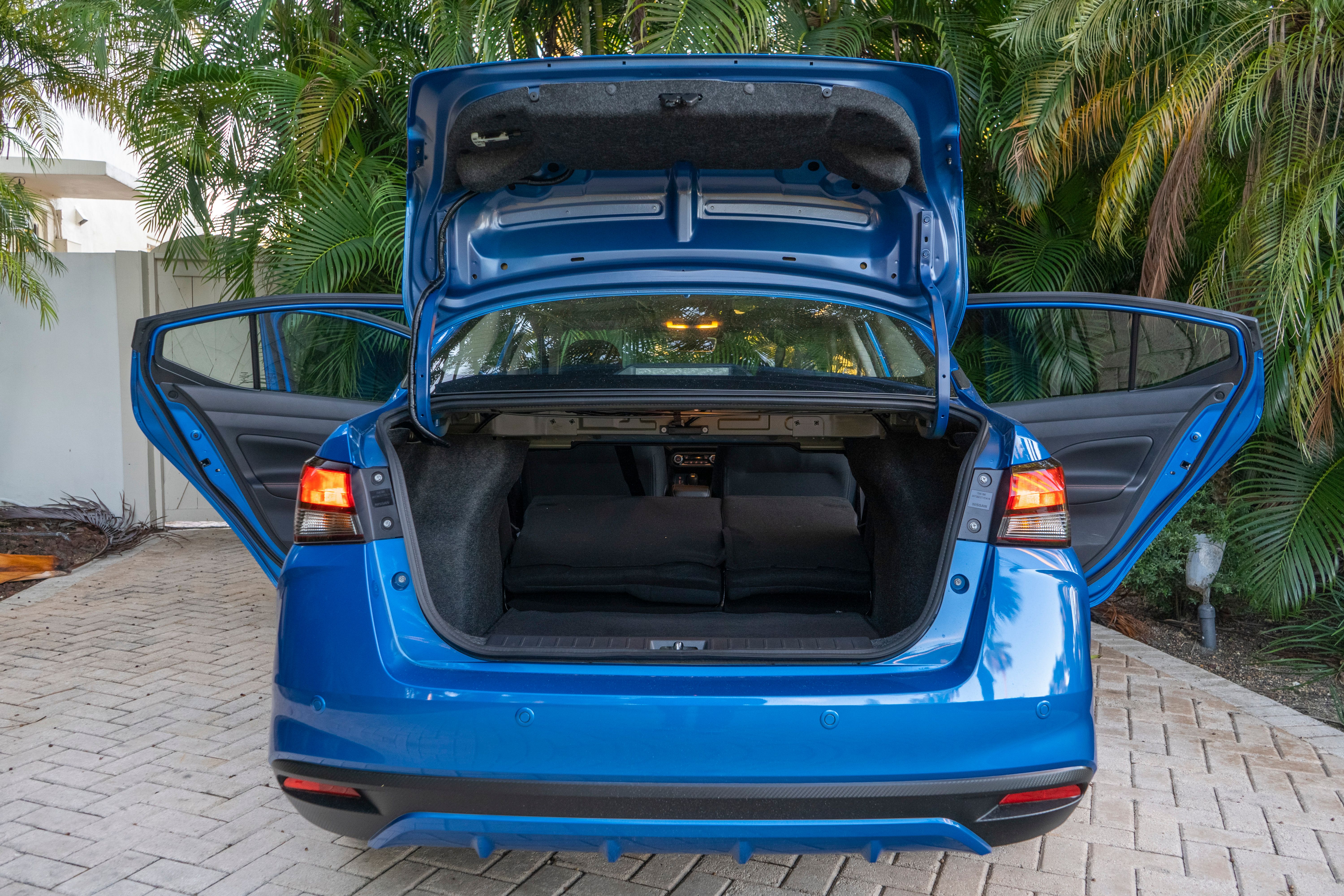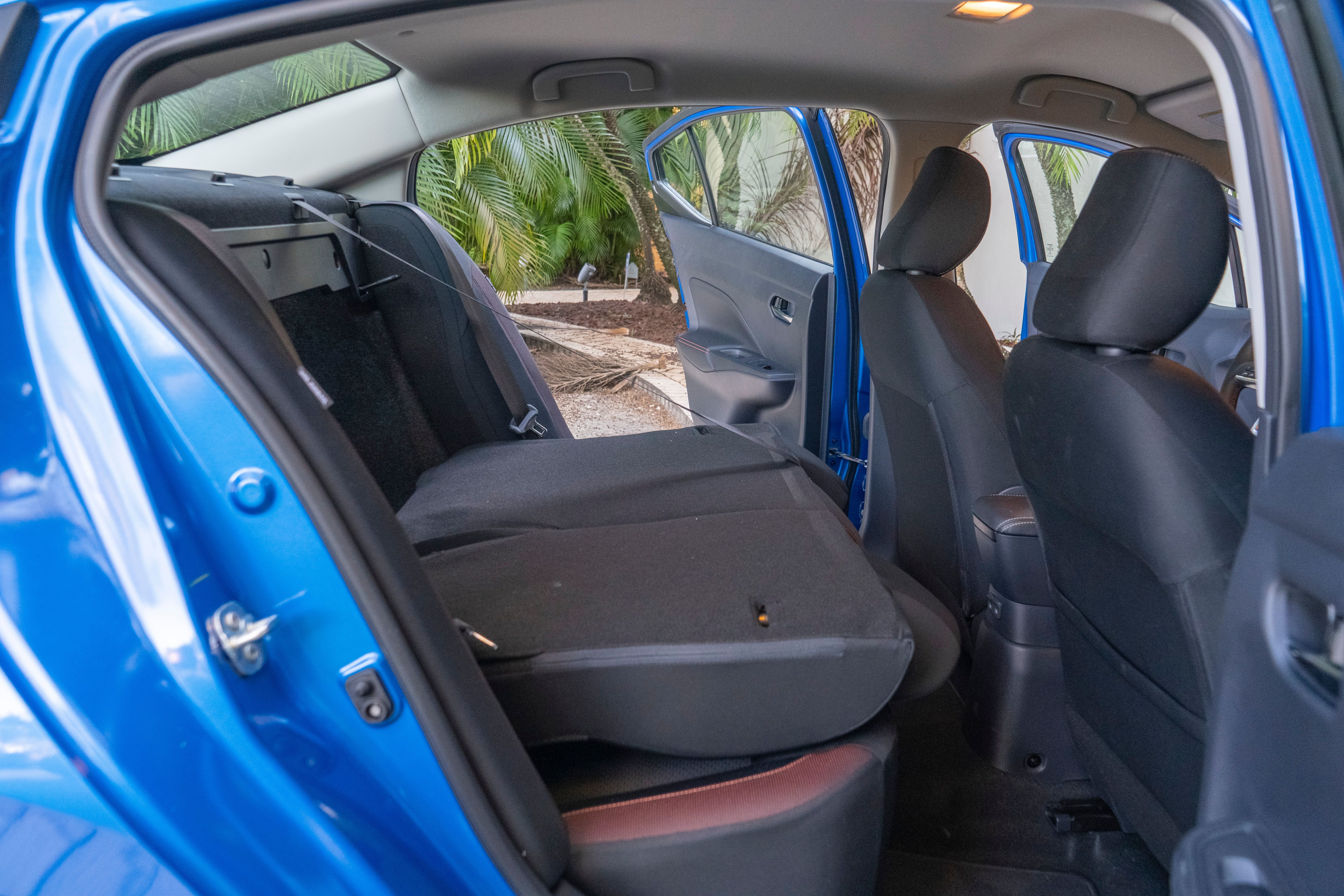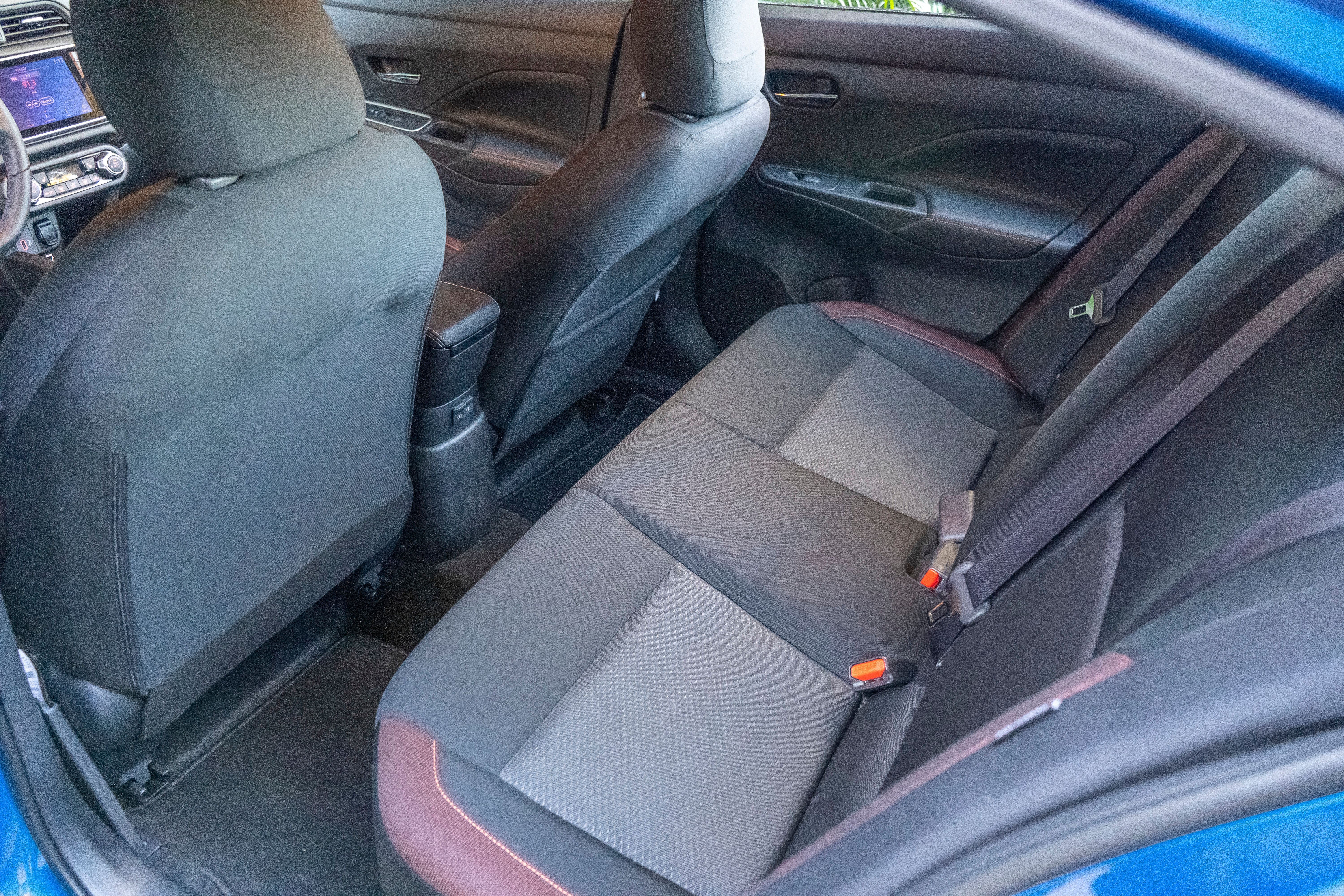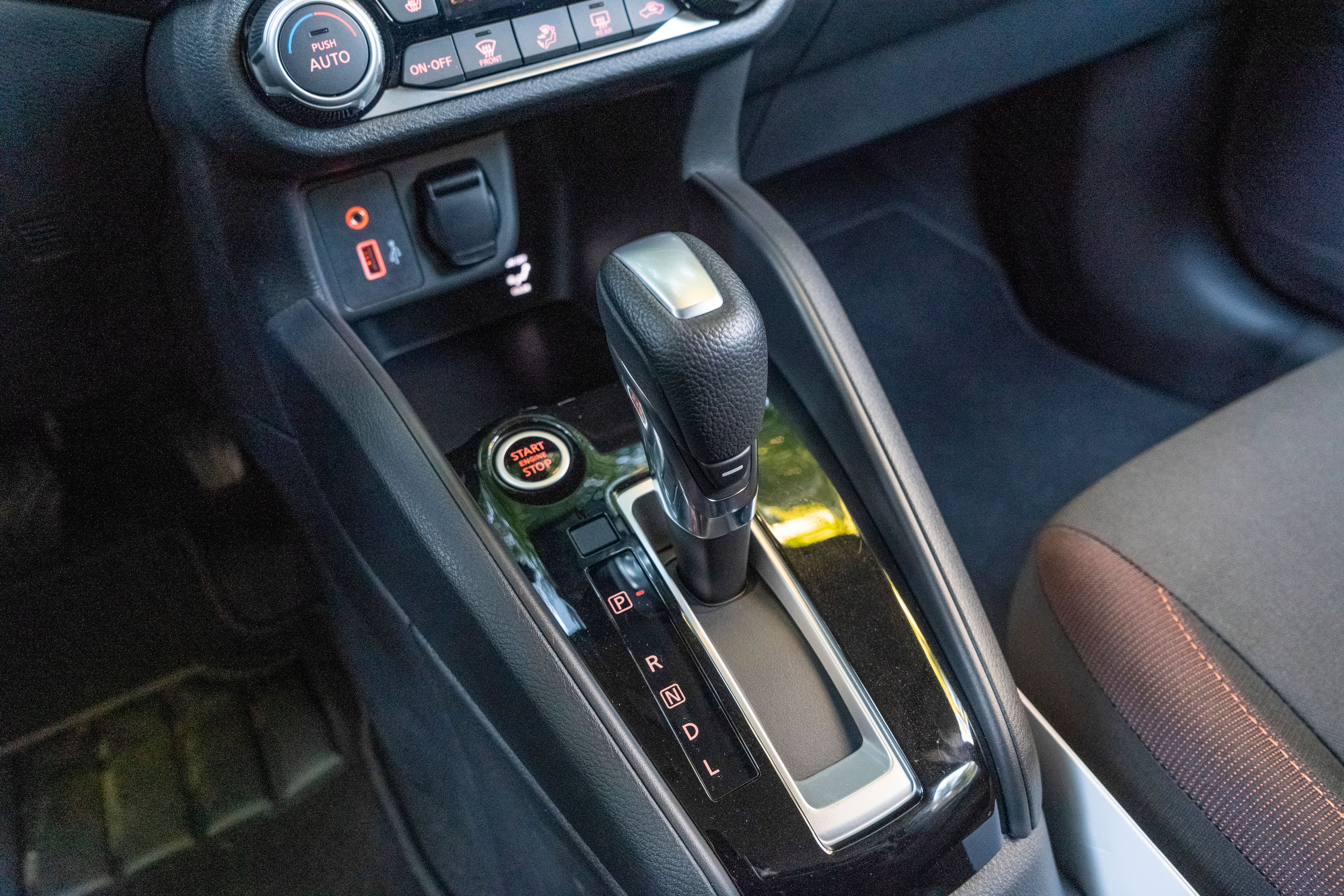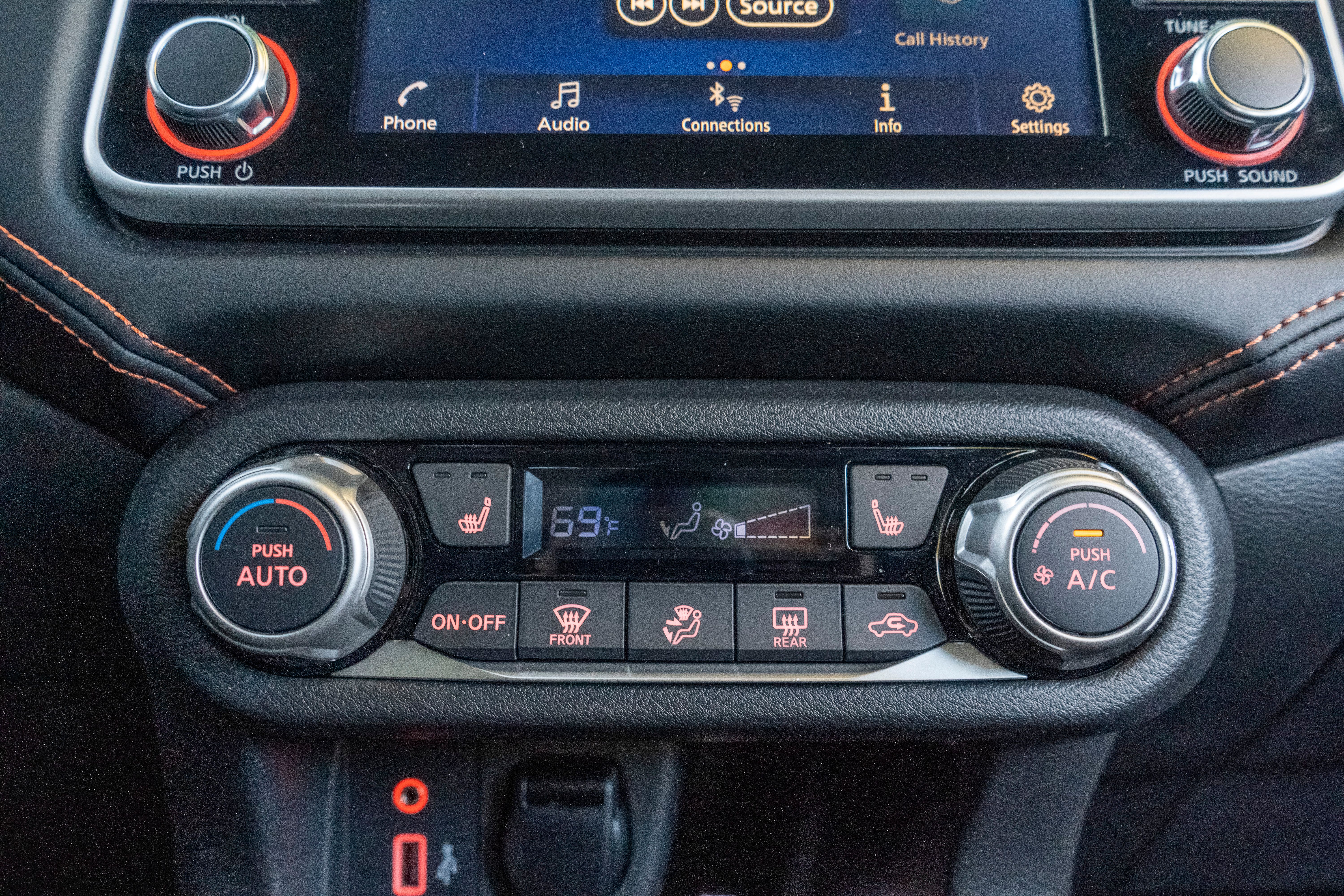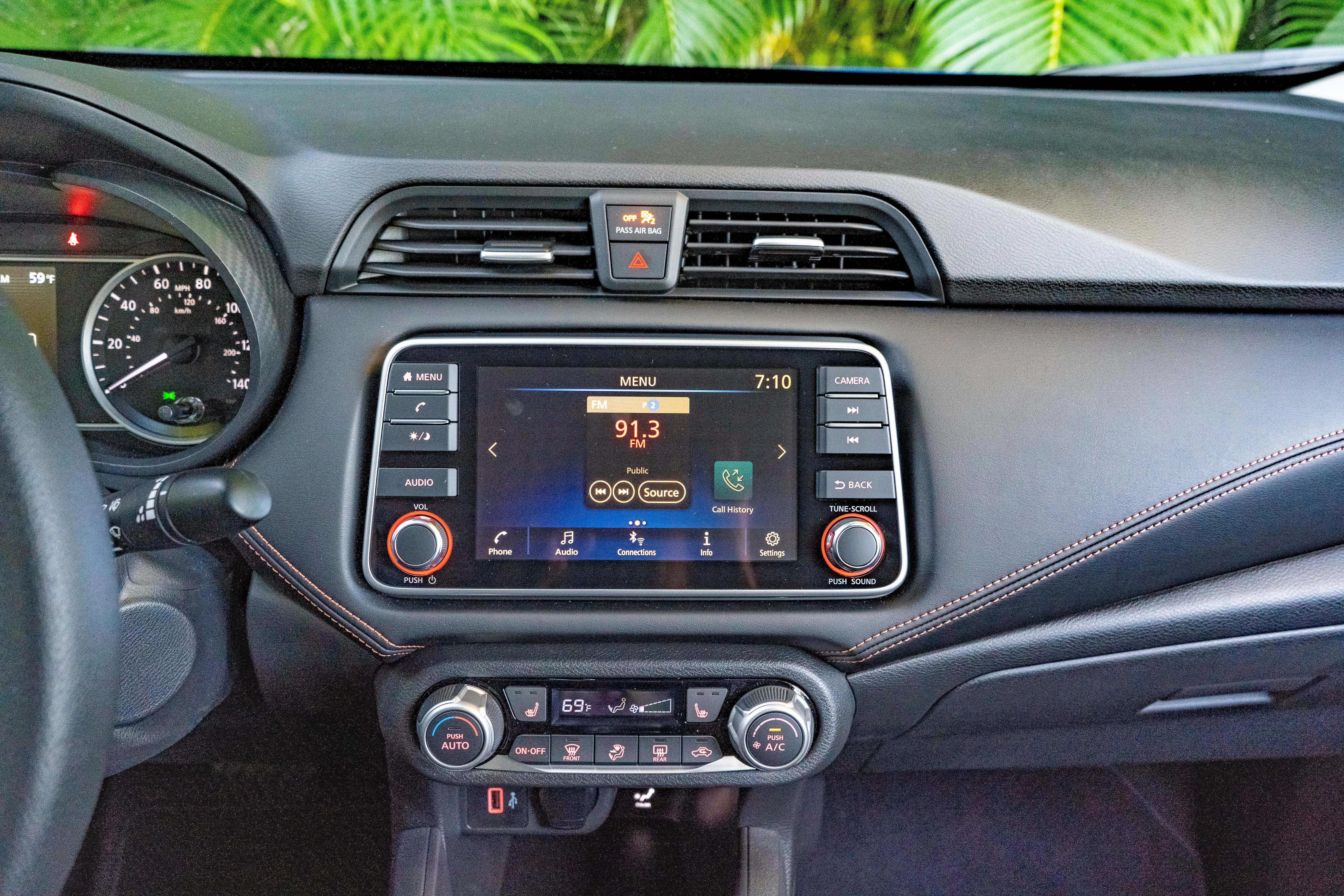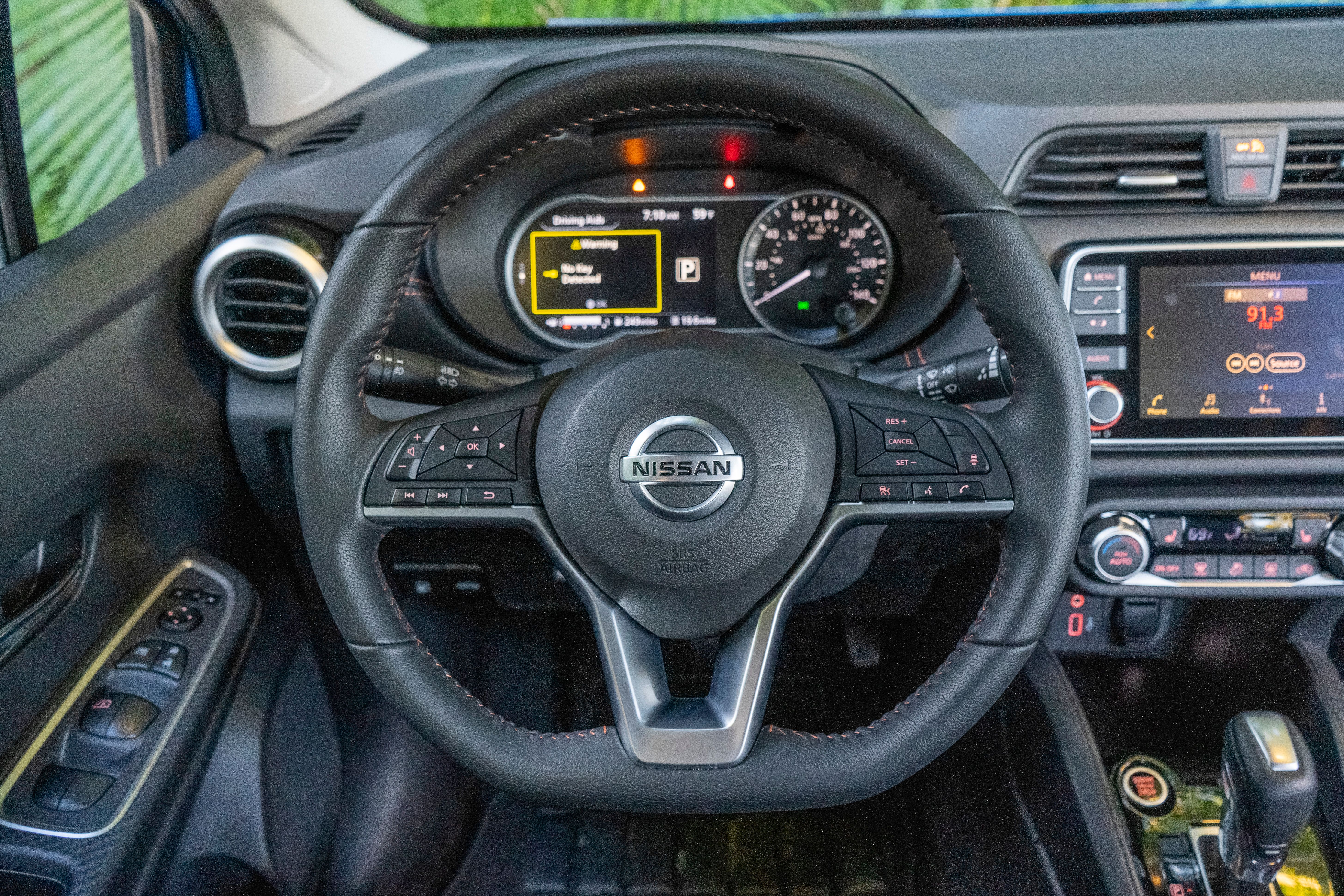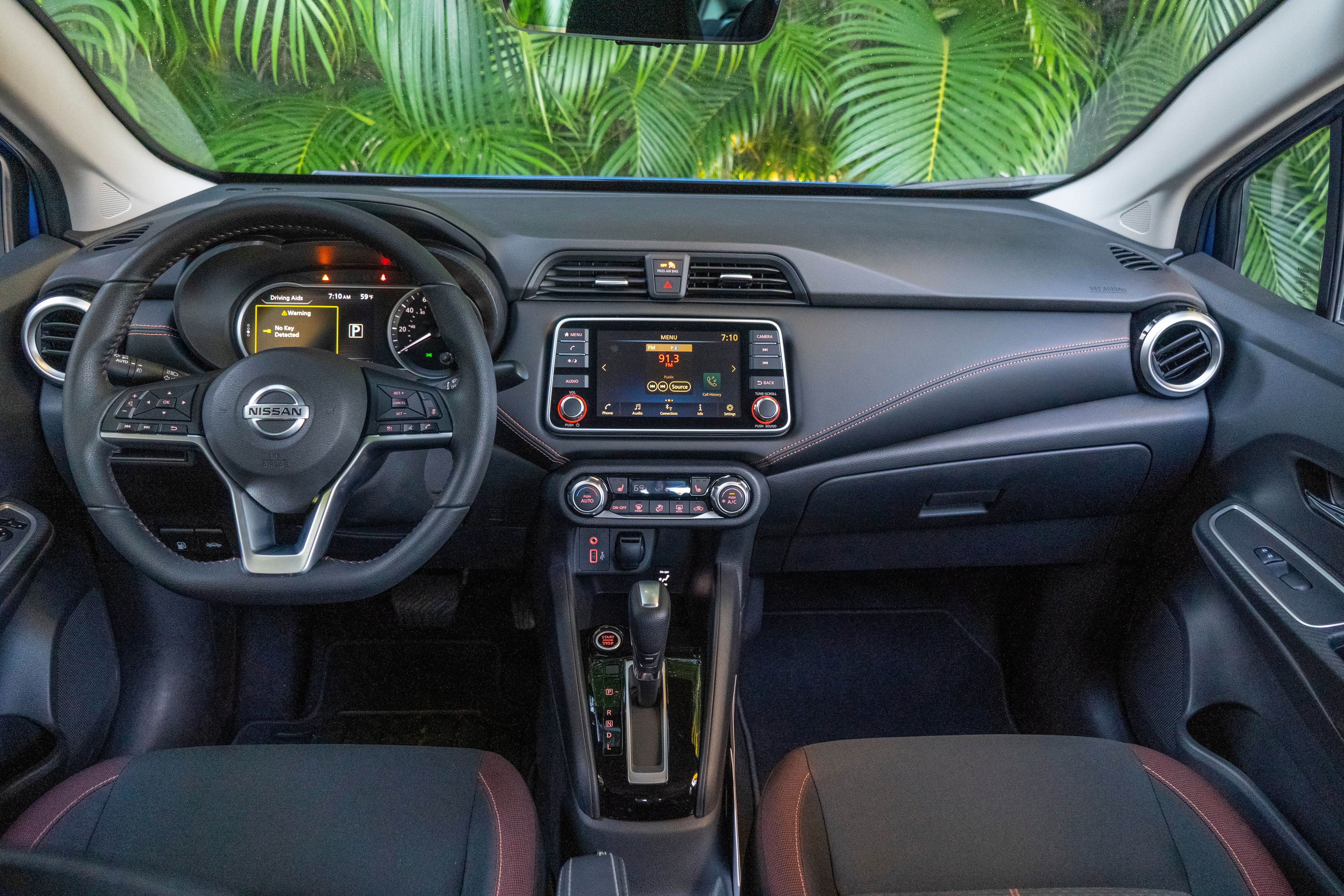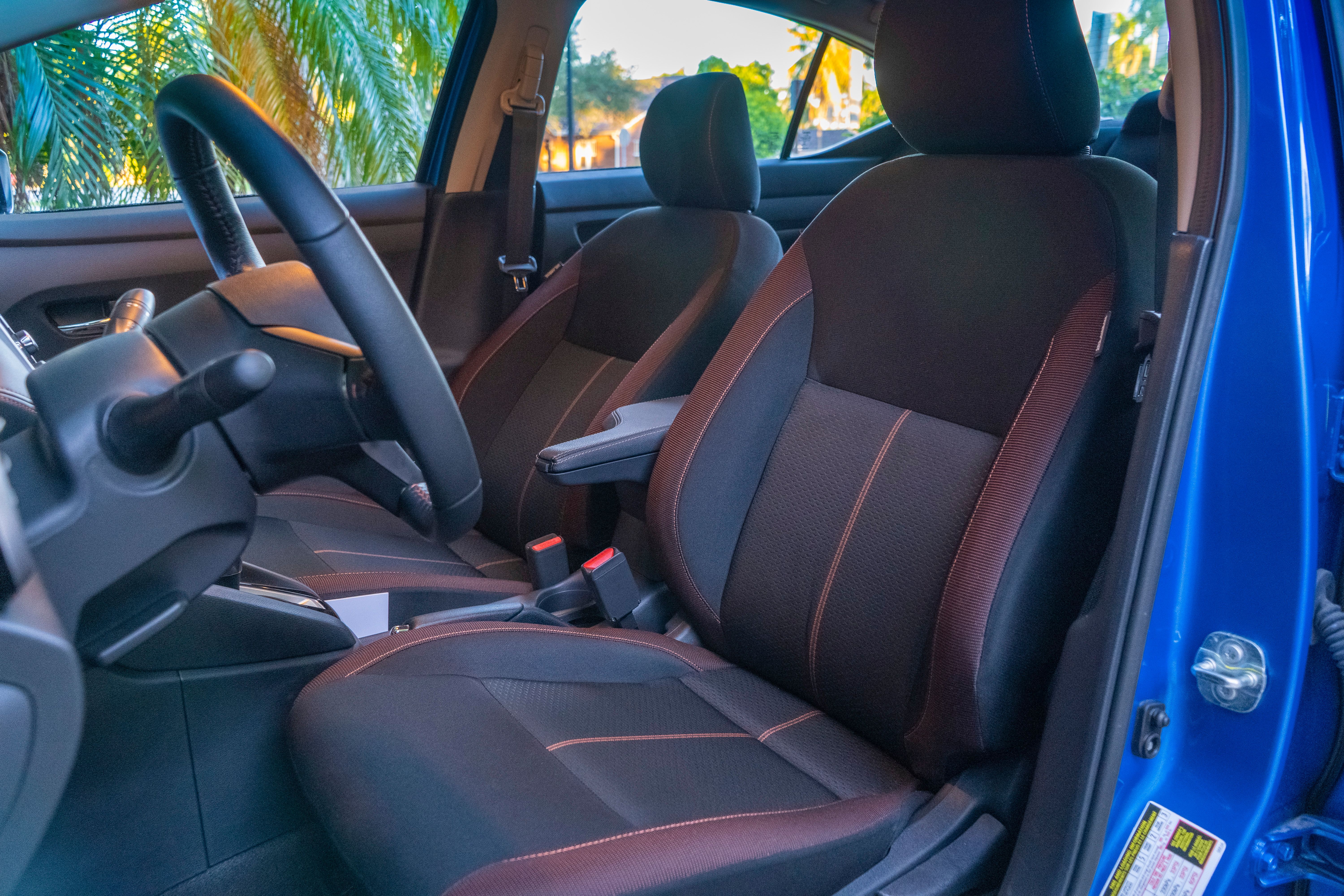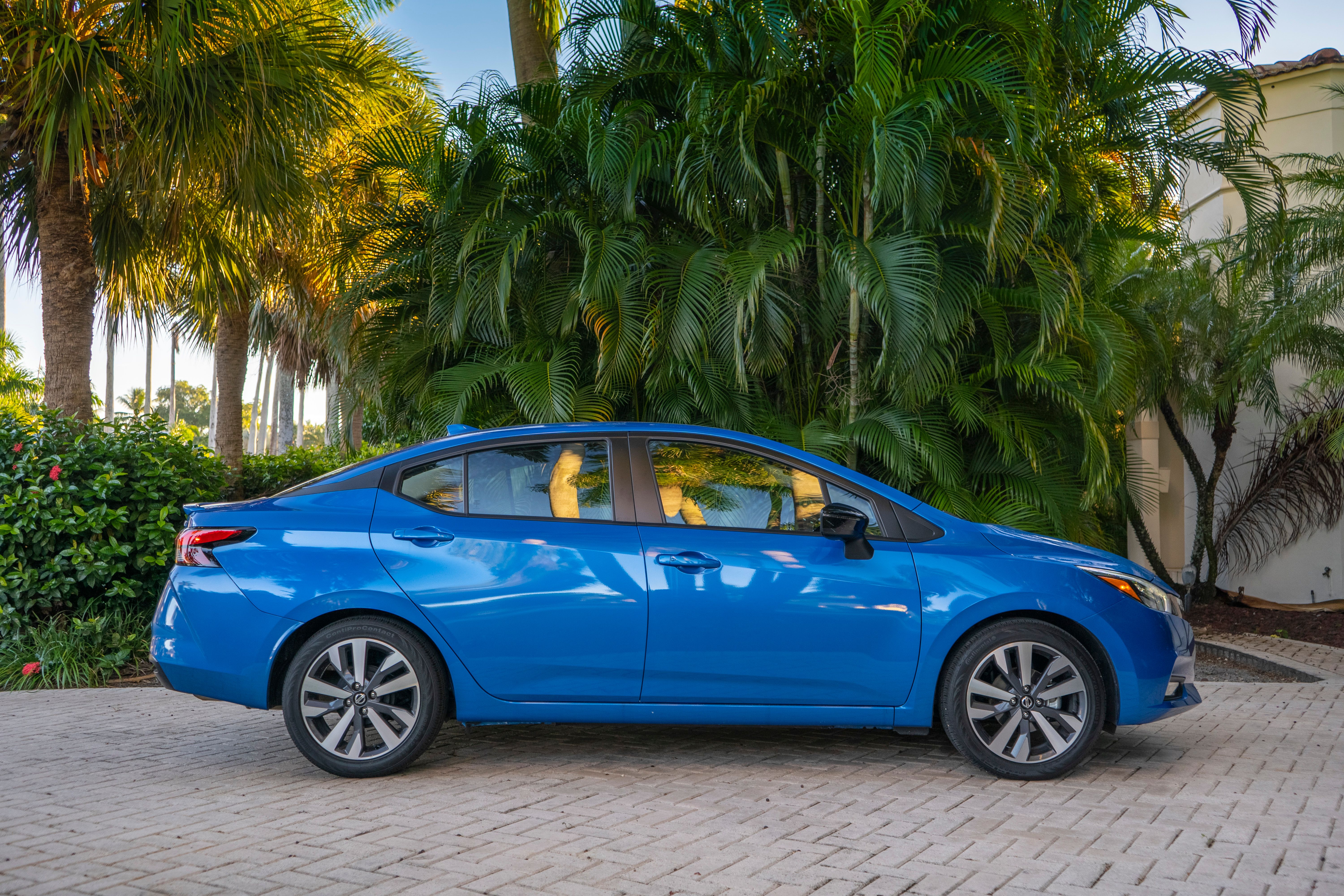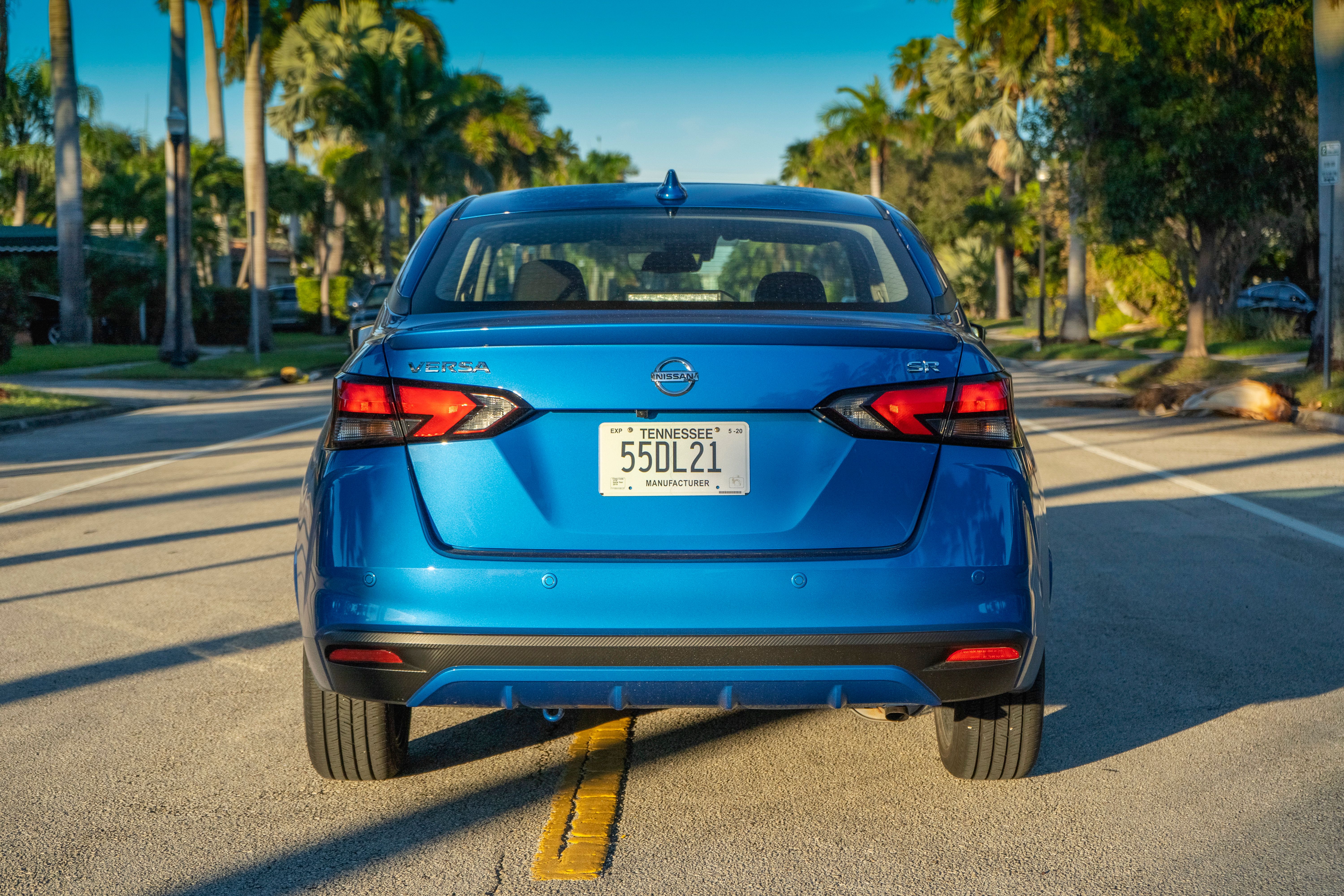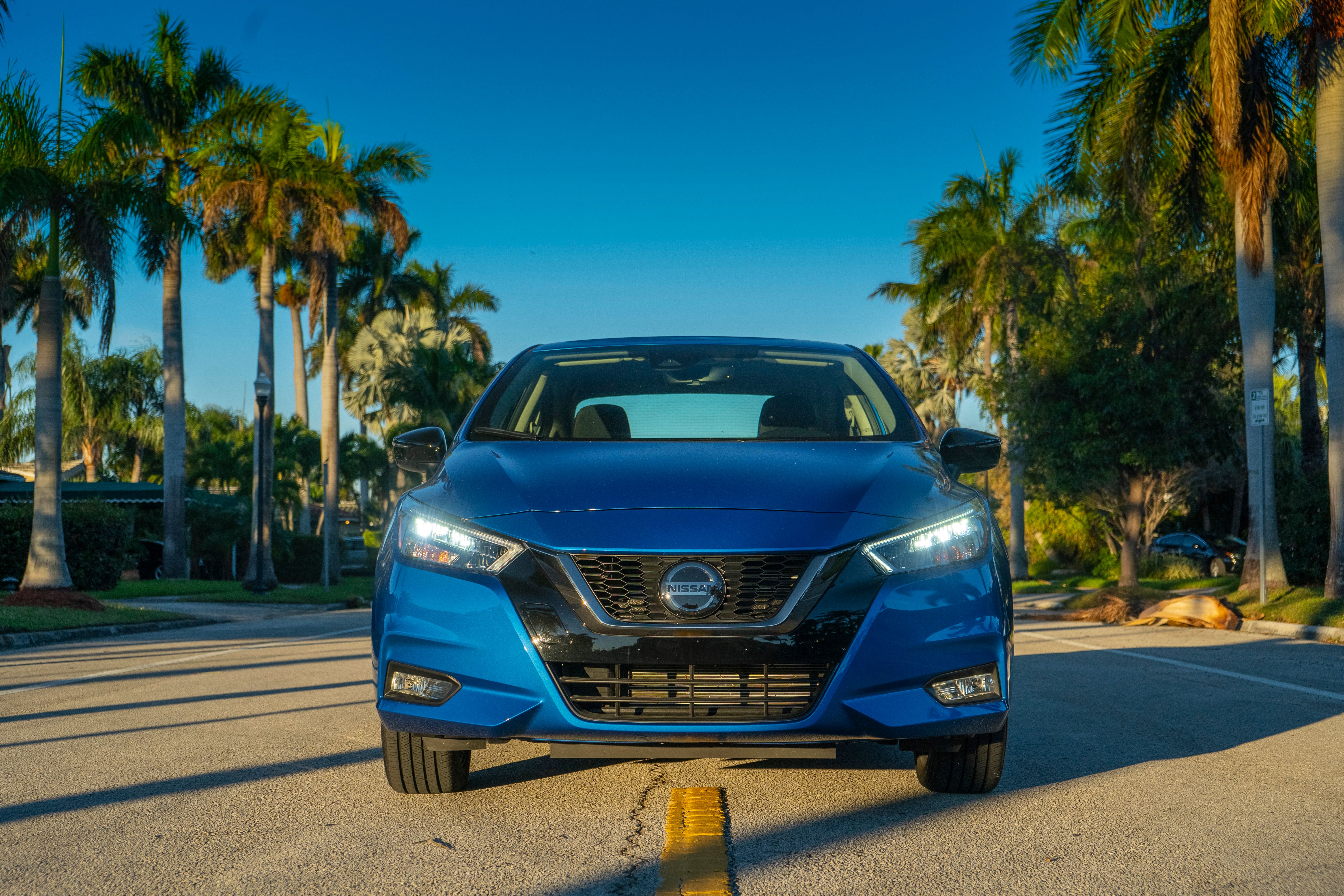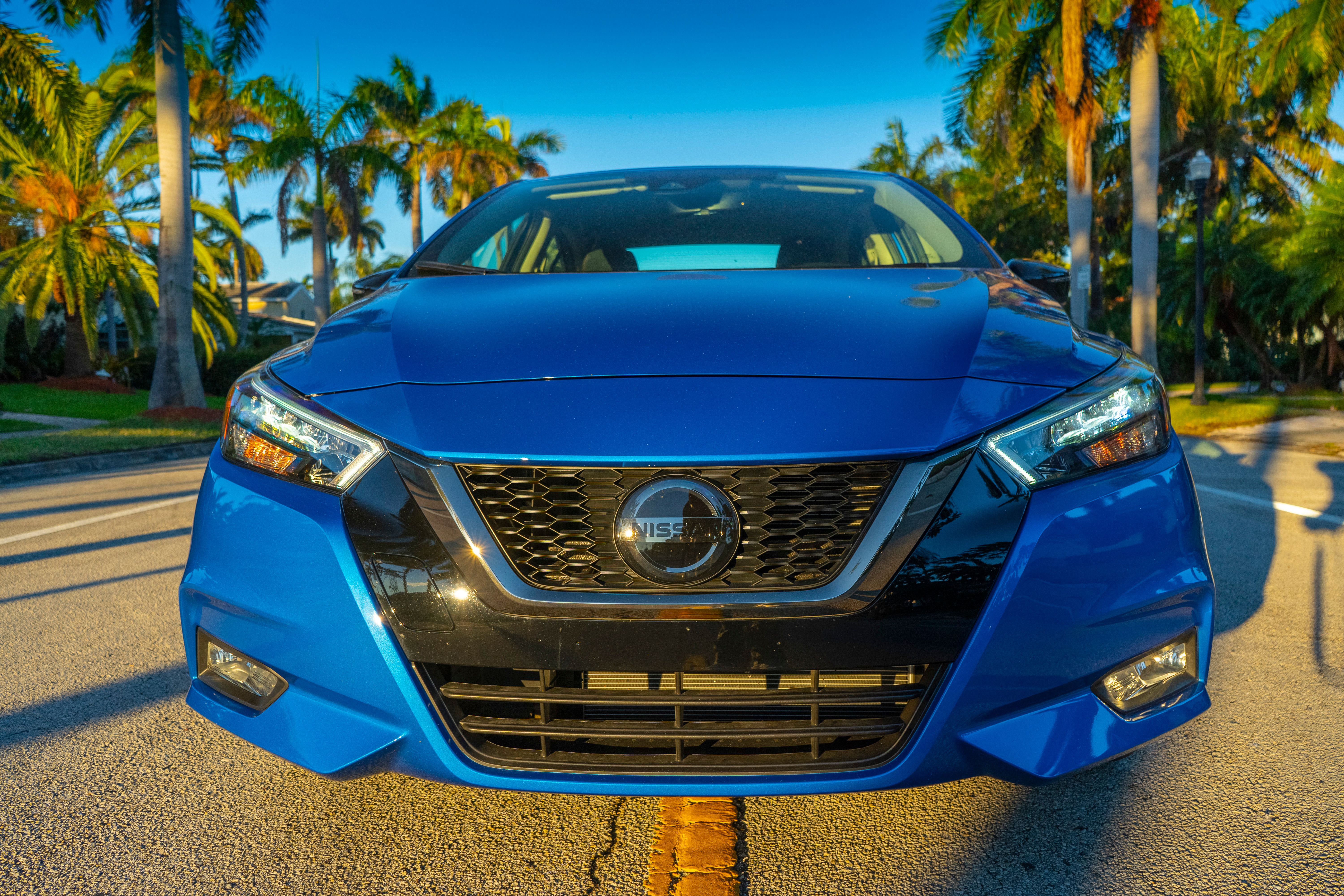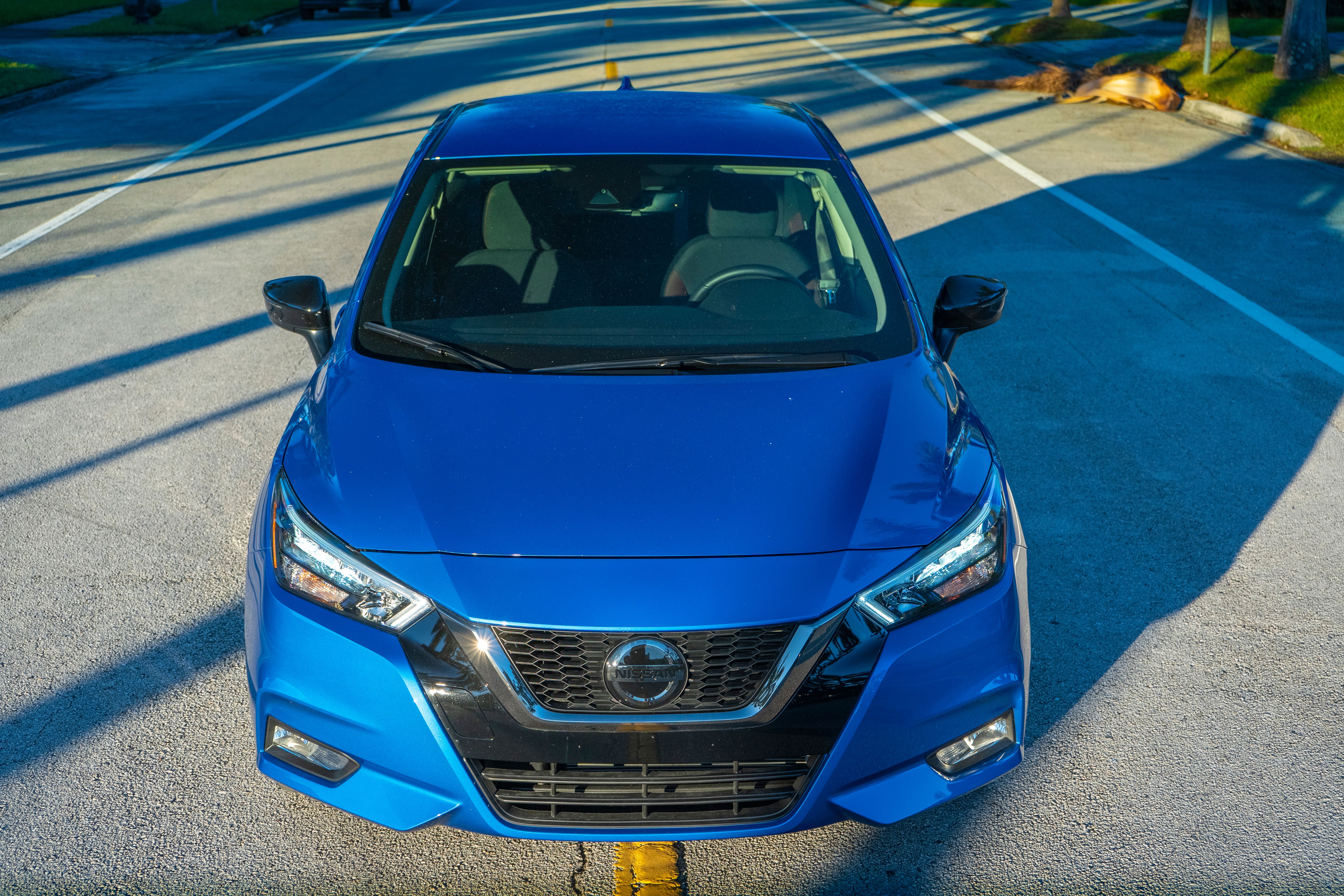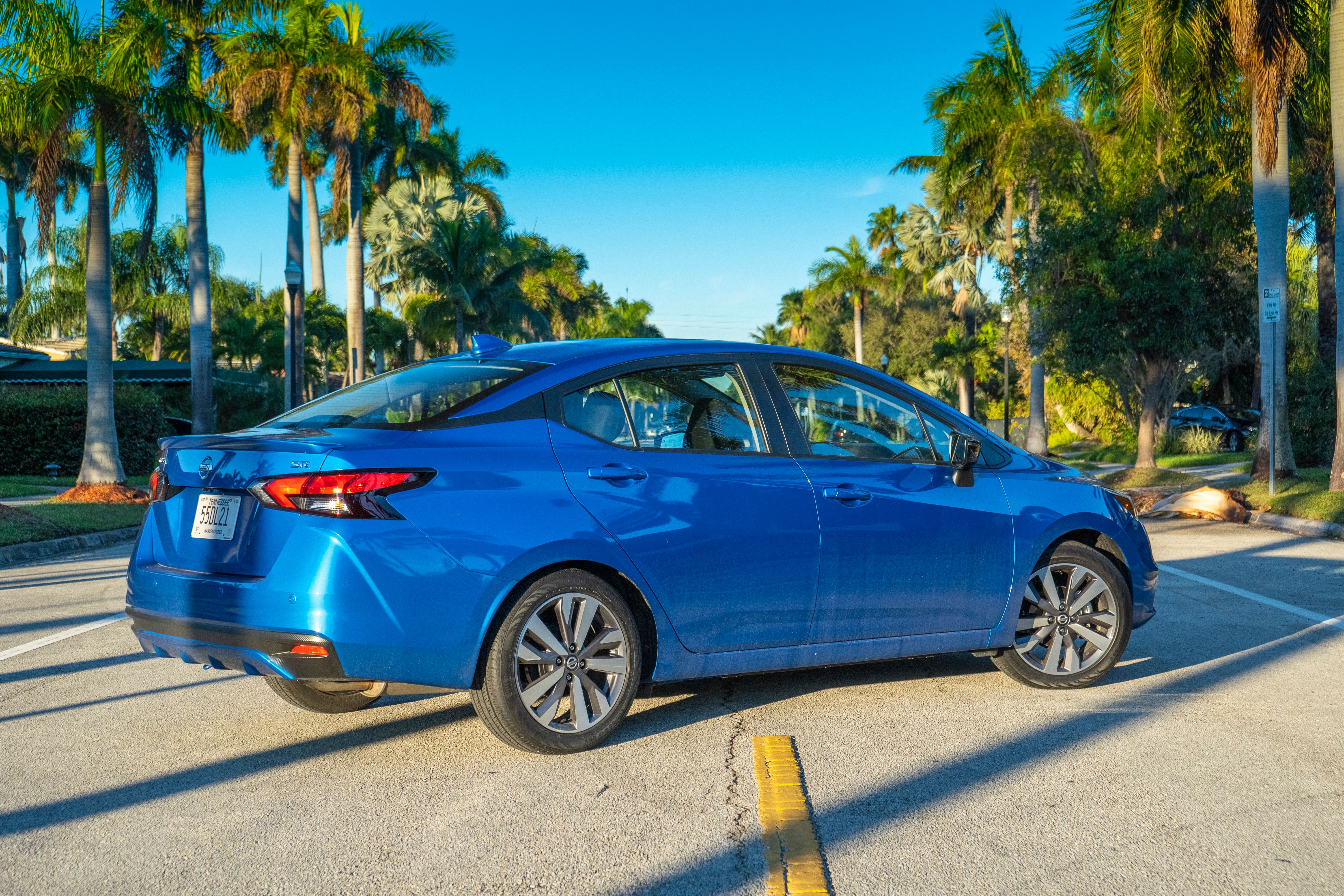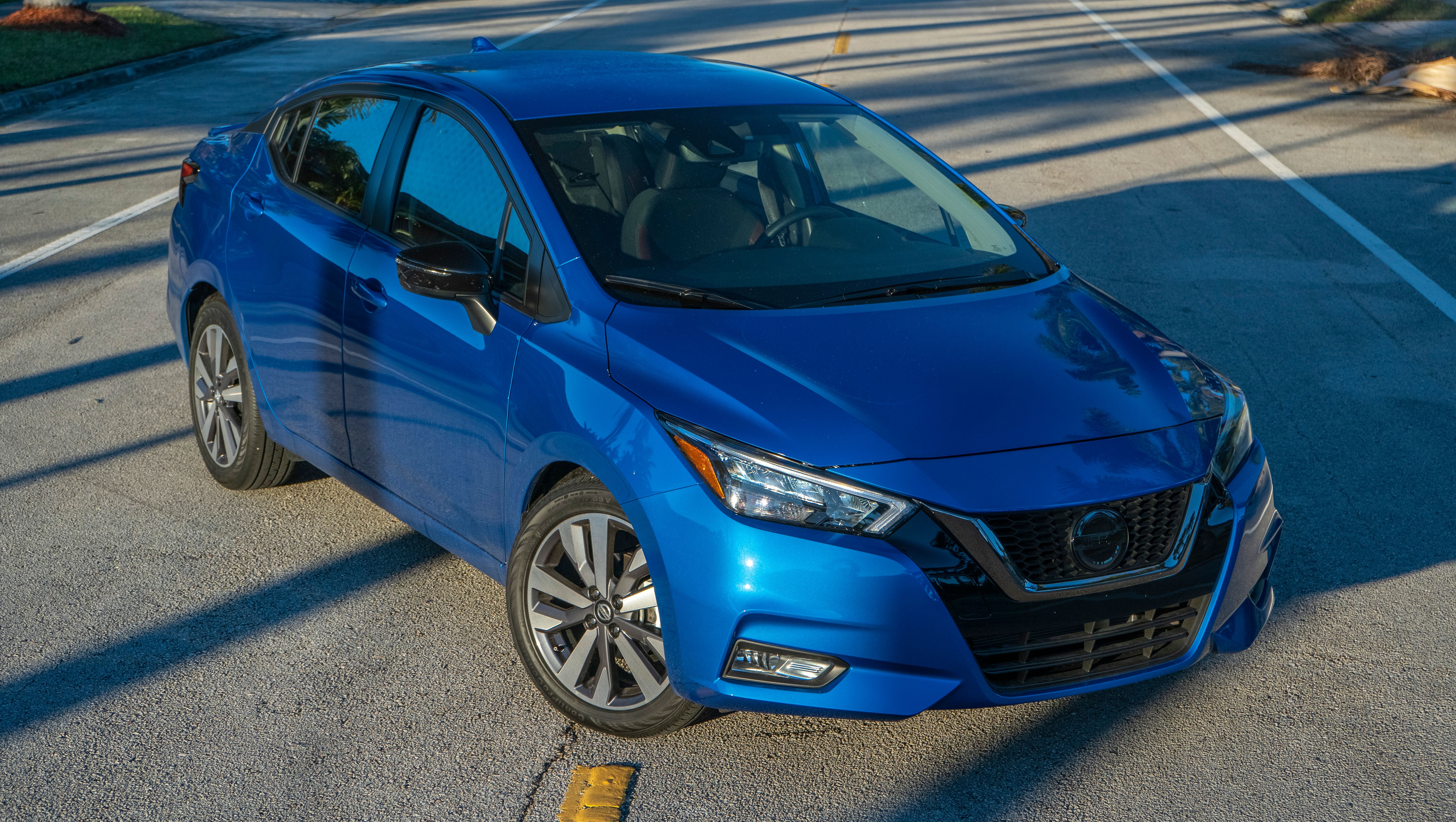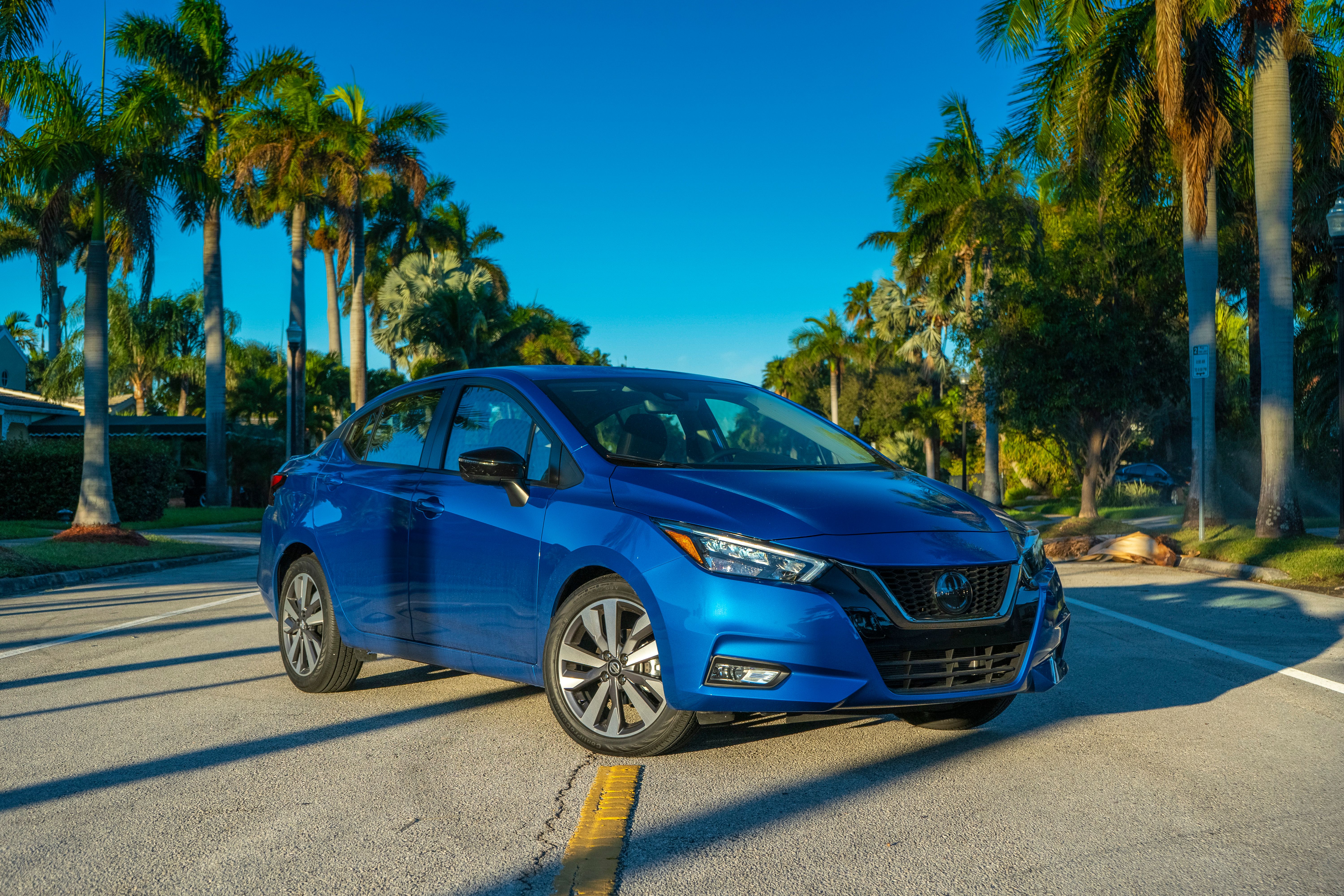The third-generation Nissan Versa was launched and the 2019 New York Auto Show, and with it came an all-new design inside an out. The new Versa features a wider body, was finally updated to feature Nissan’s V-Motion grille, and the rear end benefits form boomerang-shaped tail lights. We got the chance to test the SR model, so it had the extra spoiler on the rear deck but overall, as a package, the new Versa is sportier and more aggressive than before.
The interior felt a dramatic revamp as well, borrowing features from the recently updated Maxima and Altima. The new “Gliding Wing” instrument panel is probably the most recognizable change here, but we also had the SR model, so we were focused on things like the flat-bottom steering wheel, seven-inch infotainment display, and the red and black interior. In terms of cargo room, the Versa will swallow up 14.3 cubic-feet of goods with the rear seats in place or as much as 88.9 with the seats folded down.
Under the hood of our SR tester sits a 1.6-liter four-cylinder engine that was completely revamped from the last model. It delivers a meager 122 horsepower and 114 pound-feet of torque, which is, impressively, 12-percent more horsepower and 7-percent more torque. The engine sent the power to the front, 17-inch wheels via an automatic transmission. Pricing for the Versa SR starts at $18,240, but ours was priced at $21,490 with a few option boxes checked. Stay tuned for a full, in-depth review of the 2019 Nissan Versa SR.
2020 Nissan Versa - Driven
- Make: Array
- Model: 2020 Nissan Versa - Driven
- Engine/Motor: inline-4
- Horsepower: 122
- Torque: 114
- [do not use] Vehicle Model: Array
2020 Nissan Versa Exterior
Expectations are important when you’re talking about a car like the 2019 Nissan Versa. That usually comes with the territory of being one of the cheapest new cars you can buy in the market today. For the amount of money that you’re spending, you need to understand where that money is going.
Don’t get me wrong. The Versa is not an ugly car. On the contrary, it looks more expensive than its price tag suggests. Give Nissan credit for not only increasing the sedan’s overall proportions but, more importantly, for giving it a fresh design that as a lot of endearing qualities to it. The front section, for example, looks more alive and upbeat, a stark difference from the previous version, which looked like it had just come out of an all-night bender. The angular headlights are a nice touch and Nissan’s trademark V-shaped grille doesn’t scream for attention the way past versions did. The sedan’s profile is different, too. The windshield is more steeply angled and the character lines are a lot more defined.
All these design improvements may not evident when you look at them individually, but put them all together and you have a sedan that doesn’t look like it costs just a little over $10,000. That’s a huge victory for Nissan.
How Big is the 2019 Nissan Versa
A big part of the value provided by the Versa is its size. Longer and wider than its predecessor, the 2019 Versa now has a 103.1-inch wheelbase, a huge improvement from the 102.4-inch wheelbase of the previous model. Not only does that create more space in the interior, but it also gives the Versa a more mature stance. It’s not as pudgy as it once was. The longer wheelbase contributes to the sedan’s increased length, which now measures 177 inches. It’s not as long as the Honda Civic, but it has the edge over the Toyota Yaris in that respect. The same can be said for the car’s width, which now measures 68.5 inches, wider than the Yaris (66.7 inches) but not as wide as the Civic (70.9 inches). Likewise, the Versa measures 57.7 inches vertically. It’s taller than the Civic by a full two inches, but the Yaris is the tallest among the three, measuring 58.5 inches.
2020 Nissan Versa exterior dimensions
|
Length |
177 |
|---|---|
|
Width |
68.5 |
|
Height |
57.7 |
|
Wheelbase |
103.1 |
|
Front Track |
58.3 |
|
Rear Track |
58.5 |
One thing that doesn’t play well with us the Versa’s ground clearance. Sure, a 6.8-inch clearance means that its underside is less likely to get gobsmacked by uneven roads, but a higher ground clearance doesn’t do any favors to a car’s sporty stance. The 5.5-inch ground clearance of the Toyota Yaris is a bit much and the Civic’s own 6.7-inch ground clearance sits a little too high for our tastes, too. Then again, debating about how much space there is between the Versa’s underbody and the road doesn’t mean a lot given what kind of car we’re dealing with here.
Let’s just be happy that the 2020 Nissan Versa is bigger than its predecessor. The extra space provided by the size increase is a good thing.
2020 Nissan Versa Interior
look It’s not as heavy as the 2,771-pound Honda Civic, but the Yaris is a lot lighter, tipping the scales at just 2,447 pounds. The disparity in weight between the Versa and the Yaris has less to do with the Versa’s size and more to do with the Yaris’ size. The latter is simply a smaller — and lighter — vehicle.
2020 Nissan Versa Powertrain
2020 Nissan Versa interior room
|
Front Headroom |
39.5 |
|---|---|
|
Front Shoulder Room |
53.1 |
|
Front Legroom |
44.5 |
|
Front Hip Room |
50.9 |
|
Rear Headroom |
36.3 |
|
Rear Shoulder room |
53.6 |
|
Rear Legroom |
31 |
|
Rear Hip Room |
50.1 |
Each Versa trim also comes with unique upholstery so that’s something to look forward to as well. Even the build quality of the dashboard is much improved. It looks cleaner and more sophisticated now. Look closer and you’ll even realize that the Versa’s dash is identical to the dashboard of the Kicks crossover. That includes the standard 7.0-inch touchscreen infotainment system and partially digital gauge cluster.
Even small details like the push-button start and the three standard USB ports are all victories for the new Versa, not because they’re improvements from the previous model, but because the earlier model didn’t even have them — there was one USB port in the predecessor — to begin with. Throw in some fancy options like heated front seats, automatic climate control, and Apple CarPlay and Android Auto functionality, and you might even forget that you’re inside a car that costs less than $20,000.
It’s still not the best-handling car in its segment, but from where our expectations were when we first got inside the Versa RS to the moment we got out of the car after a few hours of test driving, Drive the previous-generation Versa and you won’t find any of these driver-assistance techs anywhere. That’s leaps and bounds improvement, folks. Features like emergency braking with pedestrian detection, rear automated emergency braking, automatic high-beam headlights, and lane-departure warning. Nissan’s even offering the Safety Shield 360 package with adaptive cruise control, blind-spot monitoring, and rear cross-traffic alert in the new Versa.
I don’t want to use a cliché and say that the all-new Versa has grown up, but the cliché certainly applies, especially in the interior.
Honda Civic
Cargo volume shouldn’t be a problem for the Nissan Versa.
Read our full review on the 2020 Honda Civic1
For a car that sells for the amount of money that the Nissan Versa sells for, it’s already a small victory that the Versa not only comes with a touchscreen infotainment system, but a surprisingly competent 7-inch touchscreen infotainment system. Mind you, every version of the Versa — from the base Versa S to the top-of-the-line Versa SR — comes with the touchscreen as standard so that in itself is a huge leap from what we’ve gotten used to with the Versa. Surprisingly, the touchscreen is also easy to use. The layout isn’t overly fancy so you won’t have a hard time navigating the controls and getting used to the setup. There are moments, however, where its slow to respond to your inputs so exercise a bit of patience in that respect.
Read our full review on the [2020 Toyota Yaris->art180542 That means the entry-level Versa is, as the kids would say these days, “s” out of luck.
The rest of the dashboard looks clean and well-organized. The center stack’s layout includes large and clearly marked buttons and knobs that should be easy to reach for most adults. Nissan’s also offering a suite of optional features, including satellite radio, automatic climate control, proximity keyless entry, and a six-speaker stereo.
Final Thoughts
2020 Nissan Versa drivetrain specifications
|
Engine |
1.6-Liter Inline-Four |
|---|---|
|
Transmission |
CVT |
|
Power Output |
122 HP |
|
Torque |
114 LB-FT |
|
Driveline |
FWD |
|
Fuel |
Gasoline |
|
Fuel Capacity |
10.8 Gal |
|
Fuel Economy |
27/36/30 |
|
0-60 mph (est) |
10.2 Seconds |
|
Top Speed |
115 MPH |
Ok, so the Versa isn’t exactly dripping in pony power, but if you’re the optimistic type, you can take comfort knowing that the all-new model has more power on tap than its predecessor, which could only cough up a dull 109 horsepower. As with most things about the Versa, you take your small victories where you can get them.
Compare the Versa’s power and performance capabilities with its two rivals and the figures paint a clear picture. The all-new sedan has the edge over the Toyota Yaris, which uses an even smaller 1.5-liter inline-four cylinder engine that produces a dreary 106 horsepower and 103 pound-feet of torque. A six-speed manual comes standard on the Toyota subcompact, but a six-speed automatic is also available as an option. Power also goes to the two front wheels, but with barely 100 horsepower to work with, the Yaris’ 10.6-second, 0-to-60-mph time clearly lags behind the Versa.
The Honda Civic, on the other hand, falls on the right side of the comparison test with the Versa. It boasts a bigger 2.0-liter inline-four cylinder engine that packs 158 horsepower and 138 pound-feet of torque.
Like the Versa, the Civic also comes with a CVT transmission that sends power to the two front wheels, allowing the Honda subcompact to accelerate from 0 to 60 mph in 10 seconds flat before maxing out at a top speed of 132 mph. The acceleration time is where the Versa gets its value, at least compared to the Civic. Despite carrying a smaller engine and having a power deficit of 36 horsepower and 24 pound-feet of torque when compared to the Civic, the Versa is only 0.2 seconds off the pace against the Honda subcompact in a race to 60 mph. By now, you’re probably noticing a theme here. Small victories, ladies and gentlemen. Then again, the Civic has a 17-mph edge in top speed over the Versa so enjoy those tiny wins for as long as they last.
Is the Nissan Versa Fast?
Not really, but again, perspective matters when you’re asking about the Nissan Versa. By and large, Nissan’s subcompact is a slowpoke. The 10.2-second, 0-to-60-mph acceleration time should be enough time for you to make a cup of coffee. It’s not going to win a lot of races, even against rival models in the segment it occupies. But you also have to understand what the Versa is. It wasn’t built to be fast, nor was it built to become a legend in a drag strip. Like most subcompacts, the Versa was built to get you from point A to point B without any of the sizzle that typically comes with higher-segment sedans. As long as you get to your destination regardless of how long it takes to get there, then the Nissan Versa would’ve done its job.
Nissan Versa Fuel Economy
So the Nissan Versa lacks in power and performance capabilities. Big deal. It wasn’t meant to be fast anyway. But that lack of power typically comes with the pressure of boasting impressive fuel economy figures. Unless we’re talking about electric cars, we can’t have on with the other.
Driving Impression
Taking into account all the numbers that have been thrown out, now’s the time to answer the single most important question with regards to the all-new, third-generation Nissan Versa: how does it feel to drive?
This is an admittedly tricky question because we were given the top-of-the-line Versa SR, and with all things range-topping, the Versa SR came with everything Nissan had to offer.
The Versa also wasn’t as stiff as we thought it would be. It absorbed bumps in the road better than we expected and while it did exhibit a little body lean when we were turning corners, the steering remained responsive and the sedan was composed all the way through.
It’s still not the best-handling car in its segment, but from where our expectations were when we first got inside the Versa RS to the moment we got out of the car after a few hours of test driving, we were as impressed as we were surprised at how balanced the Versa RS was on the road. At the very least, it’s a huge improvement from the previous-generation Versa.
Nissan Versa Pricing
The all-new Nissan Versa is available in three trims. The base Versa S starts at $14,730, making it one of the cheapest all-new cars in the market. If money’s tight and you’re just looking for a new ride that can serve as your daily driver, the Versa S should suffice. Of course, you’re going to have to come to grips with the fact that you’re not getting a well-appointed interior with this trim. The good news is that the seven-inch touchscreen infotainment system is already there, and all the bells and whistles that come with it. Opt for the Versa S with the automatic CVT transmission and the price climbs to $16,400.
Meanwhile, the Nissan Versa SV starts at $17,460 and for the extra amount, you’re getting upgraded cloth upholstery, a driver's seat armrest, alloy wheels, heated outside mirrors, Android Auto, Apple CarPlay, and satellite radio, as well as all the aforementioned touchscreen infotainment system. Then there’s the range-topping Versa SR. It starts at $18,240, and for that amount, Nissan’s throwing a few somewhat premium materials and equipment into the car, including a sport cloth upholstery, a leather-wrapped steering wheel, automatic climate control, a six-speaker stereo, proximity keyless entry, remote start, fog lights, and LED headlights.
By and large, the Nissan Versa provides great value for your money. We think it’s a better purchase than the Yaris, which surprisingly is more expensive — it starts at $15,650 — than the Versa despite all of its deficits relative to its Nissan rival. The Yaris isn’t a bad car itself, but between the two, we’re not hesitating in picking the Versa.
The Honda Civic, on the other hand, doesn’t feel like a direct rival to the Versa, but its stature as one of the most popular and best-selling subcompacts puts it in the same space as the Versa. I love everything about the Civic. Its design looks more upscale than it actually is and the interior is as well-appointed as any subcompact sedan in the segment. It comes with a higher sticker price — the Civic starts at $20,650 for the LX trim and the price can go as high as around $28,000 if you opt for either the Civic Touring or the Civic Sport Touring. But the Civic is the Civic. It’s been a class-leader for so long that it’s hard to find any significant holes in it other than its higher sticker price compared to the Yaris.
How does the Nissan Versa Stack up Against the Competition?
Honda Civic
When you’re talking about the Honda Civic, you’re talking about one of the kingpins of its segment. The benevolent Japanese subcompact is one of the best ones in its class. That’s a testament to the Civic’s killer combination of good looks, upscale interior, versatile engine lineup, and surprisingly impressive fuel economy ratings. If you want outright power, the Civic answers that bell with a variety of four-cylinder engine options that offer gobs of power compared to its rivals. You can even go stir-crazy and score the high-performance Civic Si, which packs a 1.5-liter turbocharged — yes, turbocharged — four-cylinder engine that produces 205 horsepower and 192 pound-feet of torque. If that’s too much power for your liking, Honda’s 2.0-liter four-cylinder unit provides different states of tune, ranging from 158 horsepower and 138 pound-feet of torque to 174 horsepower and 162 pound-feet of torque.
As impressive as those numbers are, the real reason you buy a Civic is because of how it drives. It’s arguably the best car to drive in its segment, thanks in part to lively handling and sharp steering. These two qualities make the Civic a fun car to drive. Even then, very little about the sedan’s ride counts as uncomfortable. You can drive on open roads smoothly and you don’t have to worry about struggling to pass slow-moving vehicles because the Civic has enough power from its four-pot engine to pass these vehicles without breaking a sweat.
The obvious caveat to buying the Civic is the price. With a base price of a little over $20,000, the Civic remains a cheap car relative to most other vehicles that are available in the market. But it is more expensive than the Versa and far more expensive than the Yaris. That matters if you’re car-spending abilities are limited.
Read our full review on the 2020 Honda Civic
Toyota Yaris
As hard as it is for the Nissan Versa to completely supplant the Honda Civic, the Toyota Yaris offers a similar challenge, if not for a different reason. For all intents and purposes, the Yaris is a great choice for a subcompact model. It’s one of the most practical cars in its segment, and yet it’s also pretty fun to drive. The 2020 model also provides tremendous improvements compared to its predecessors, including standard availability for both Apple CarPlay and Android Auto. It’s a small detail, sure, but the appeal in modern technology and connectivity is strong, especially in a segment where you normally don’t see these things come as standard on models.
Power is where the Yaris falls short compared to the Versa and the Civic. The numbers bear fruit. Toyota’s subcompact can only coax 106 horsepower out of its 1.5-liter four-cylinder engine and you’re not going to win a lot of — if any — drag races if you’re using a Yaris.
But like most models, power and performance aren’t the Yaris’ strengths. The zippy subcompact provides one of the sportiest driving dynamics of any model in its segment. It’s remarkably stable for a car of its size and the composed feeling you get when you’re taking it for a spin isn’t a result of your mind playing tricks on you. The Yaris is a fun car to drive.
The model’s combination of high fuel mileage and cheap pricing options — it starts at $15,650 — makes the Yaris a great value buy for those who are looking for a decently priced car.
Read our full review on the [2020 Toyota Yaris->art180542
Final Thoughts
If you count yourself among those who have previously owned a Nissan Versa, I would understand the apprehension that comes with buying the new Versa. The last-generation model didn’t do wonders in establishing a positive reputation for the nameplate. But give credit where it’s due, too. Nissan knew that the old Versa wasn’t a good car so it went out and completely reinvented the nameplate with the third-generation Versa.
I like what I saw from the new Versa when I first saw it up close. The sporty design doesn’t do justice to the aesthetic improvements from the old model. The interior also offers more space for passenger and storage alike and while the engine’s capabilities aren’t where we thought it would be, the Versa still provided the kind of quality ride that its predecessor was sorely lacking.
You’re not going to get everything you want from the new Versa, but that’s not the point, either. At less than $20,000, you’re not supposed to get everything you want in a car. But with the new Versa, you’re getting a subcompact sedan that provides surprisingly impressive returns, regardless of how much it costs.

